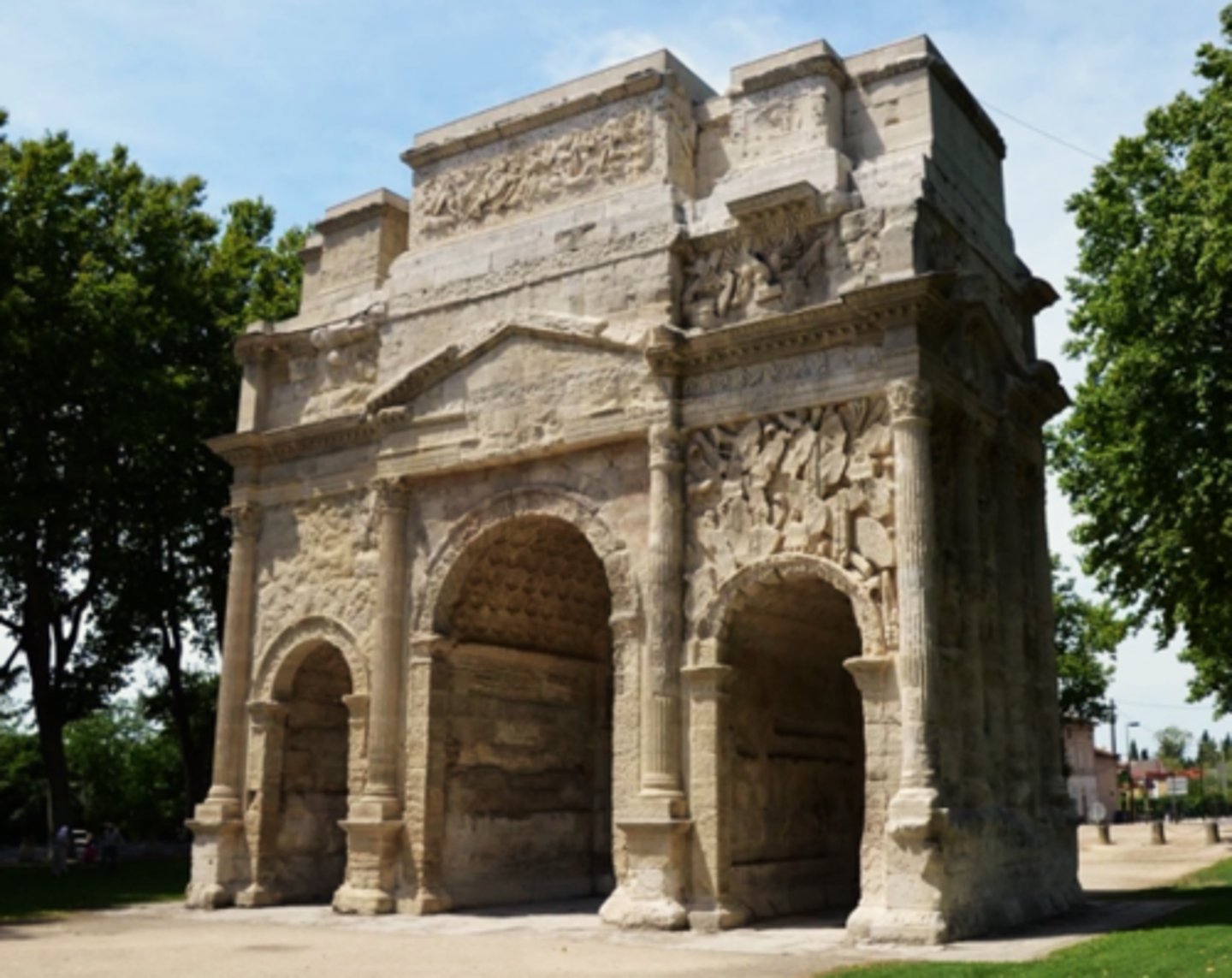chapter 5 - 9 vocublary key terms and sites
1/65
There's no tags or description
Looks like no tags are added yet.
Name | Mastery | Learn | Test | Matching | Spaced |
|---|
No study sessions yet.
66 Terms
ashlar masonry
carefully cut and regularly shaped blocks of stone used in construction, fitted together without mortar
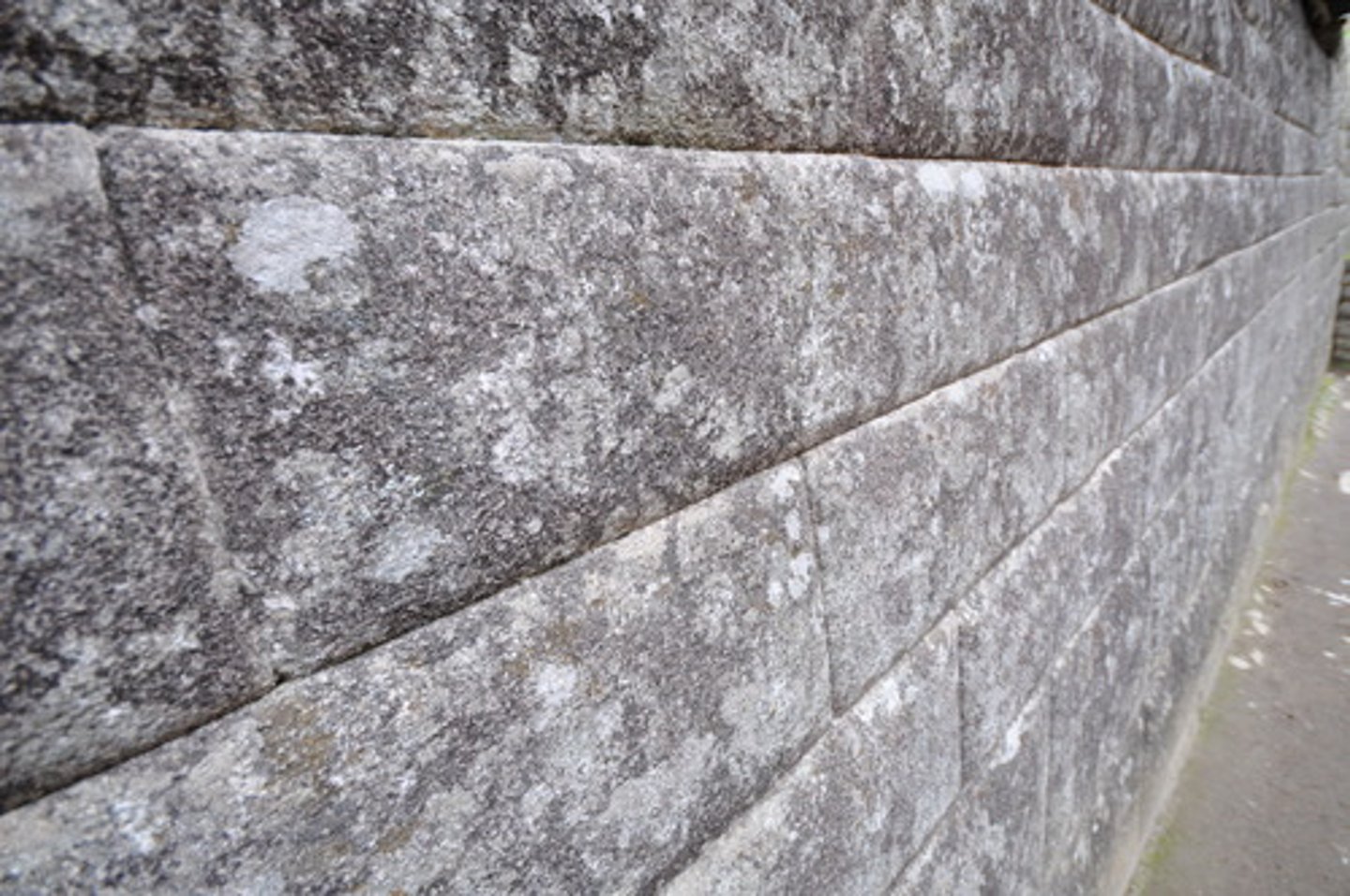
citadel
a fortress overlooking a city; a stronghold; serving as the last line of defence
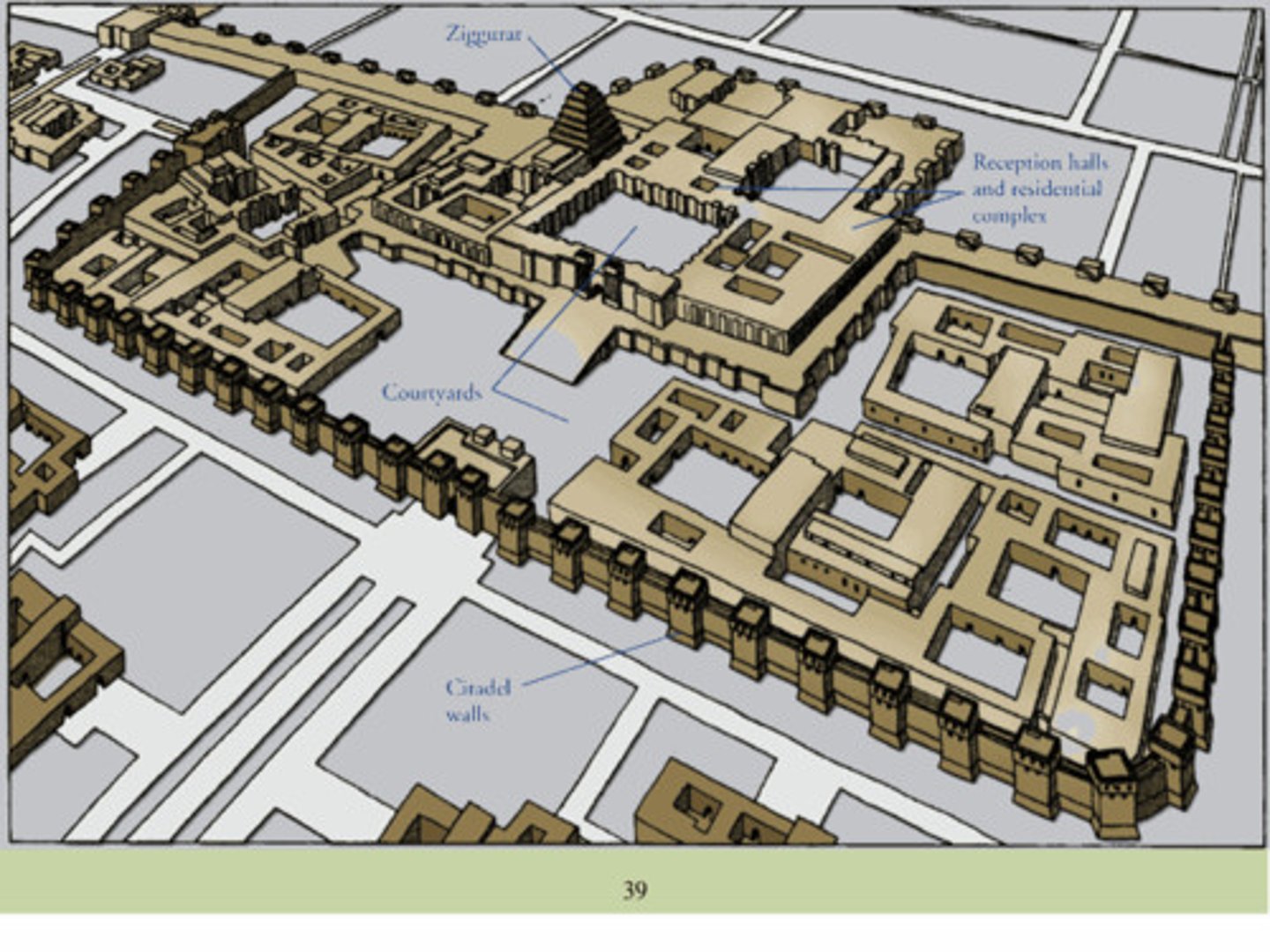
cyclopean masonry
a type of stonework found in Mycenaean architecture, built with massive limestone boulders, roughly fitted together with minimal clearance between adjacent stones and no use of mortar.
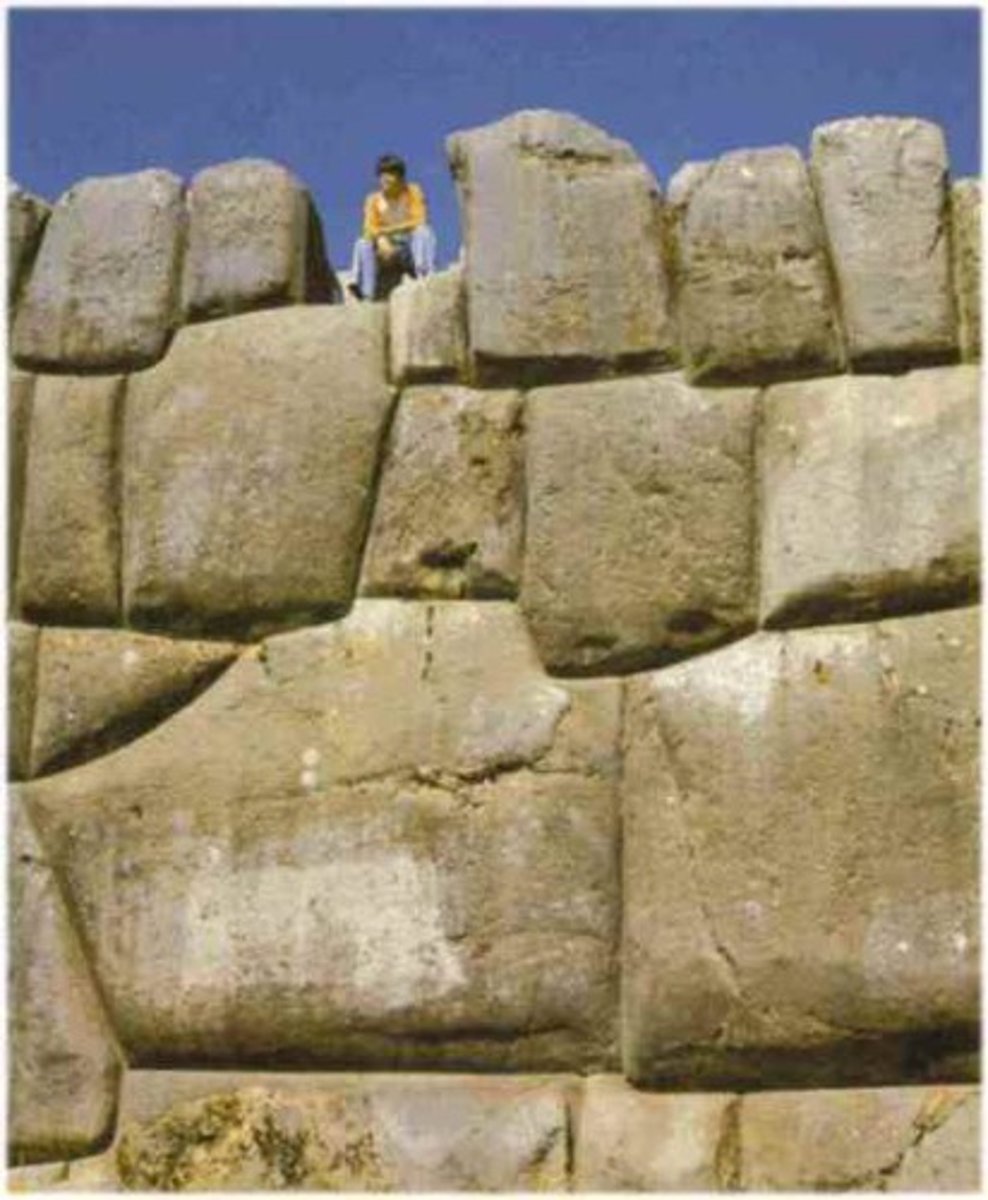
megaron
The main hall of a Mycenaean palace or grand house.
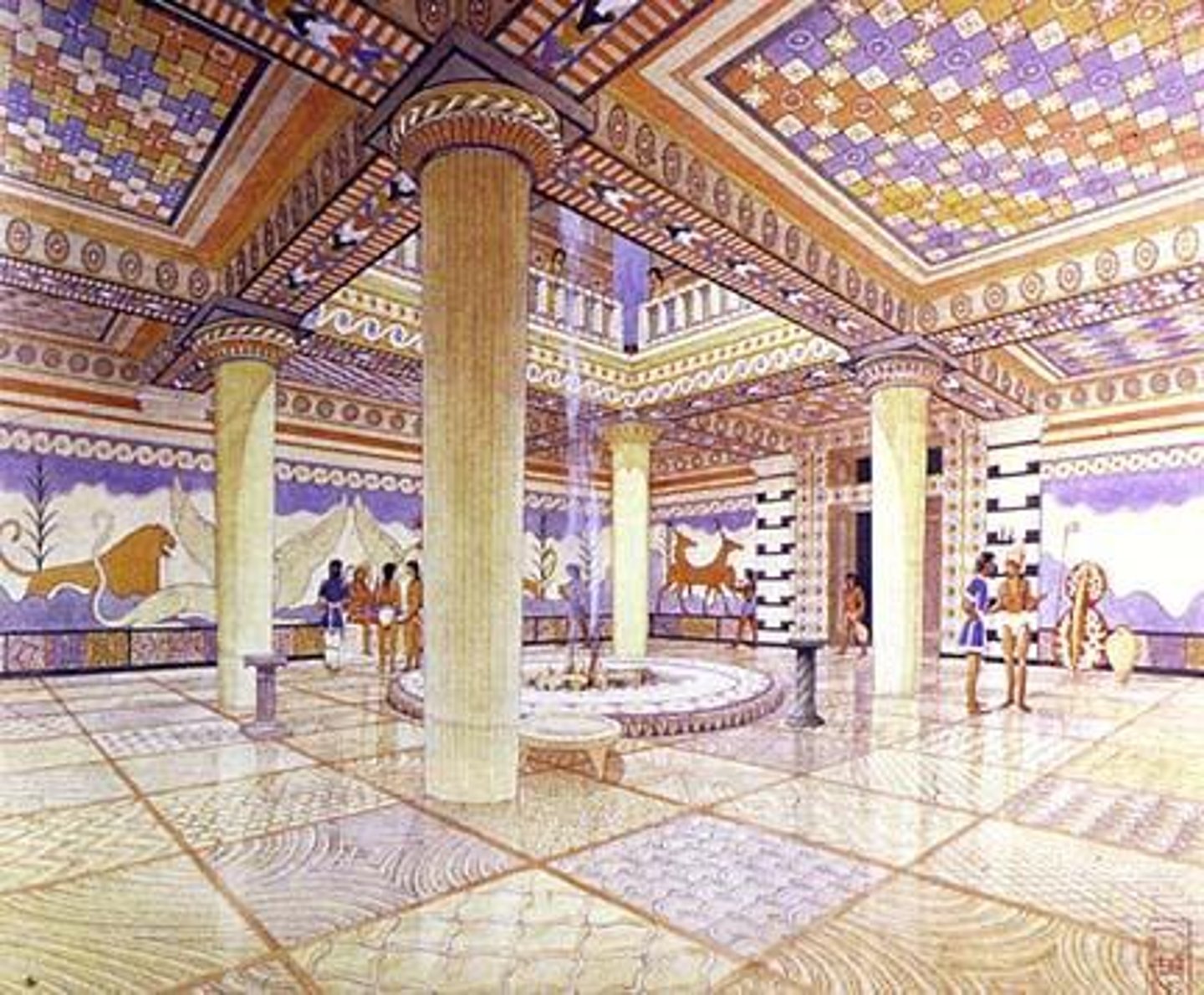
Palace of Knossos, Greece, 1600 BCE
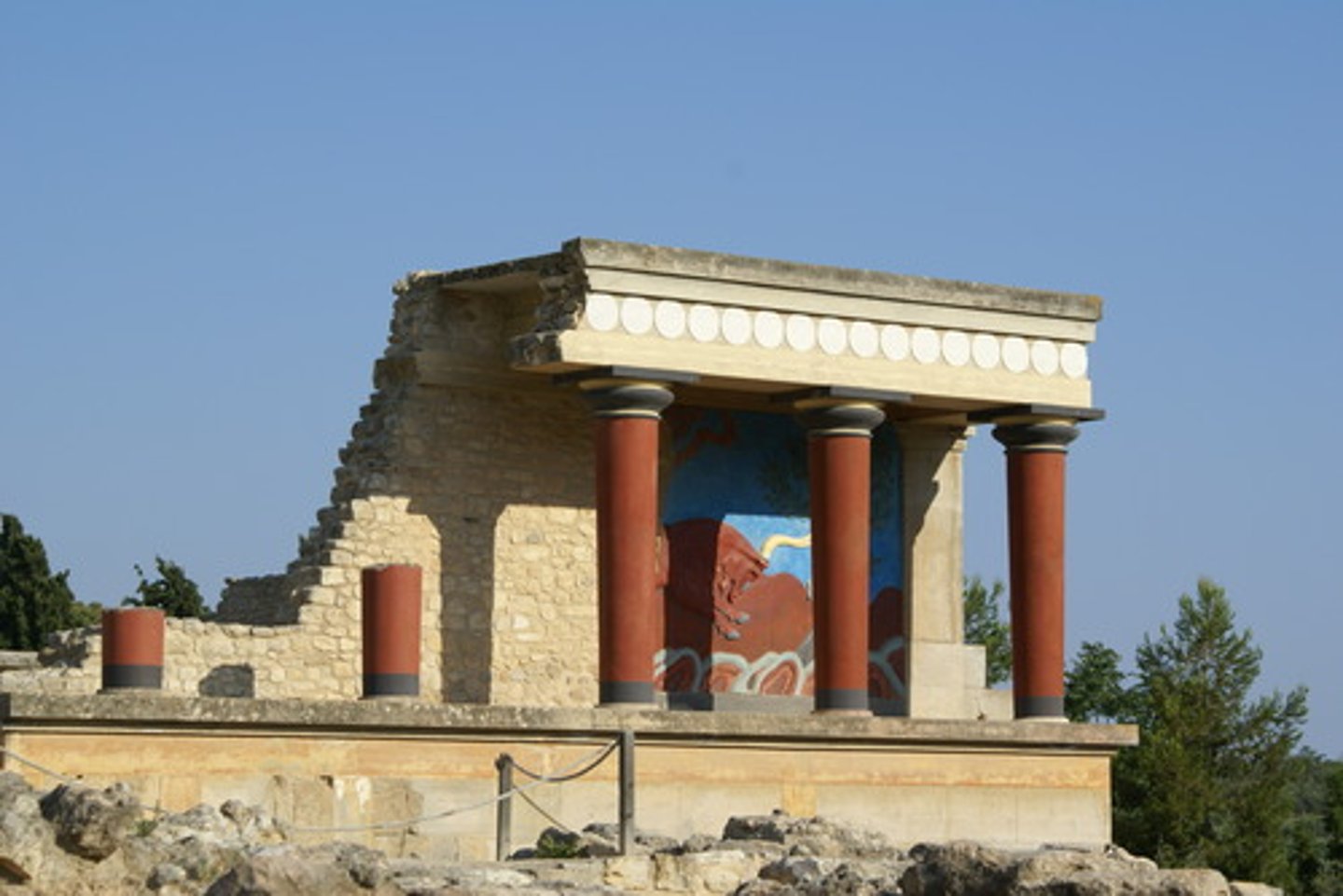
Lion Gate at Citadel of Mycenae, Greece, 1300 BCE
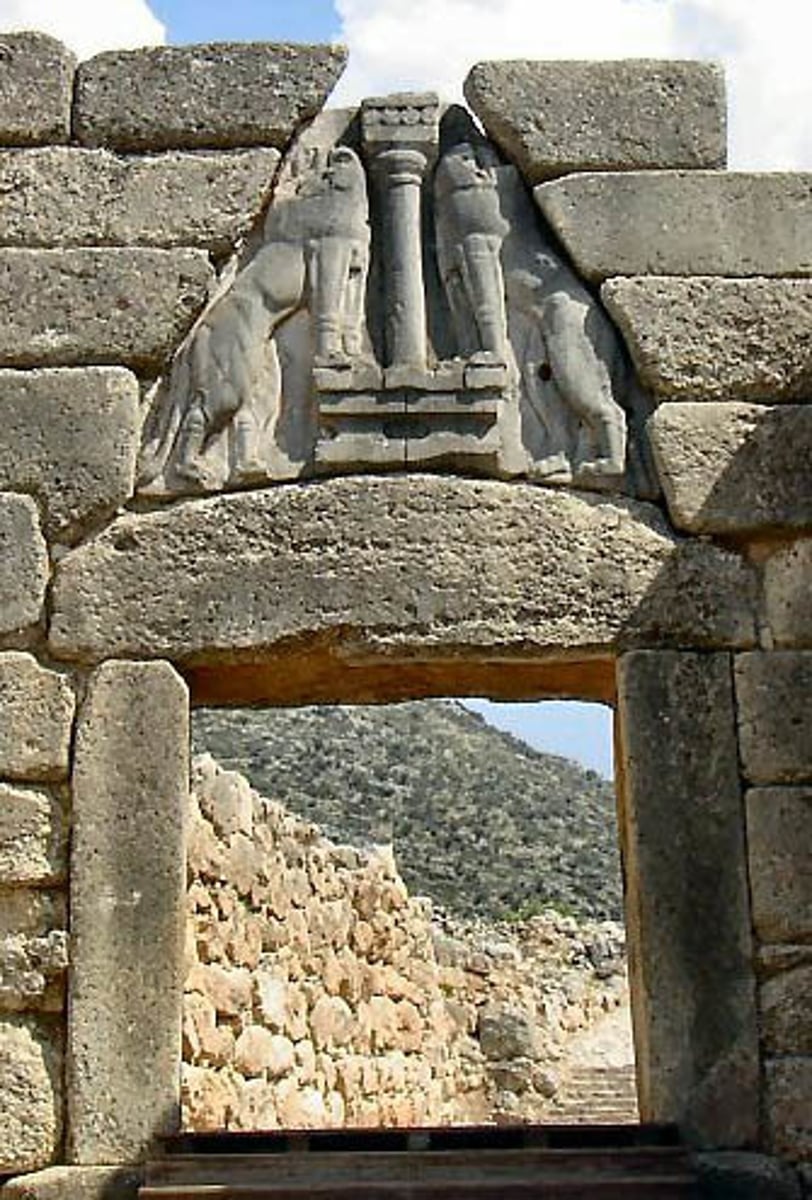
Citadel of Mycenae, Greece, 1300 BCE
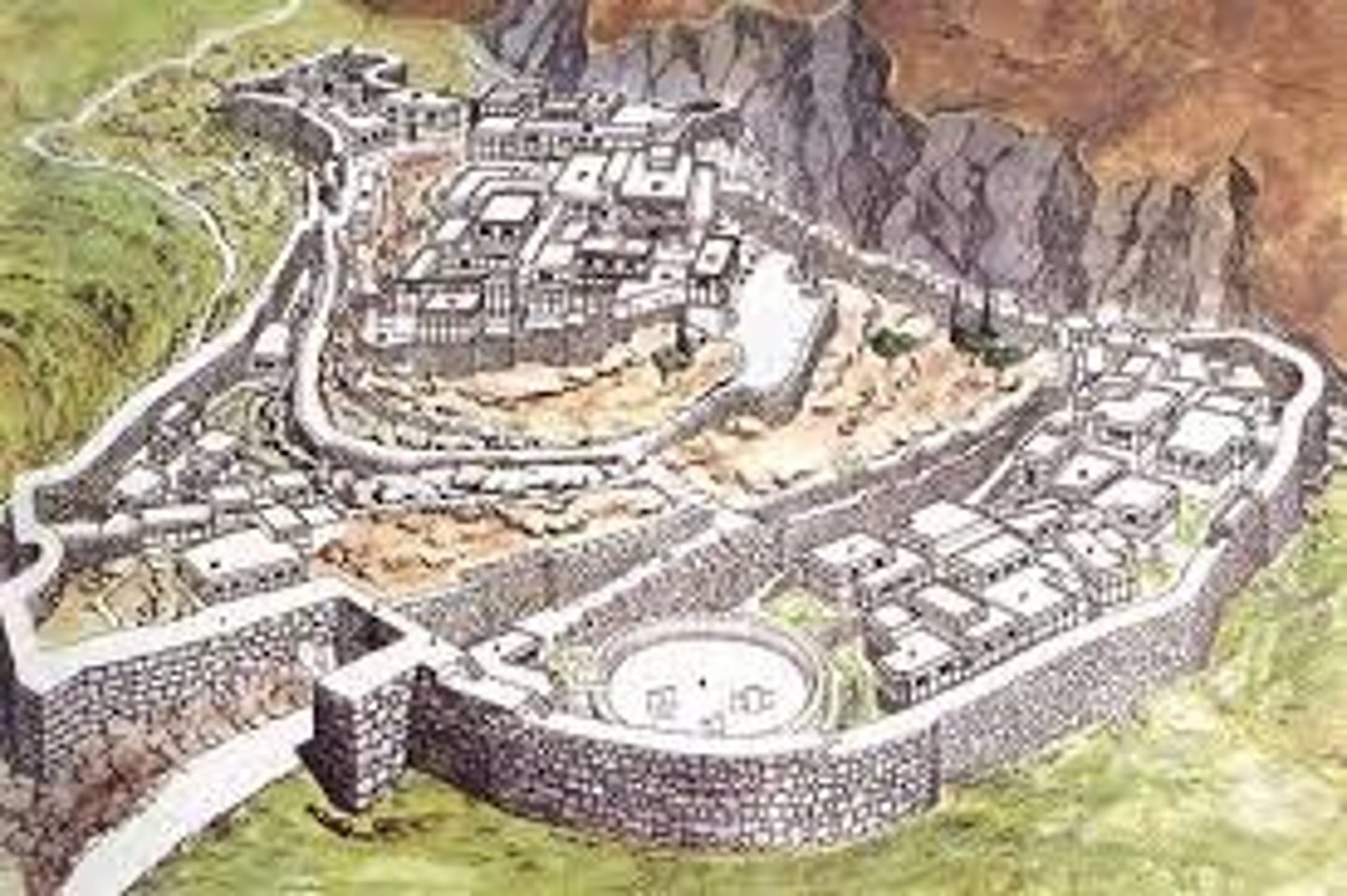
Tomb of Atreus, Mycenae, Greece 1250 BCE
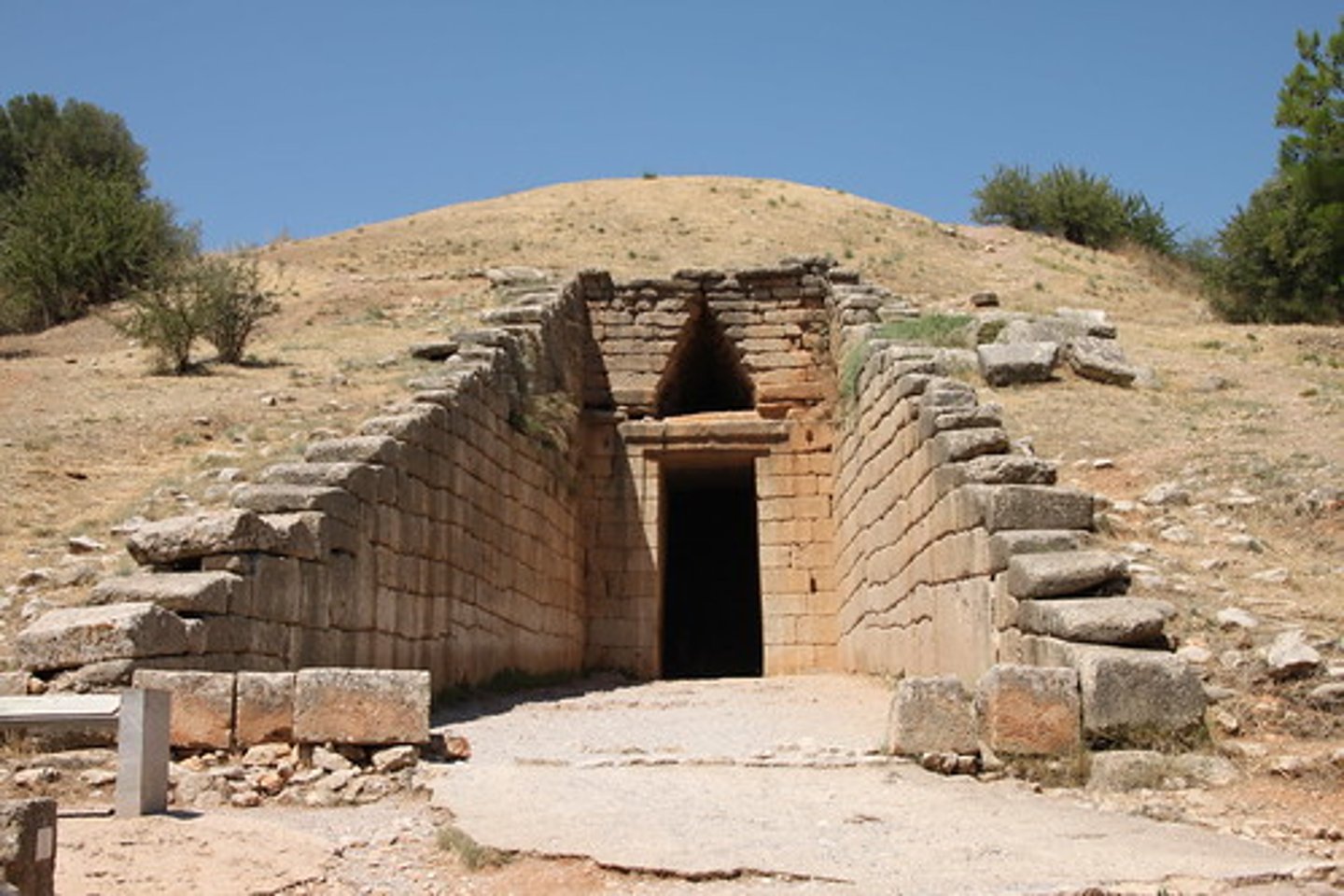
acropolis
A fortified hilltop in an ancient Greek city
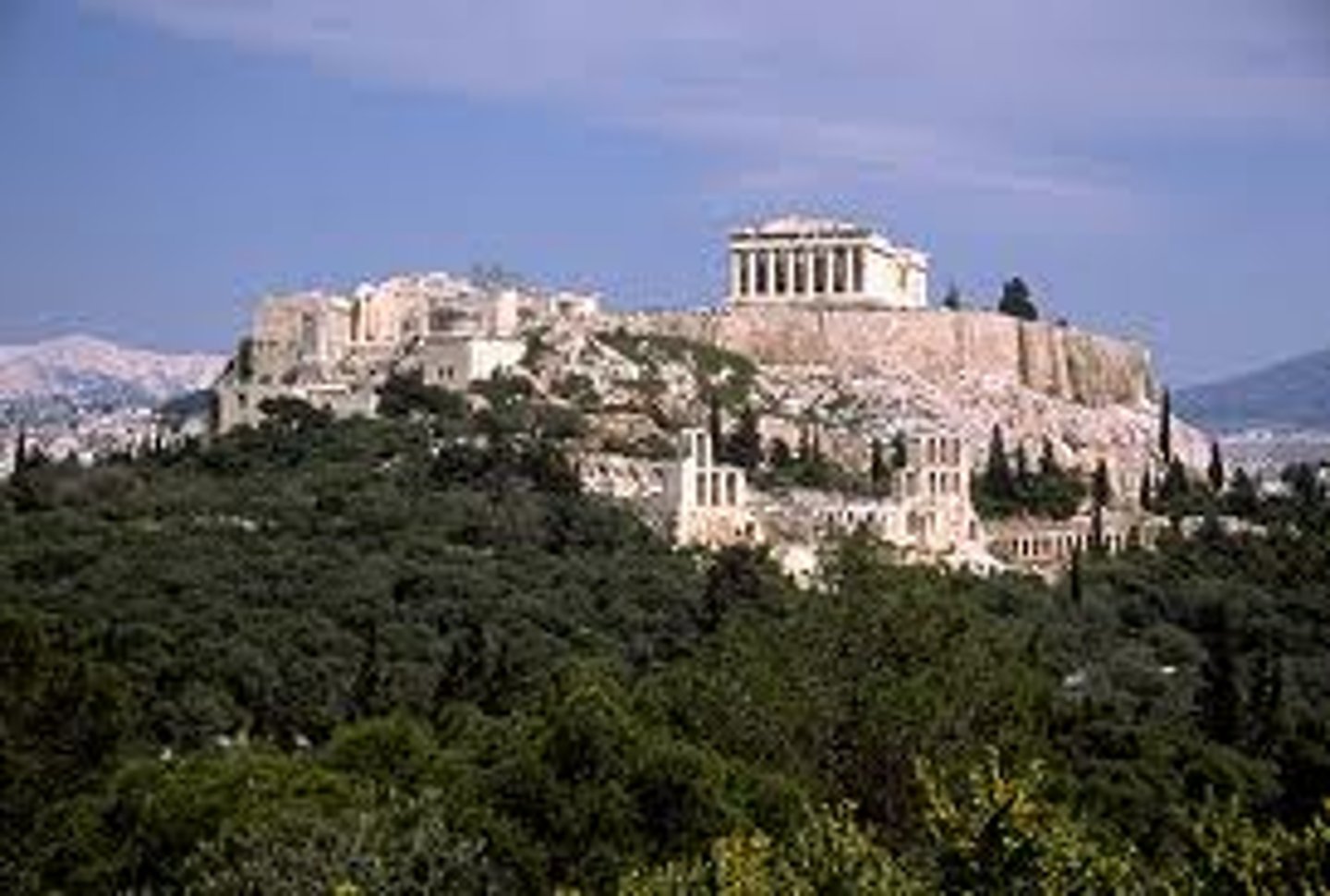
capital
the topmost member of a column, a transitional element that supports an arch or an entablature
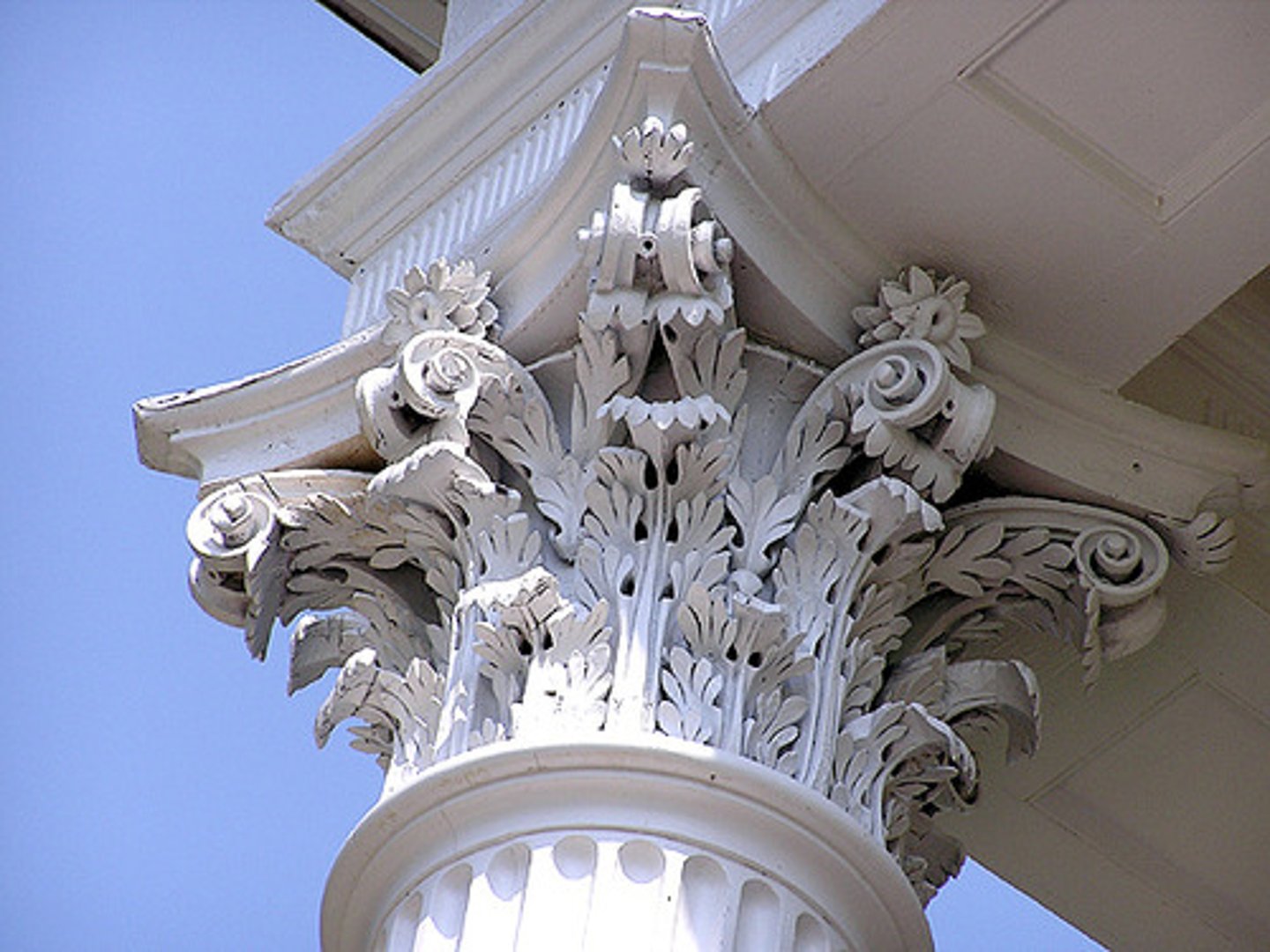
agora
a public open space used for assemblies and markets within ancient greek life
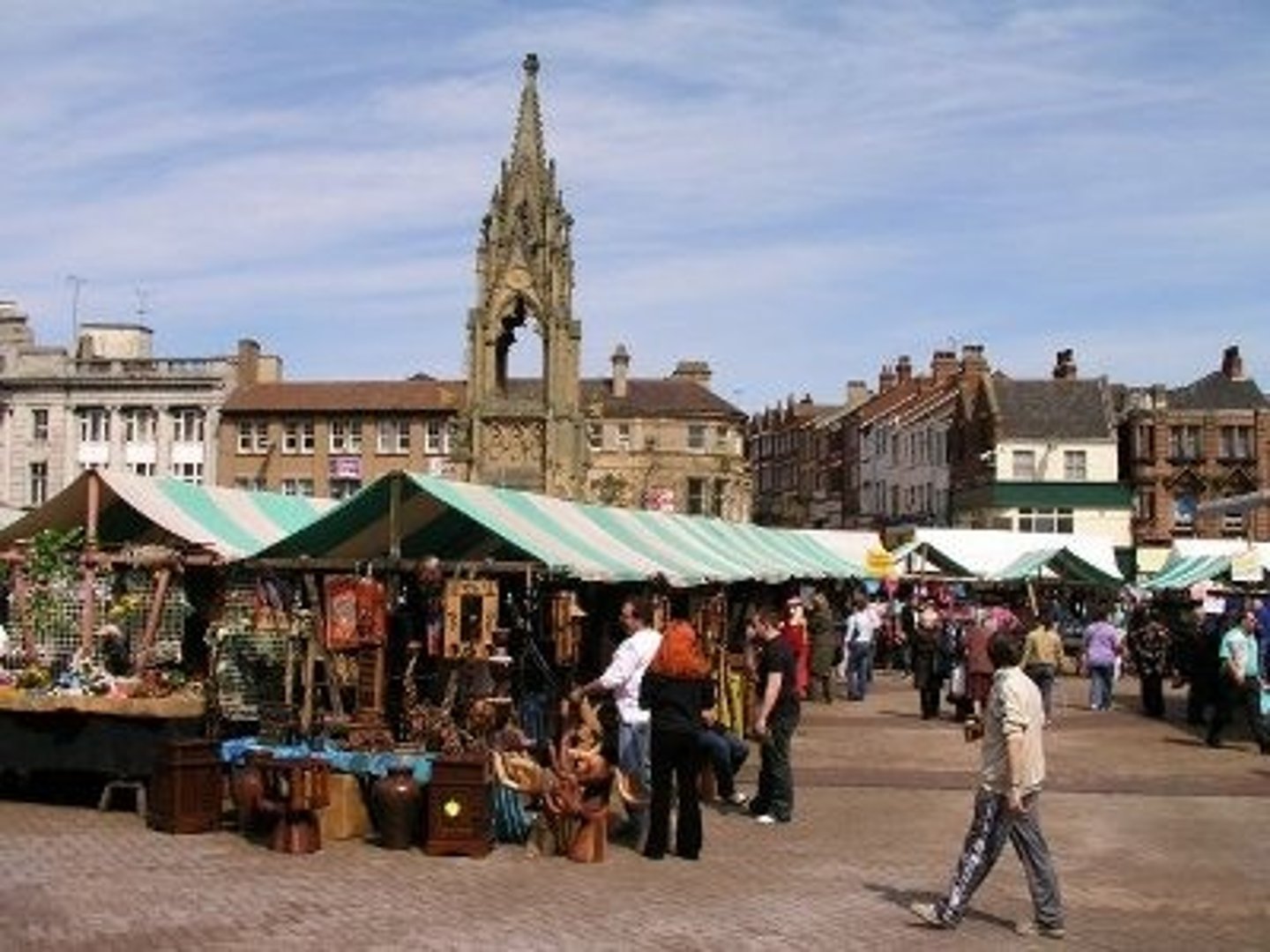
drum
one of the stacked cylindrical stones that form the shaft of a column; a cylindrical wall that supports a dome
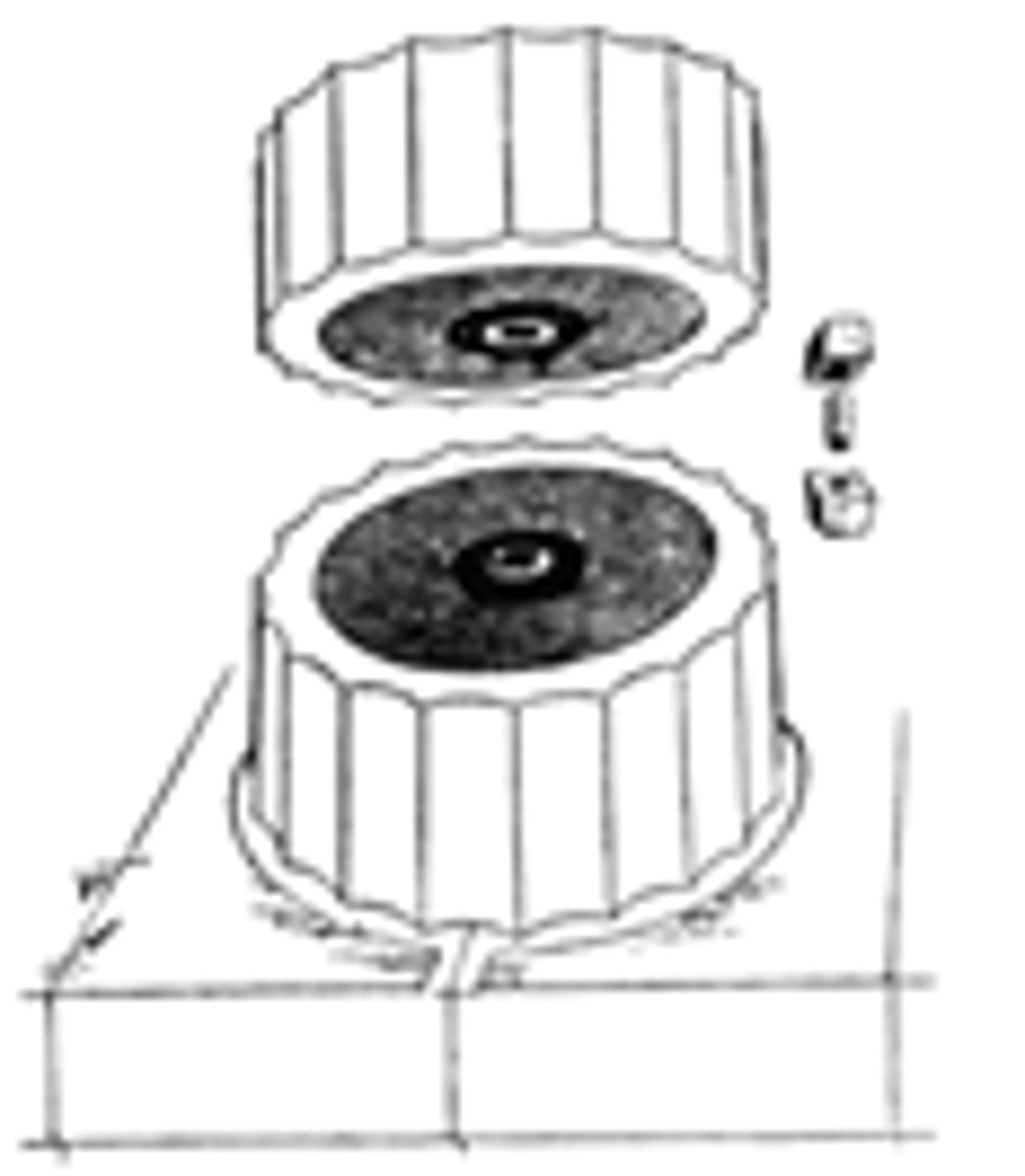
intercolumniation
spacing between columns
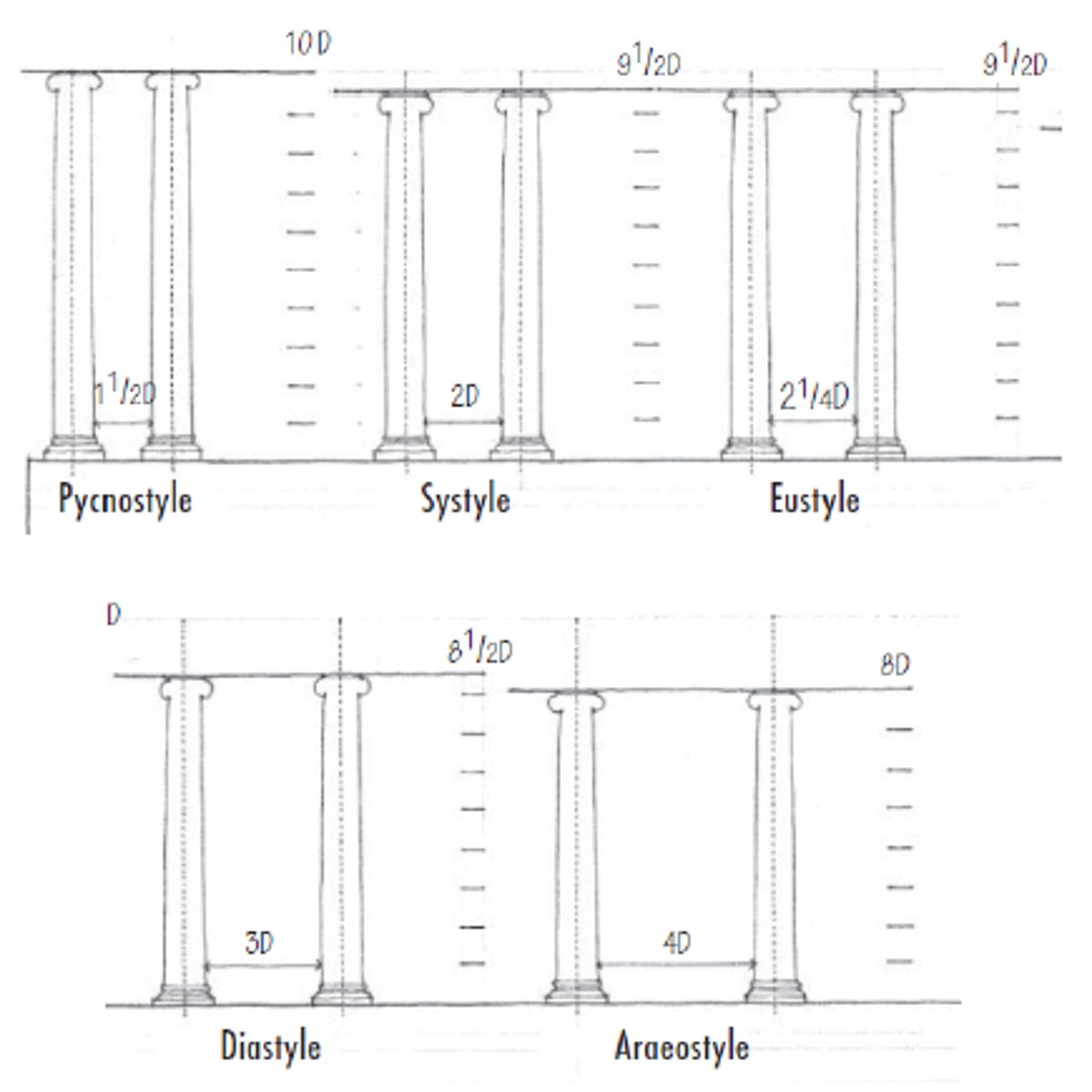
entasis
a slight convex curve in the shaft of a column, introduced to correct the visual illusion of concavity produced by a straight shaft.
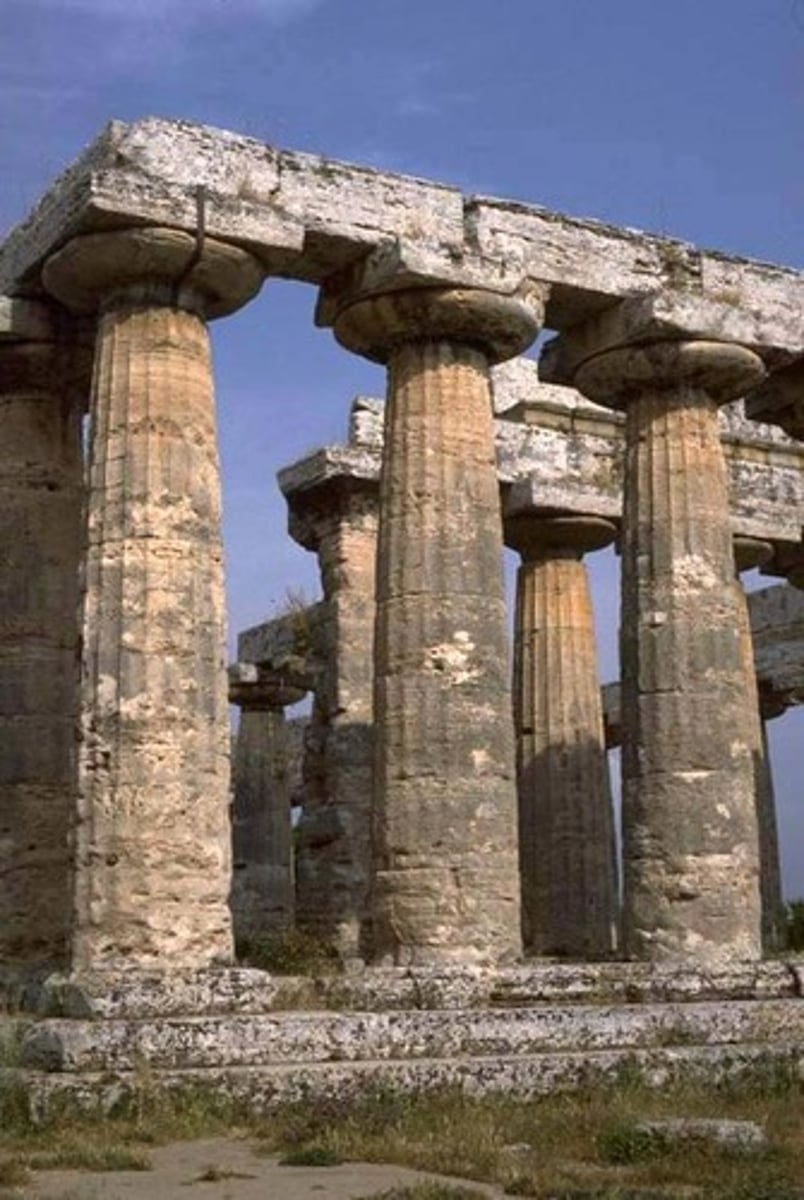
fluting
a series of shallow concave grooves, vertical on the shaft of a column.
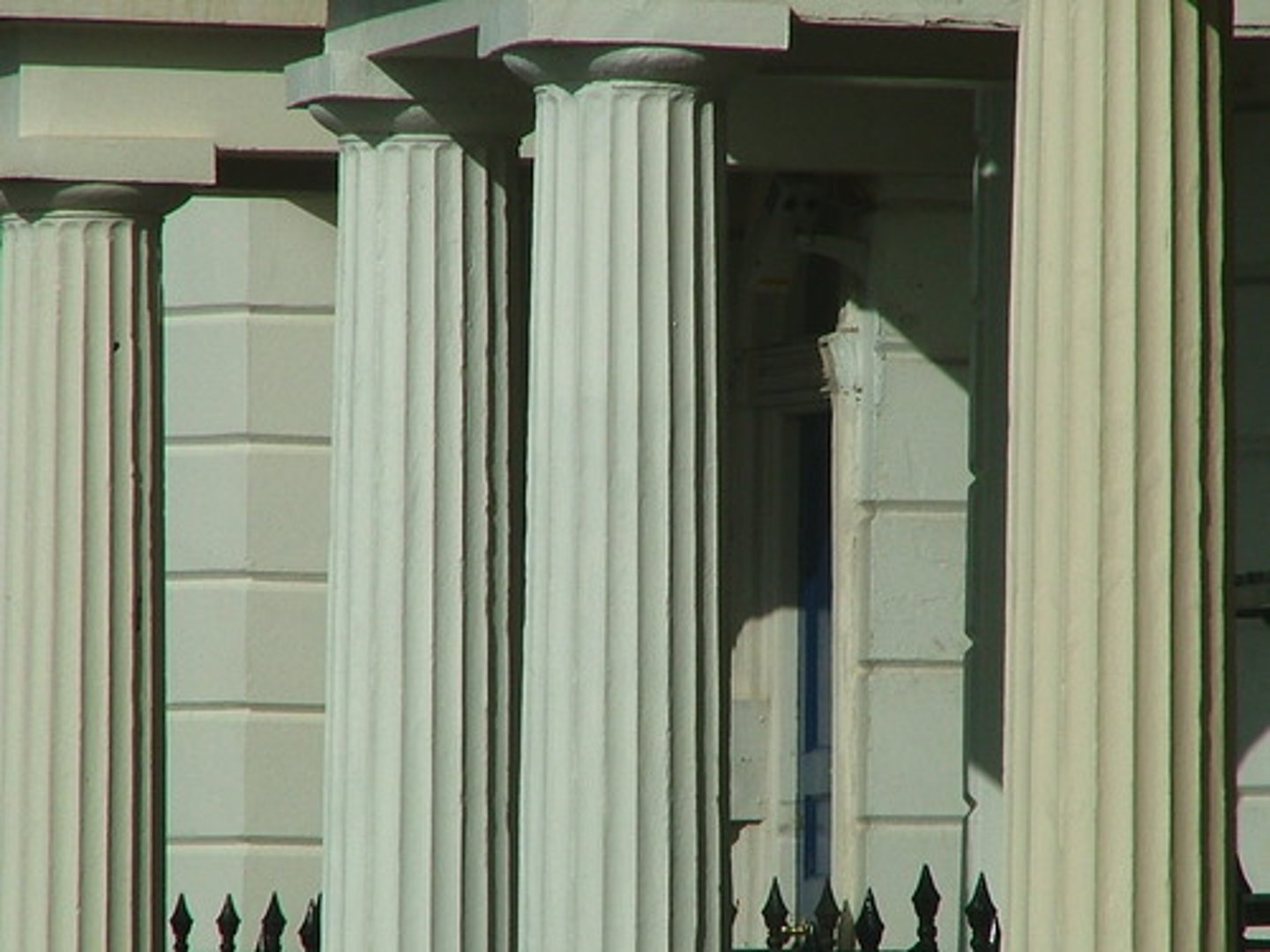
entablature
The structure consists of the part of a classical temple above the columns between the capital and the roof
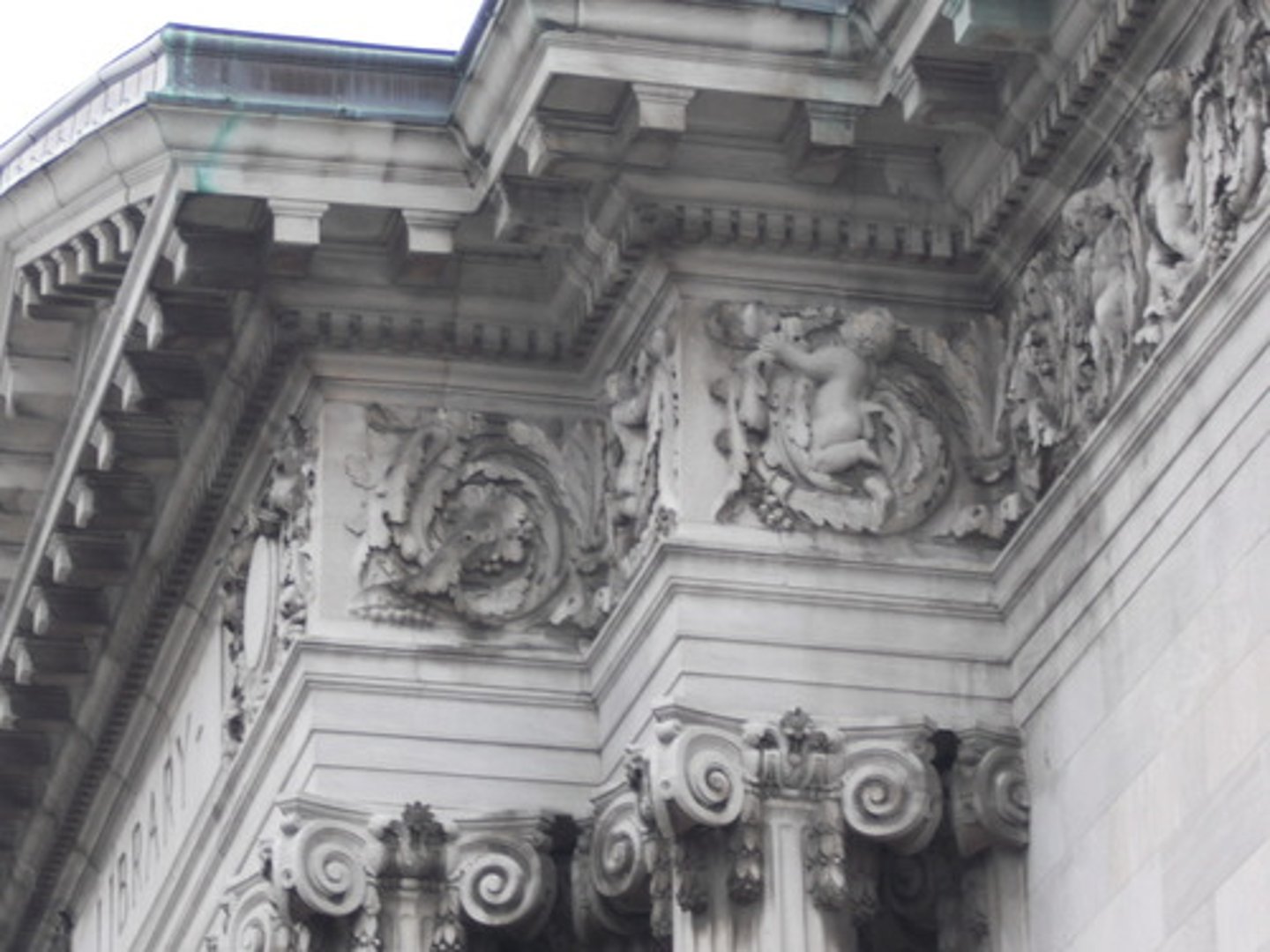
arcitrave
The lowest horizontal section of an entablature acts as the main beam that spans across columns supporting the frieze and cornice above
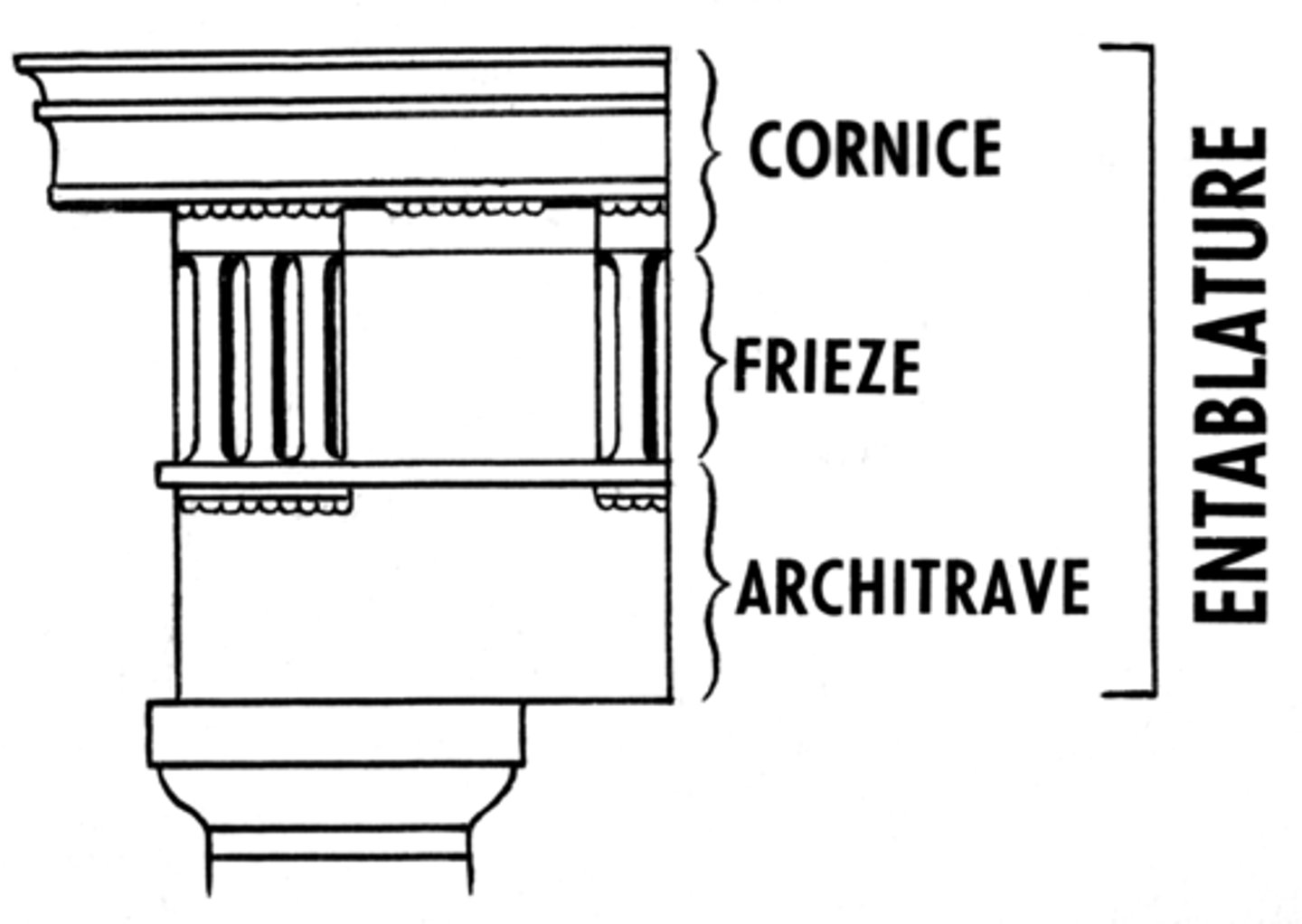
frieze
a broad horizontal band of sculpted or painted decoration, especially on a wall near the ceiling.
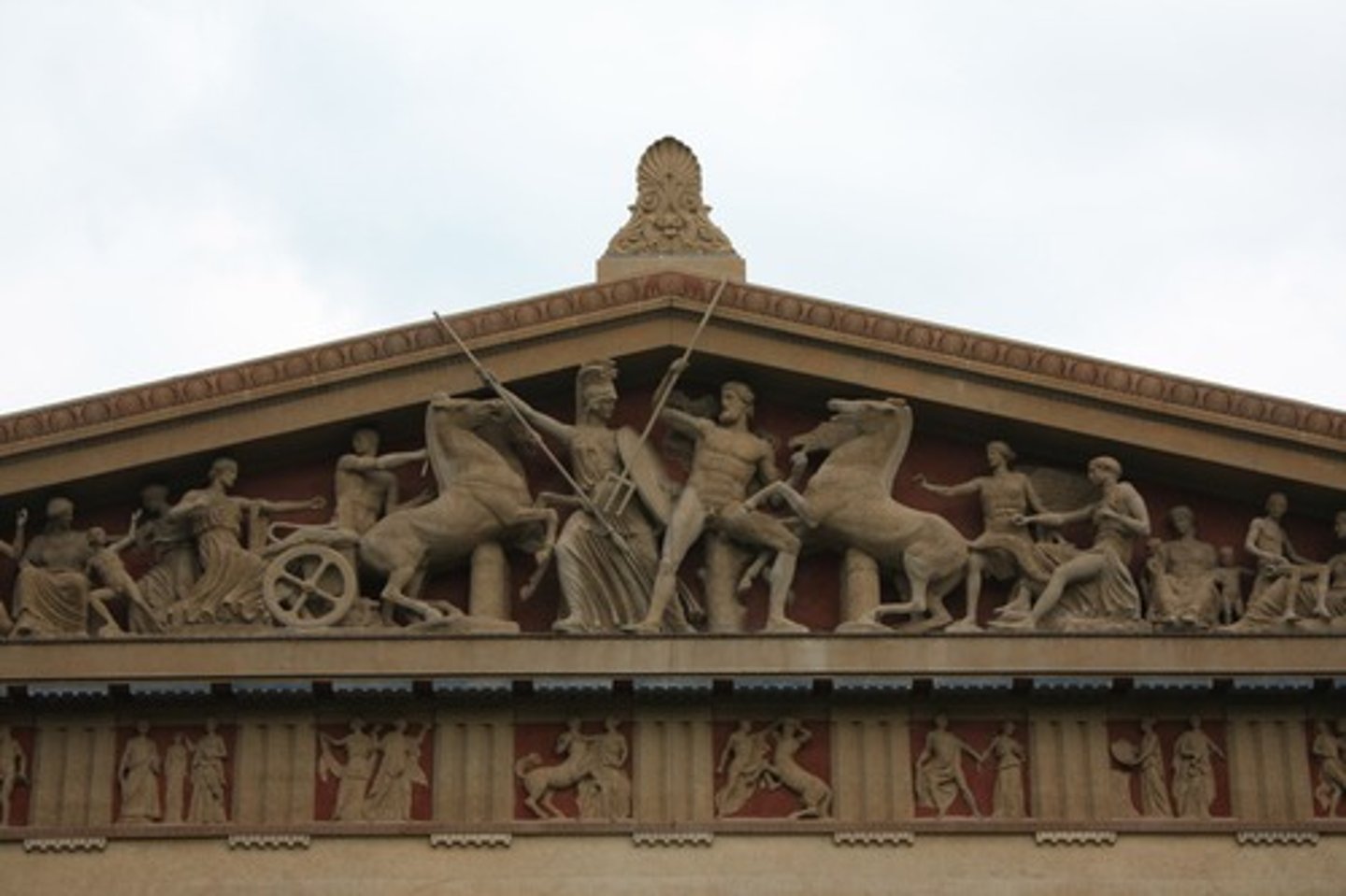
cella
The main section of a temple where the god is housed, located within the center of the building
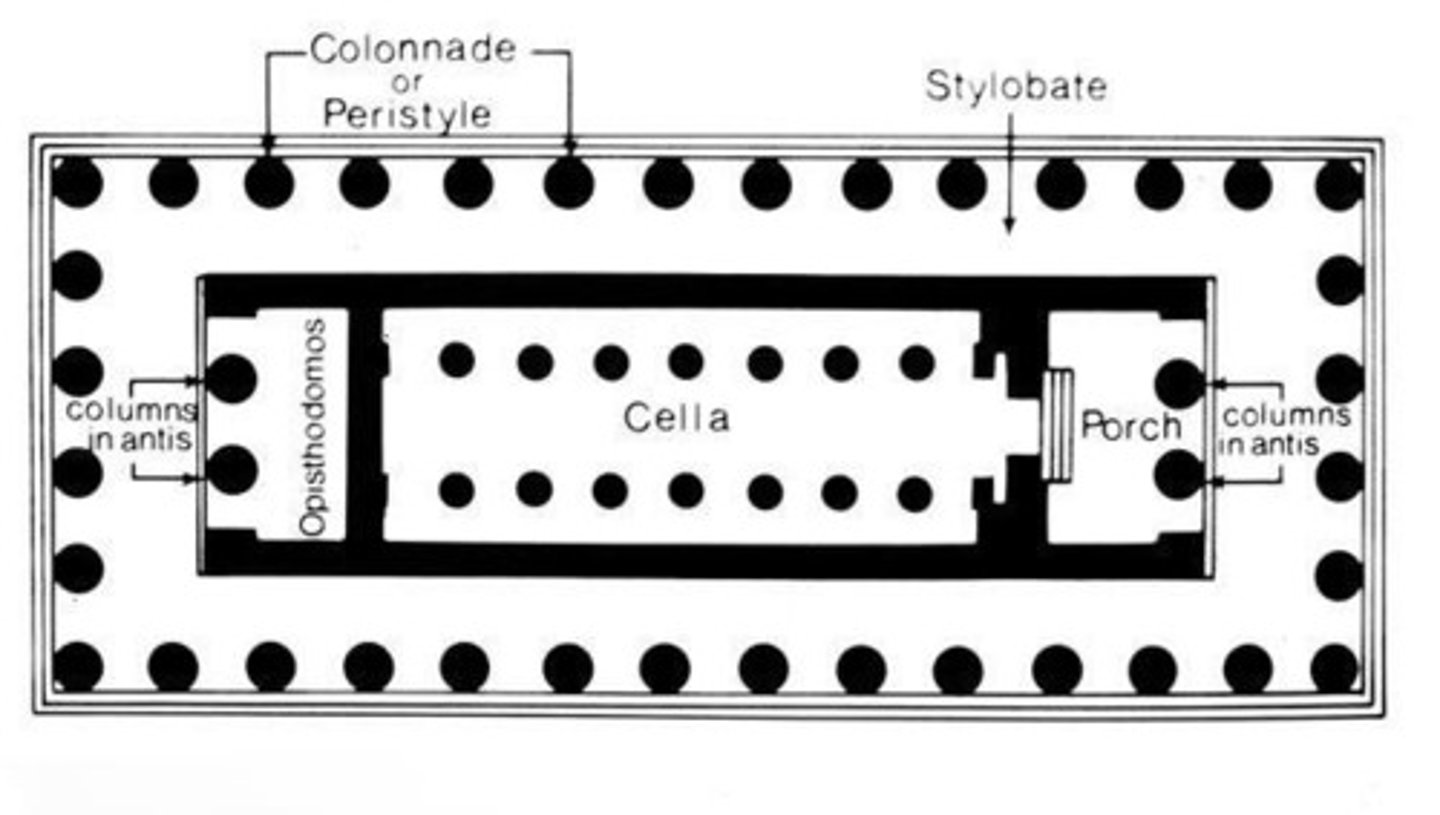
propylaea
The series of monuments and temples that make up the entrance to the Acropolis
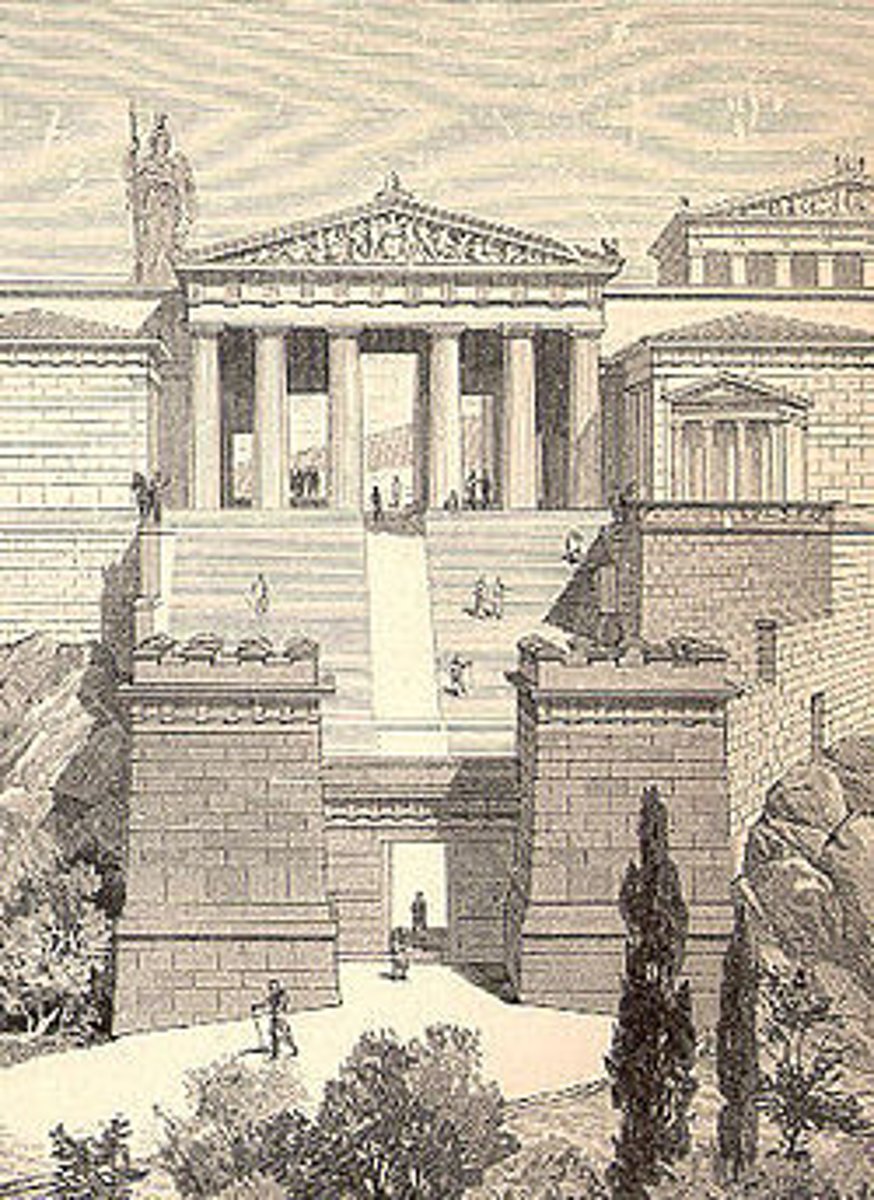
First Temple of Hera, Italy 550 BCE
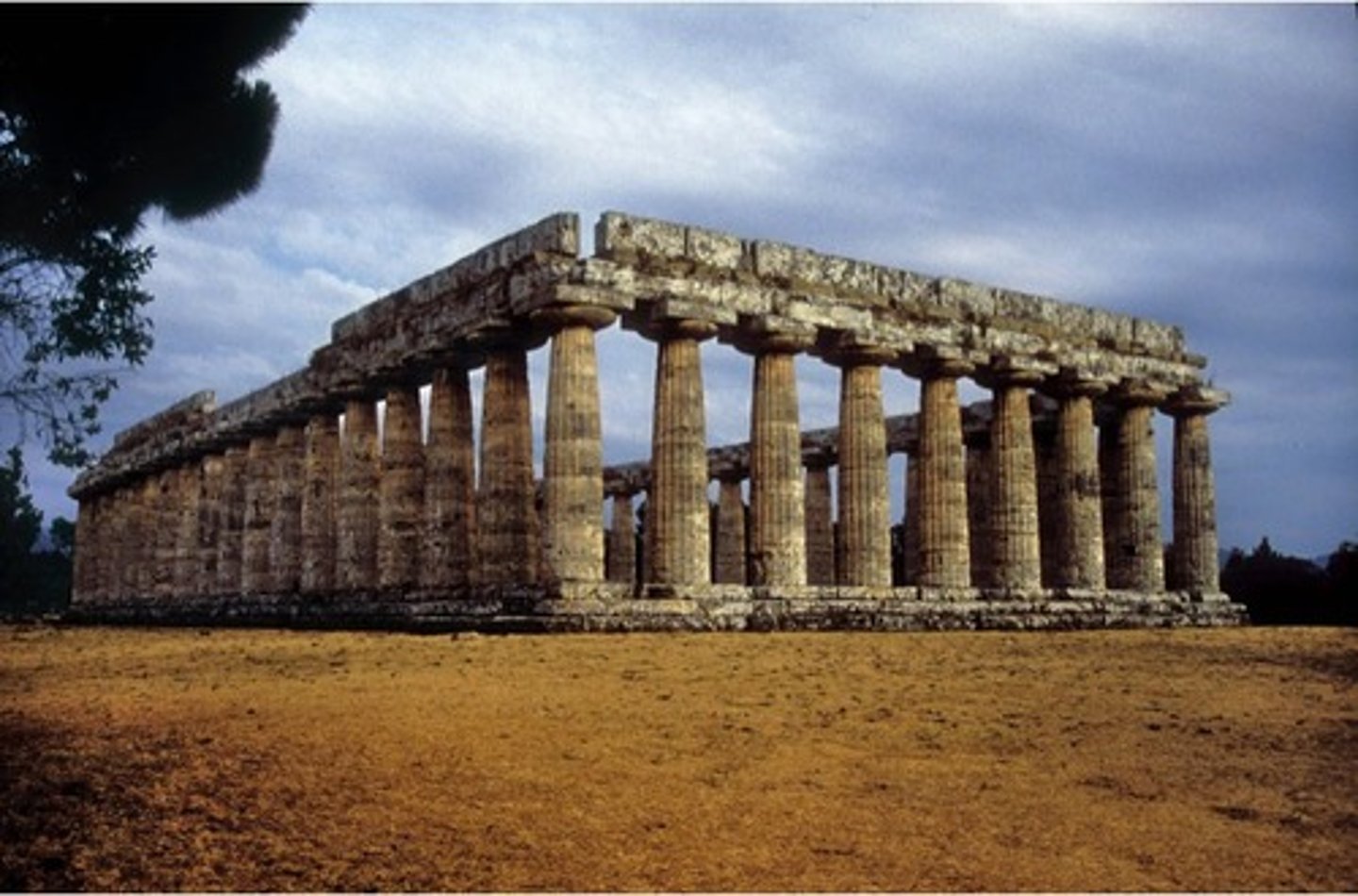
palace at persepolis, Iran, 515 BCE
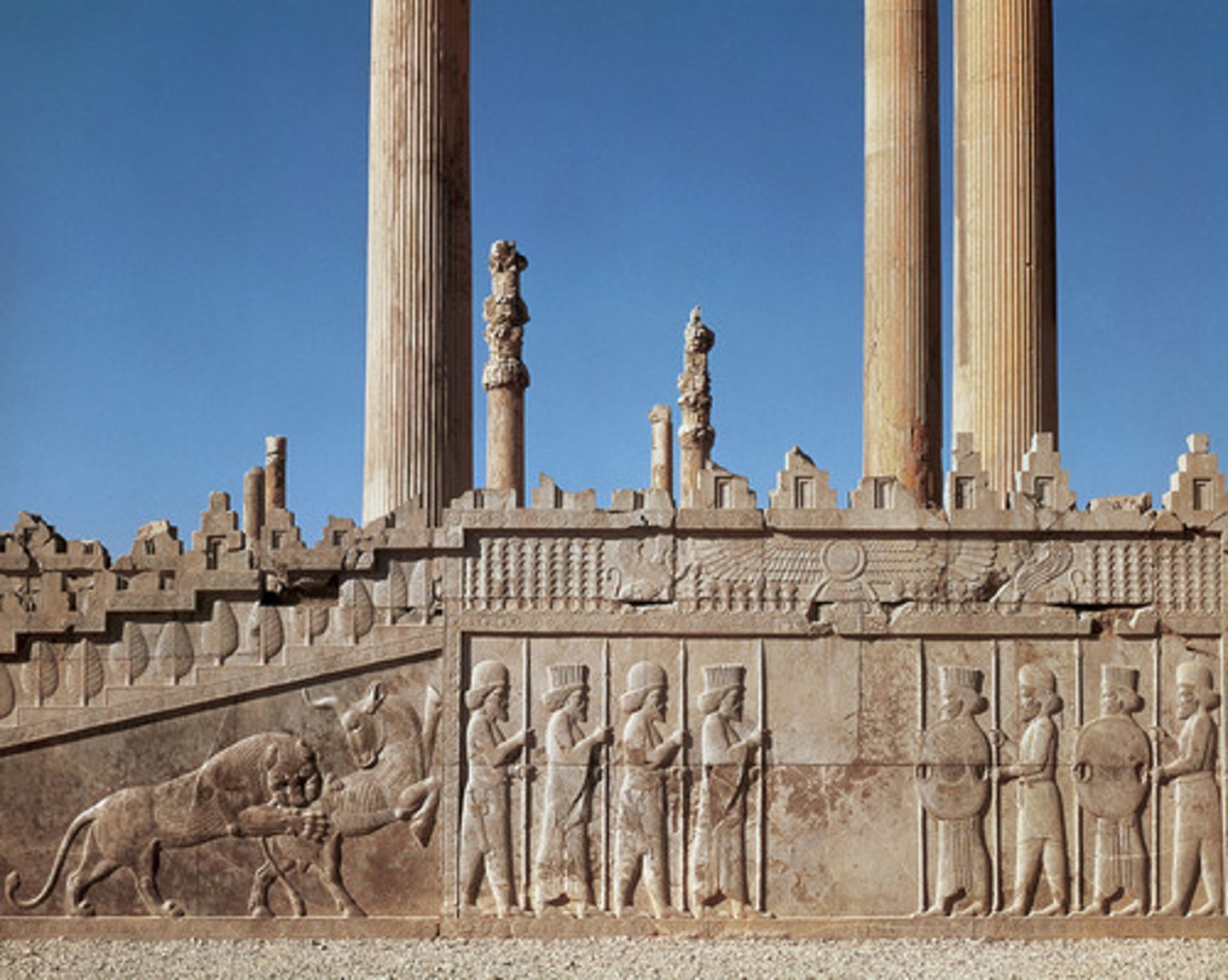
Milteus, Turkey, 480 BCE
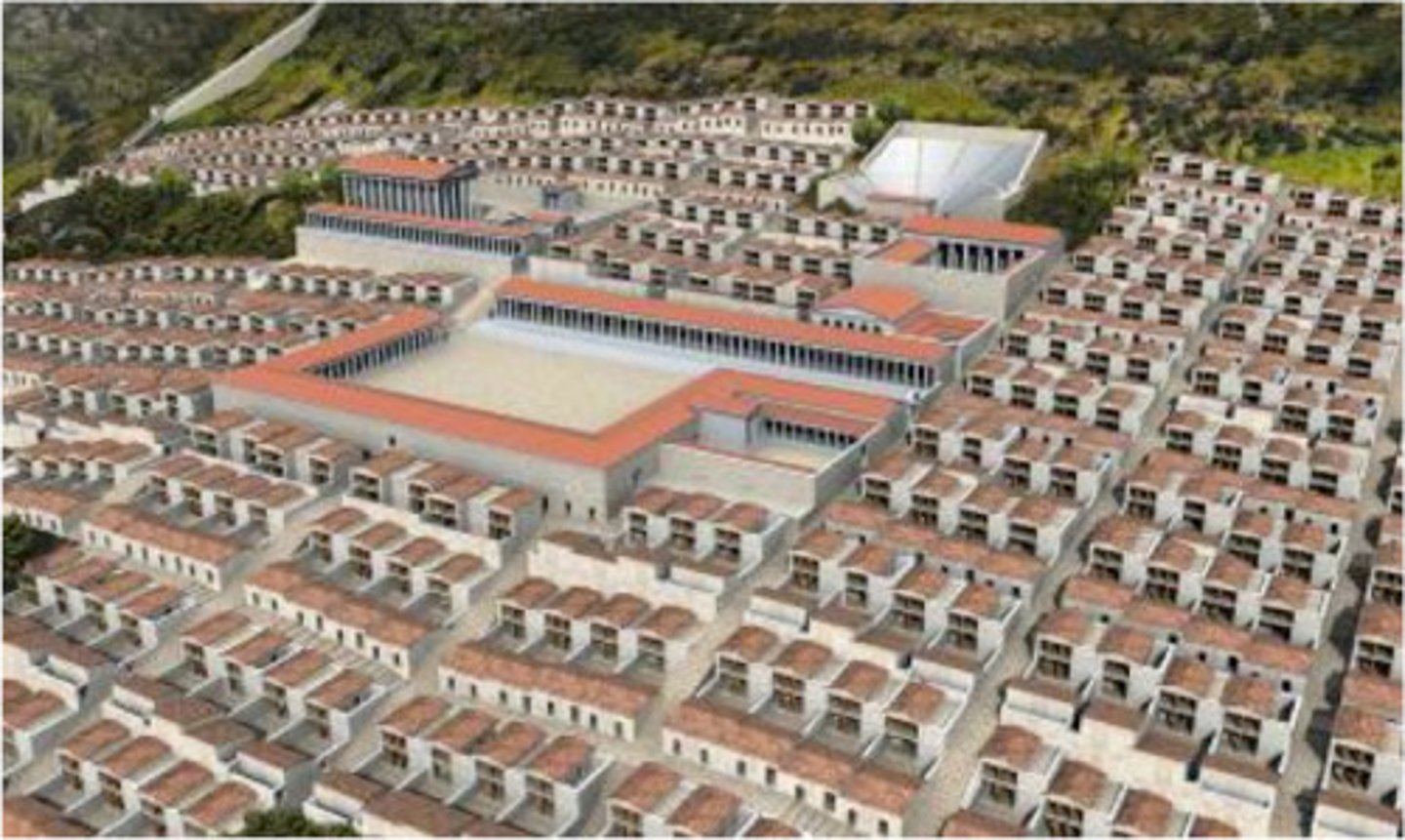
Partheon, Athens, Greece, 450 BCE
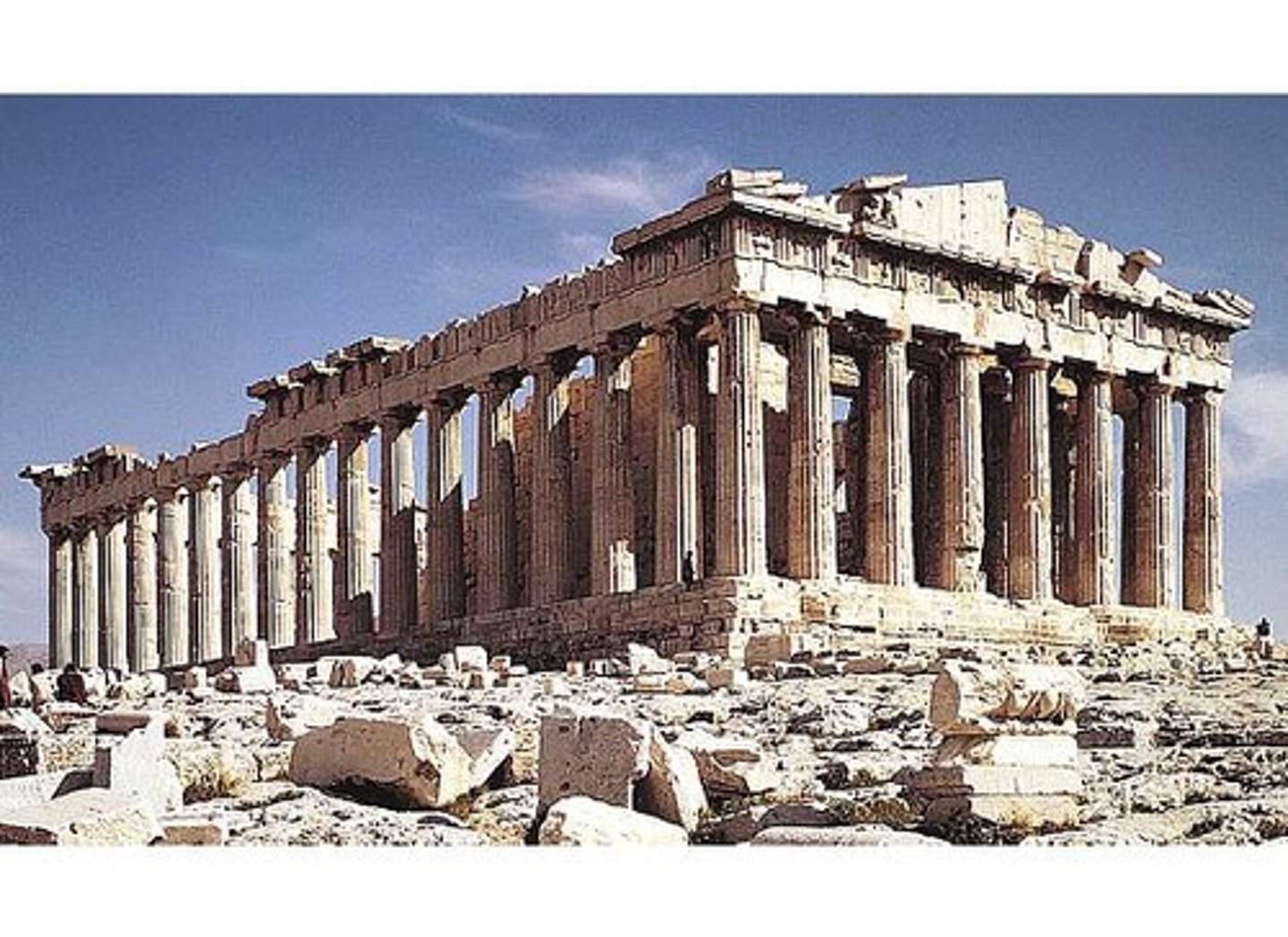
Priene, Turkey, 350 BCE
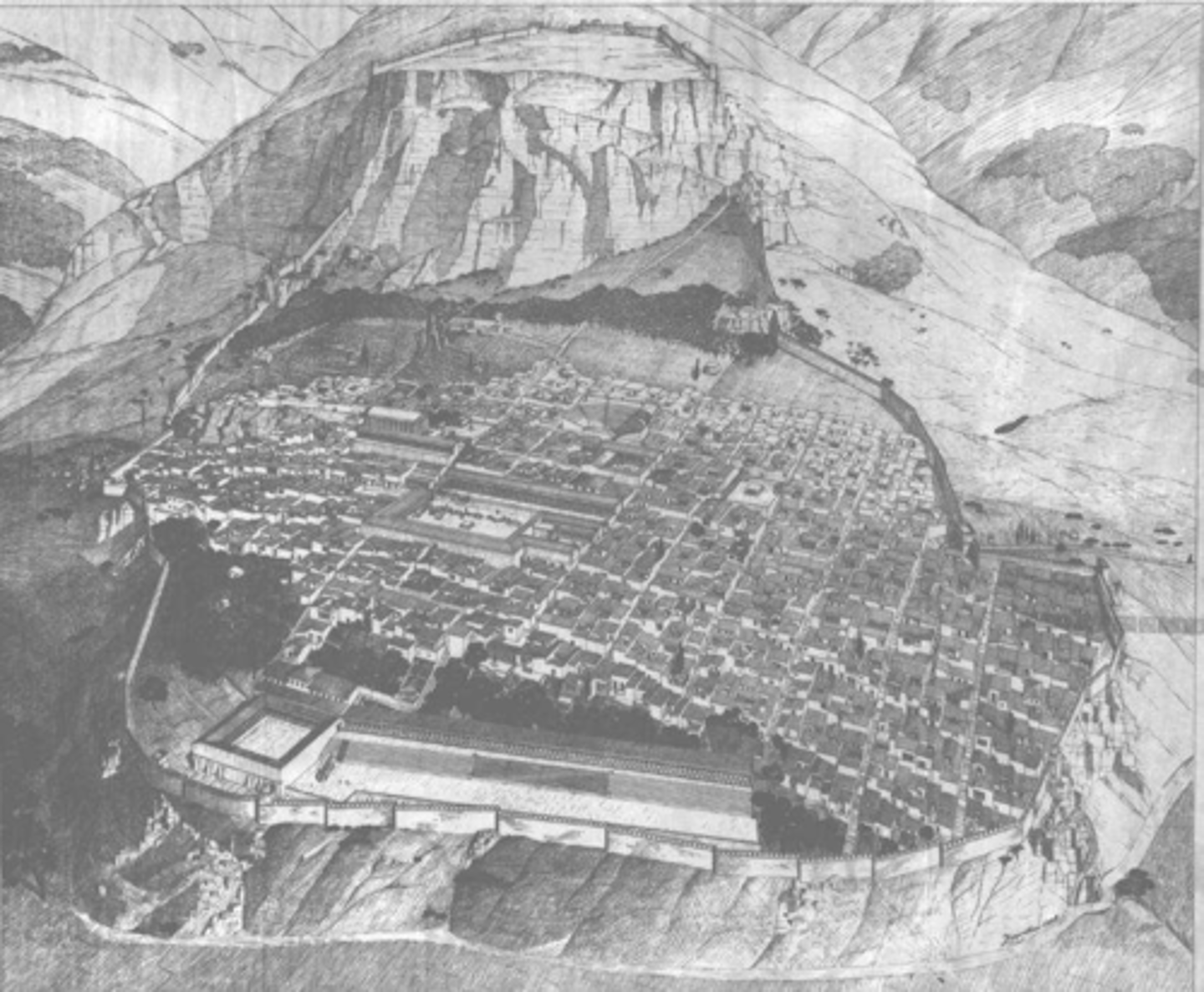
mesoamerica
A geographic region in the western hemisphere that was home of the Mayan and Aztec civilizations.
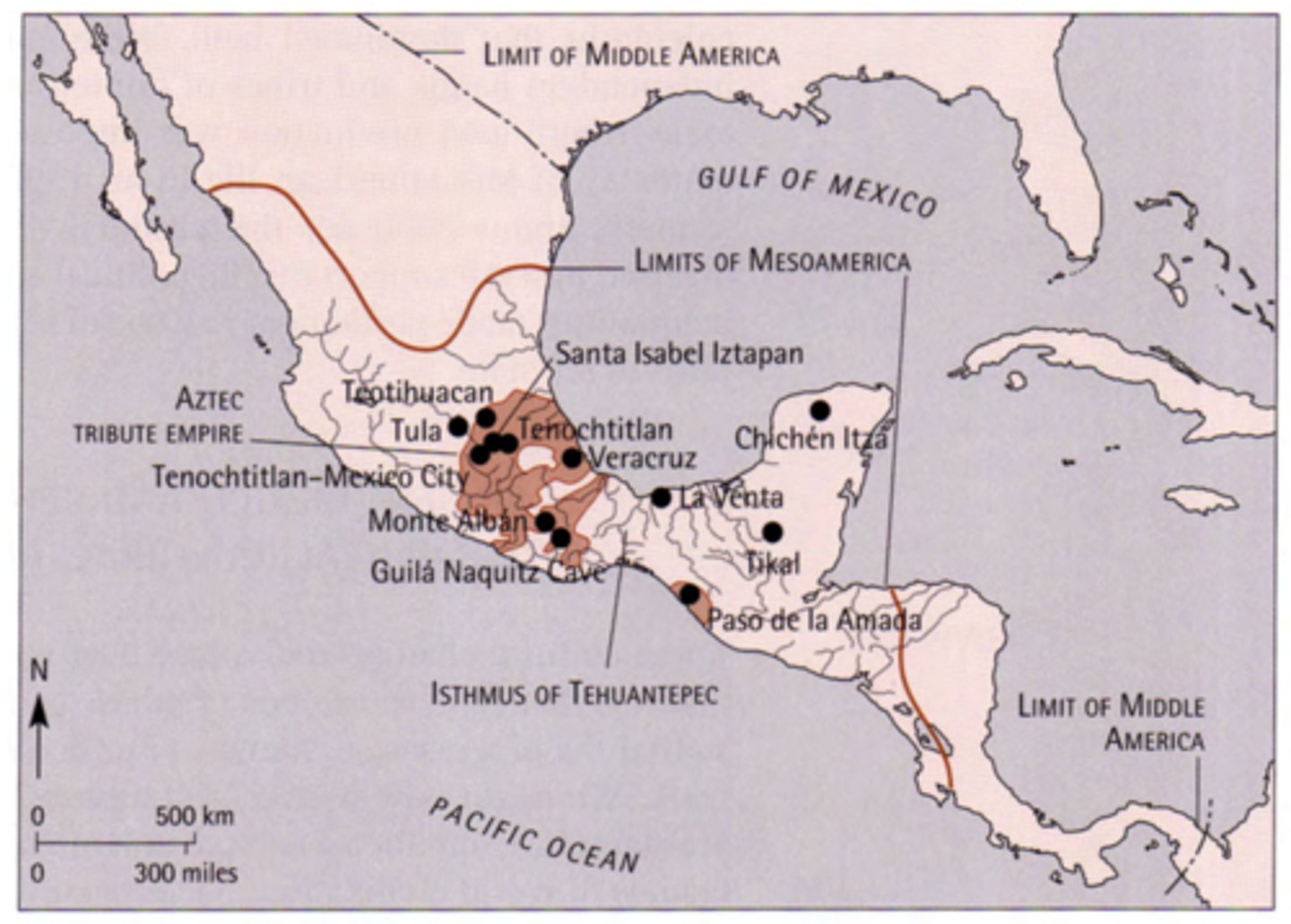
pre-columbian
history in the Americas before the arrival of Europeans (Columbus)
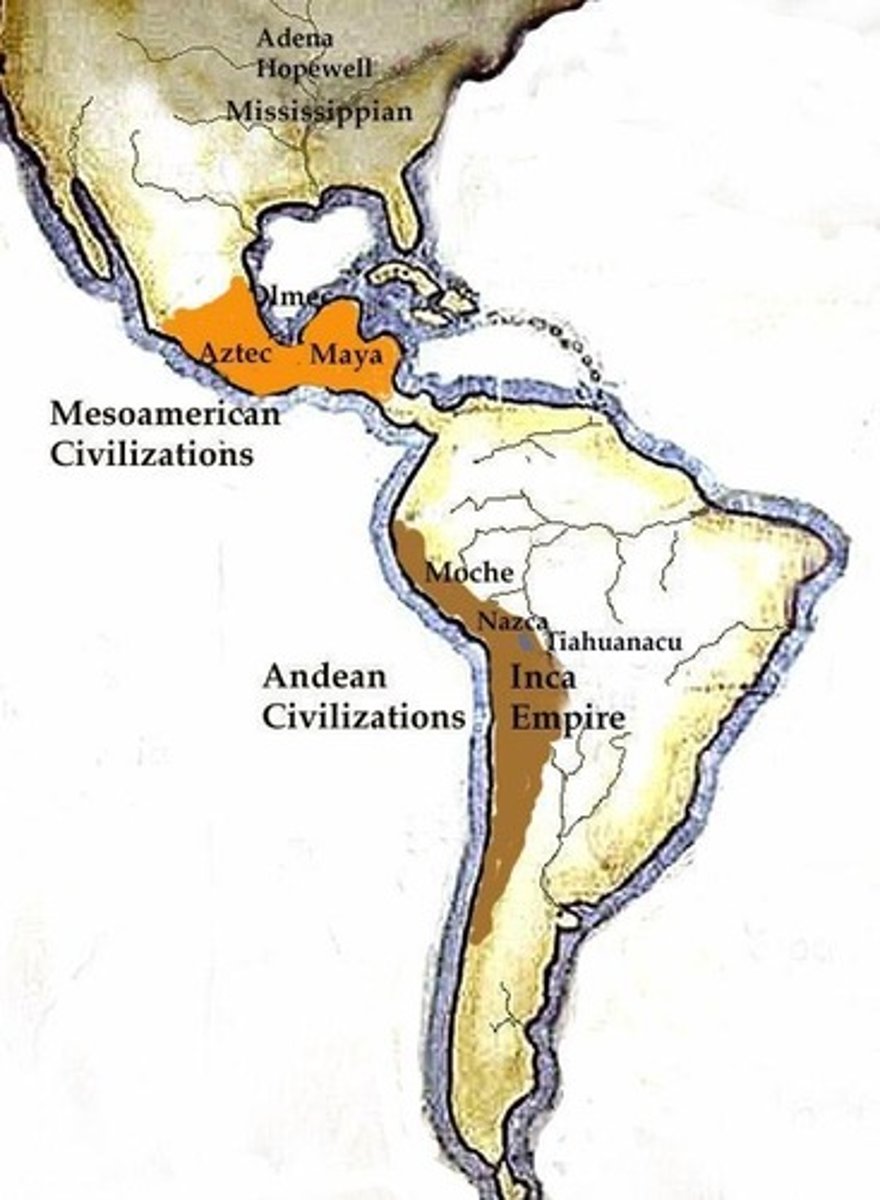
pre-hispanic
time period existing before the arrival of the Spanish in the New World; synonymous with pre-Columbian.
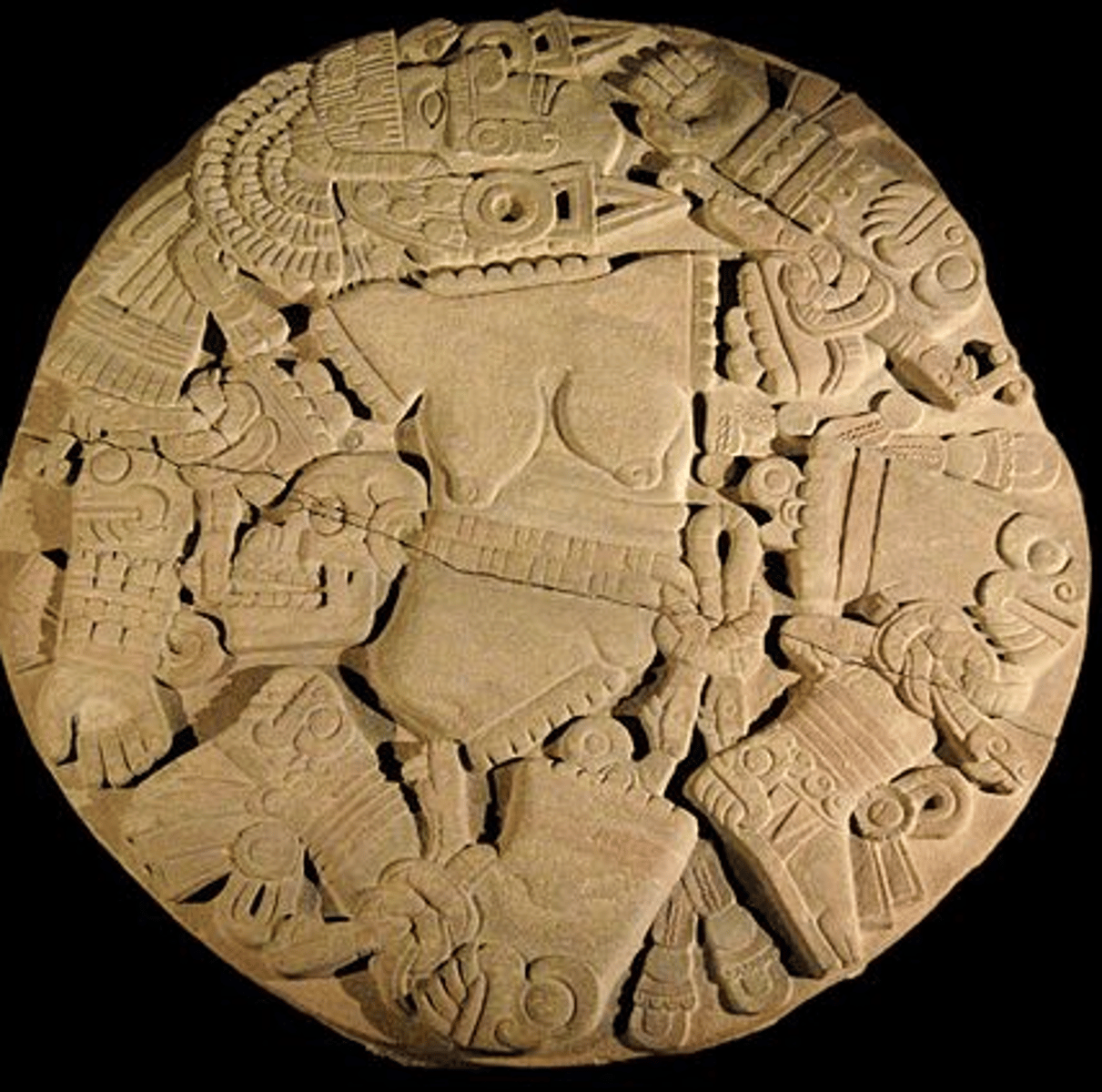
talud
The inclined plane in Pre-Columbian pyramid construction
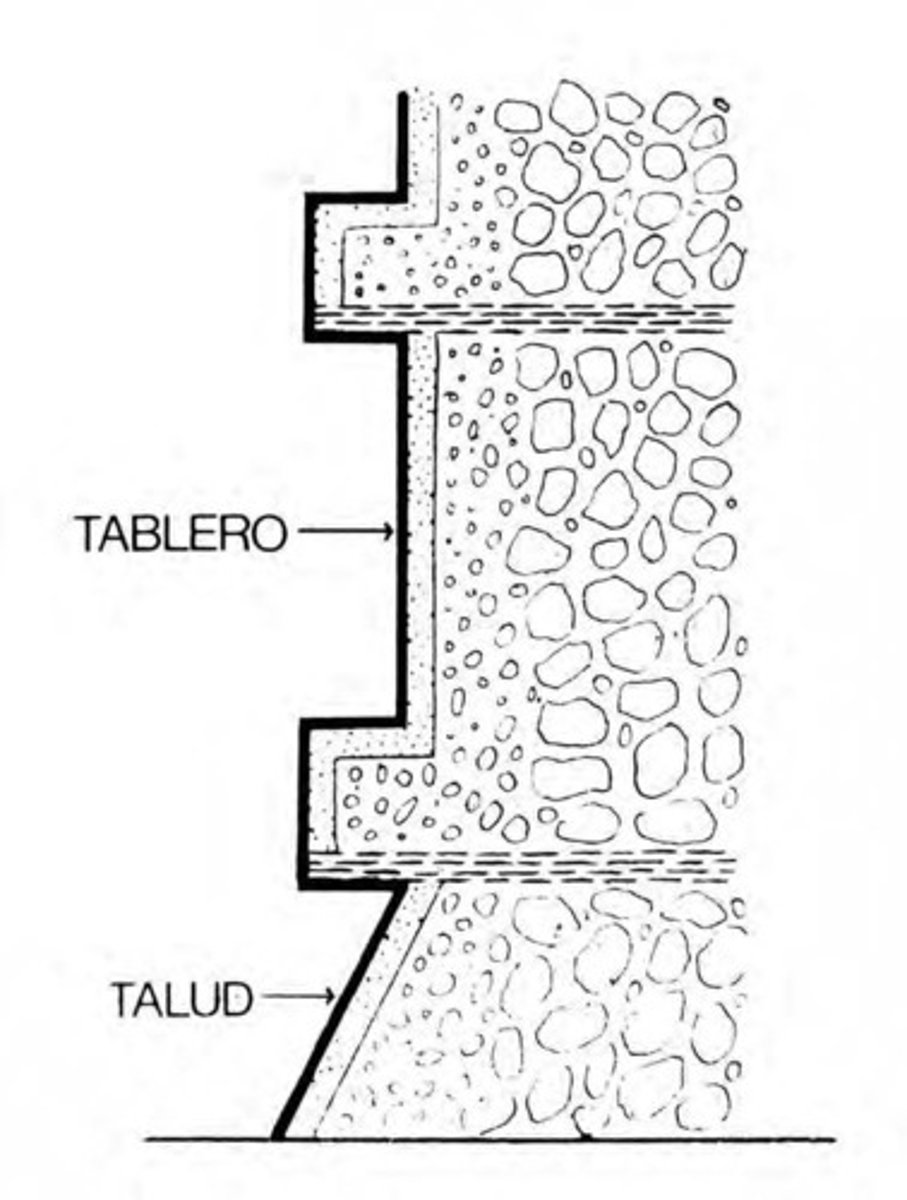
tablero
the vertical panel in pre-columbian pyramid construction
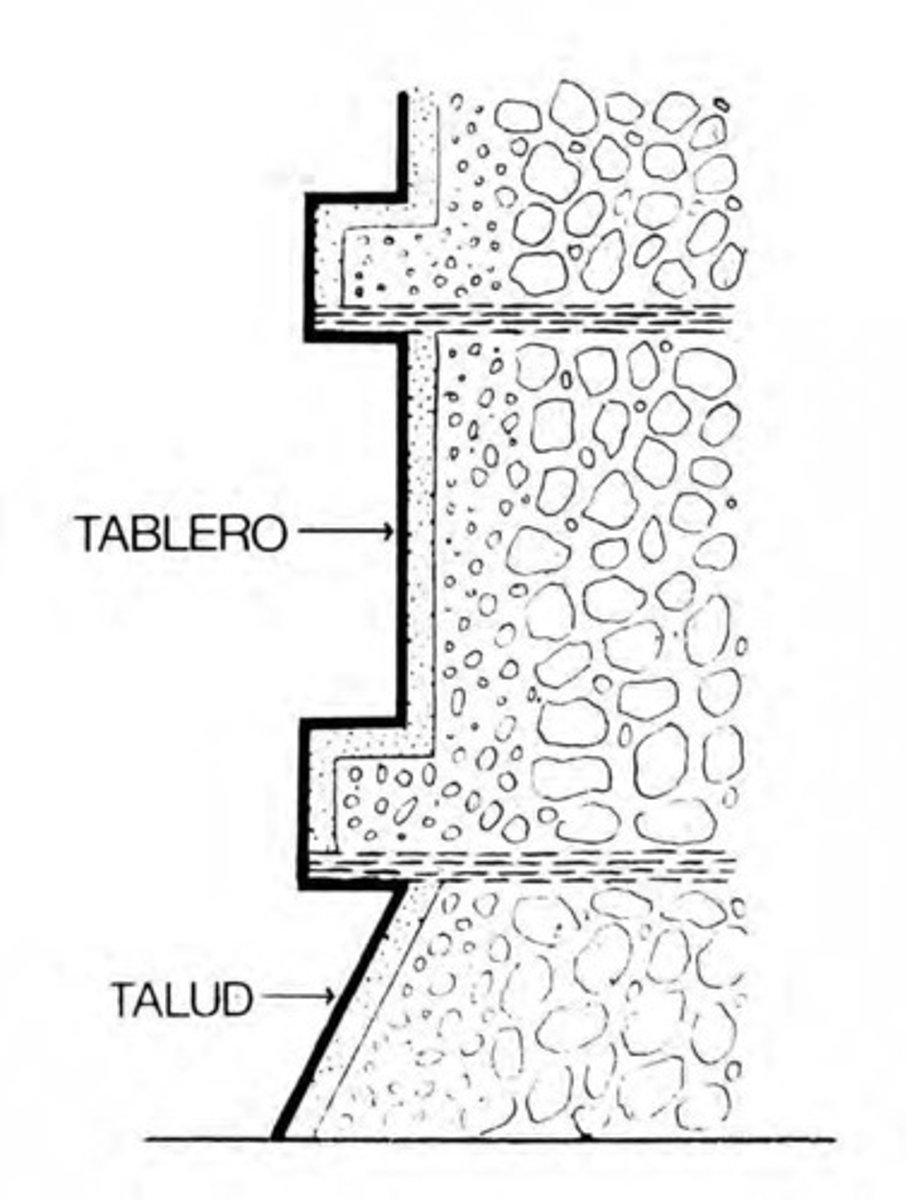
La venta, Mexico, 900 BCE
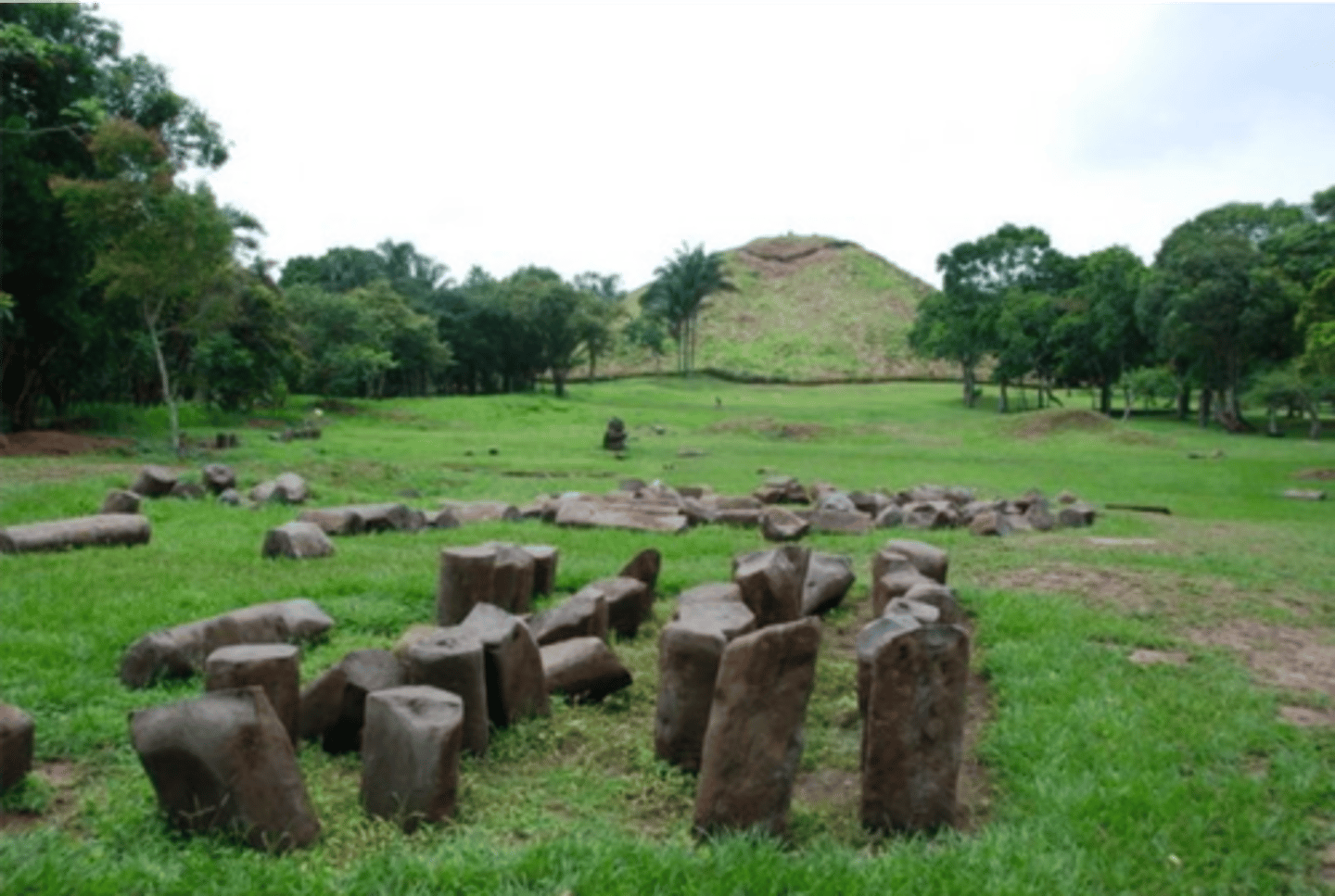
Monte Alban, Mexico, 350 BCE
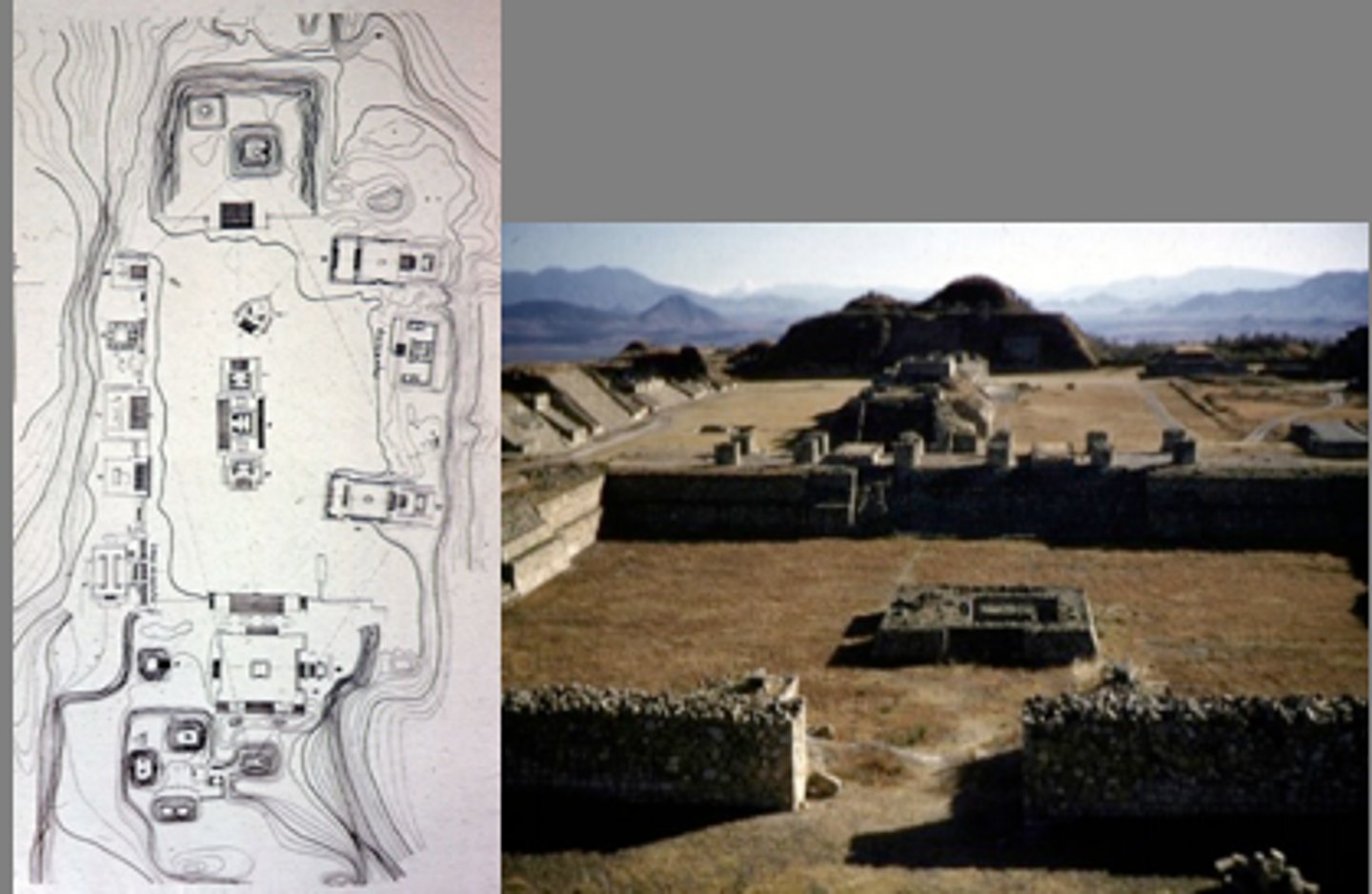
Pyramid of the Sun, Teotihuacan, Mexico, 100 CE
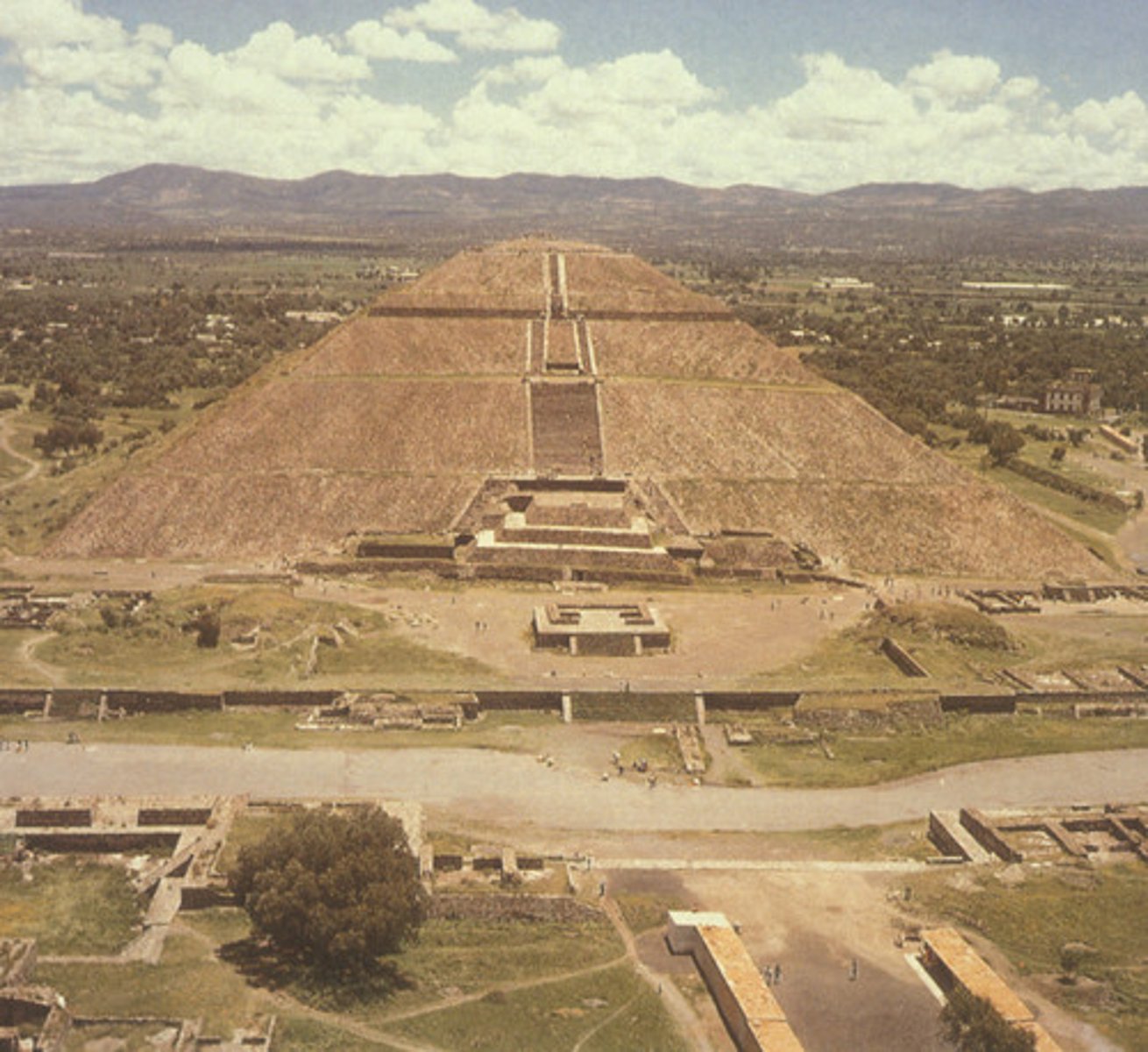
Pyramid of the Moon, Teotihuacan, Mexico 100 CE
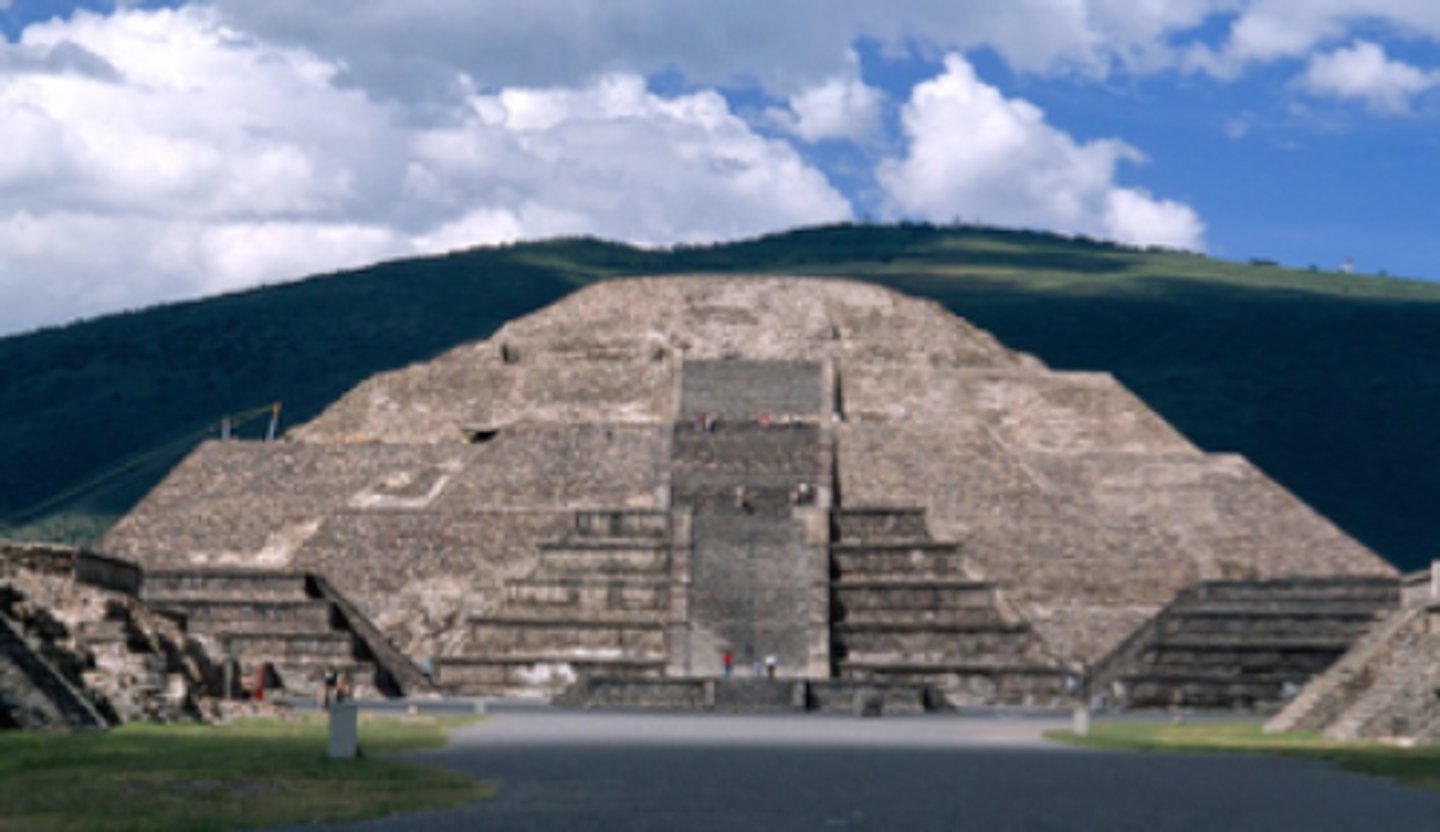
vitruvian triad
firmtitas (firmness), utilitas (utility/convenience), venustas (beauty).
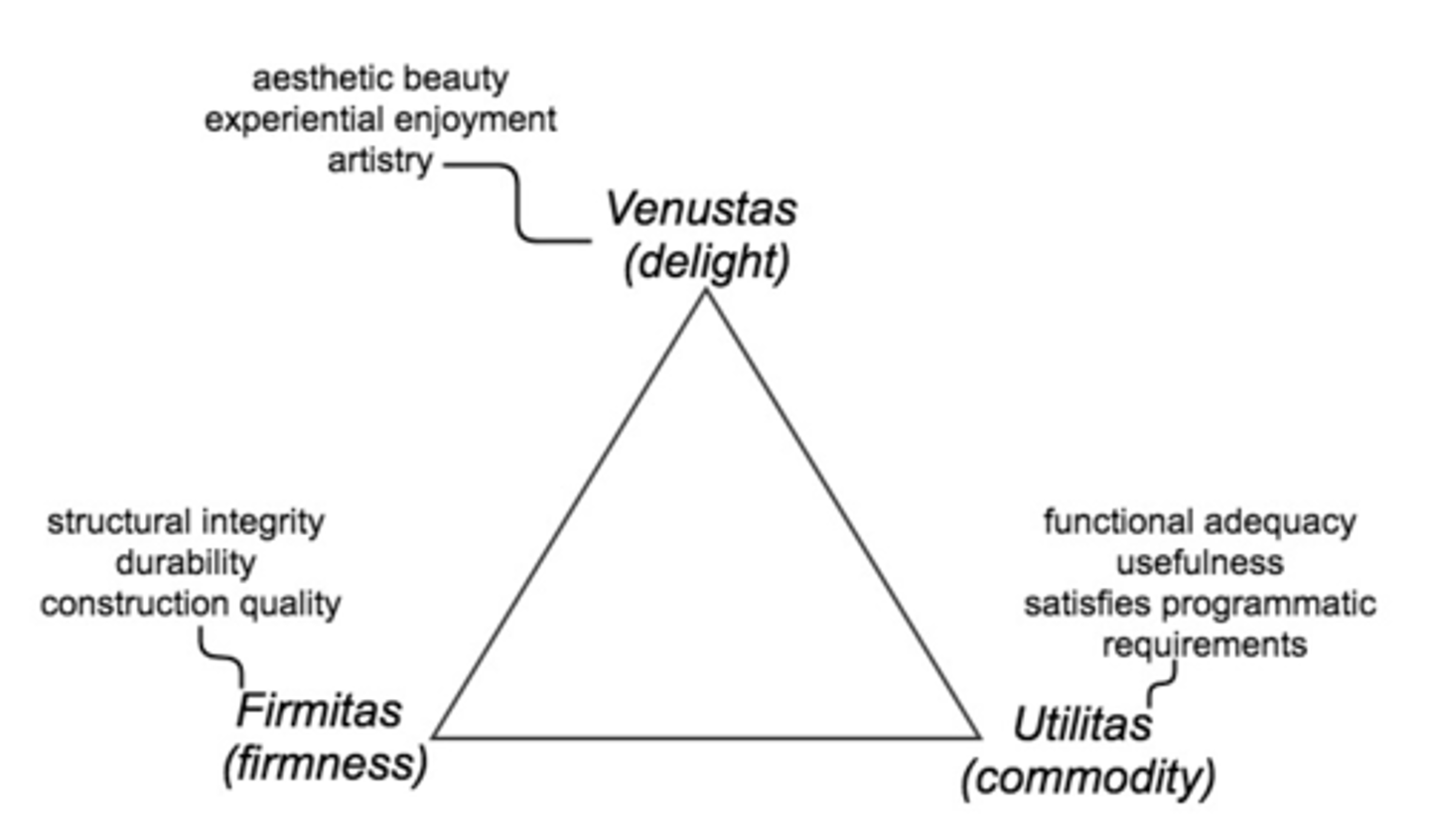
voussoir
wedge-shaped stone building block used in constructing an arch or vault
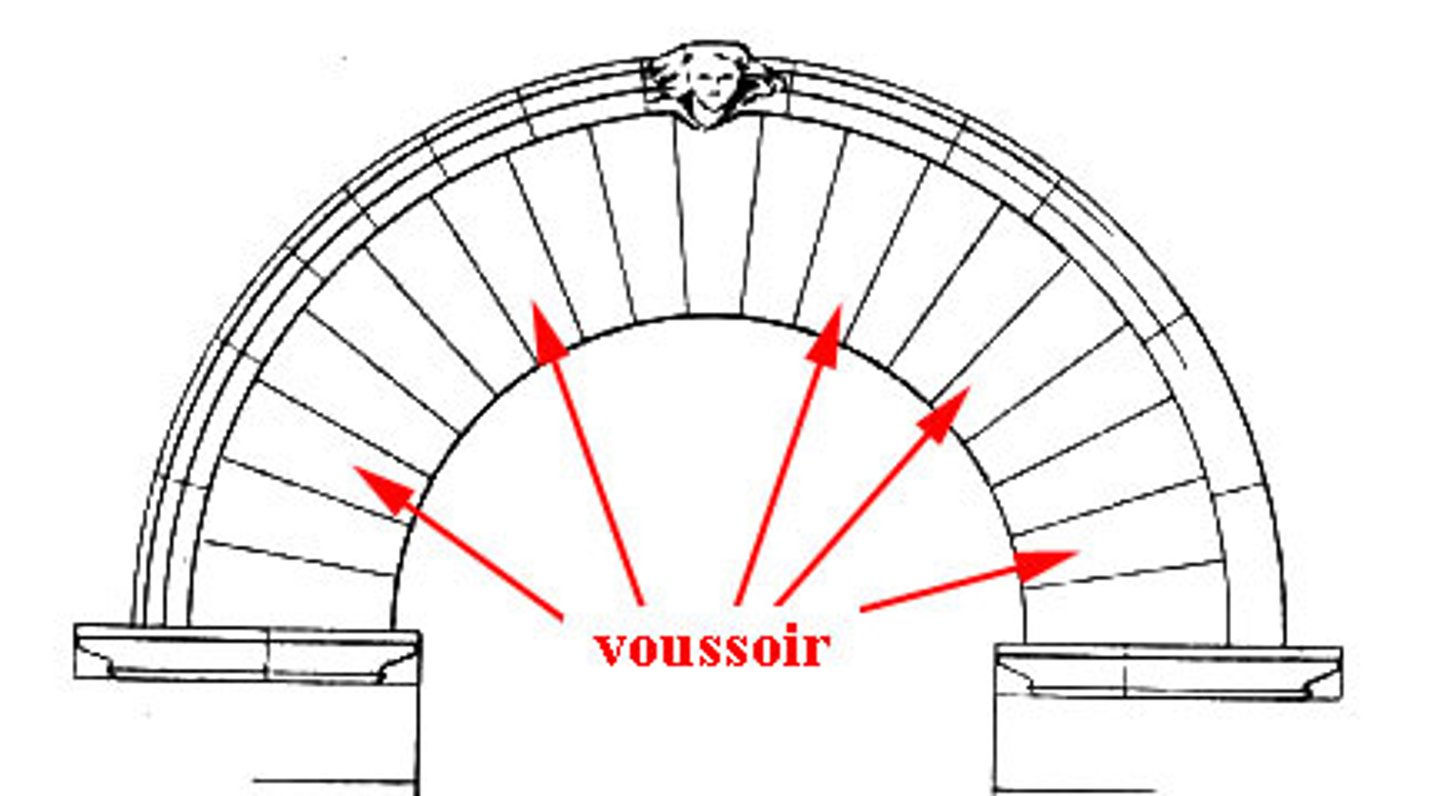
keystone
the central stone of an arch that holds the others the arch in place
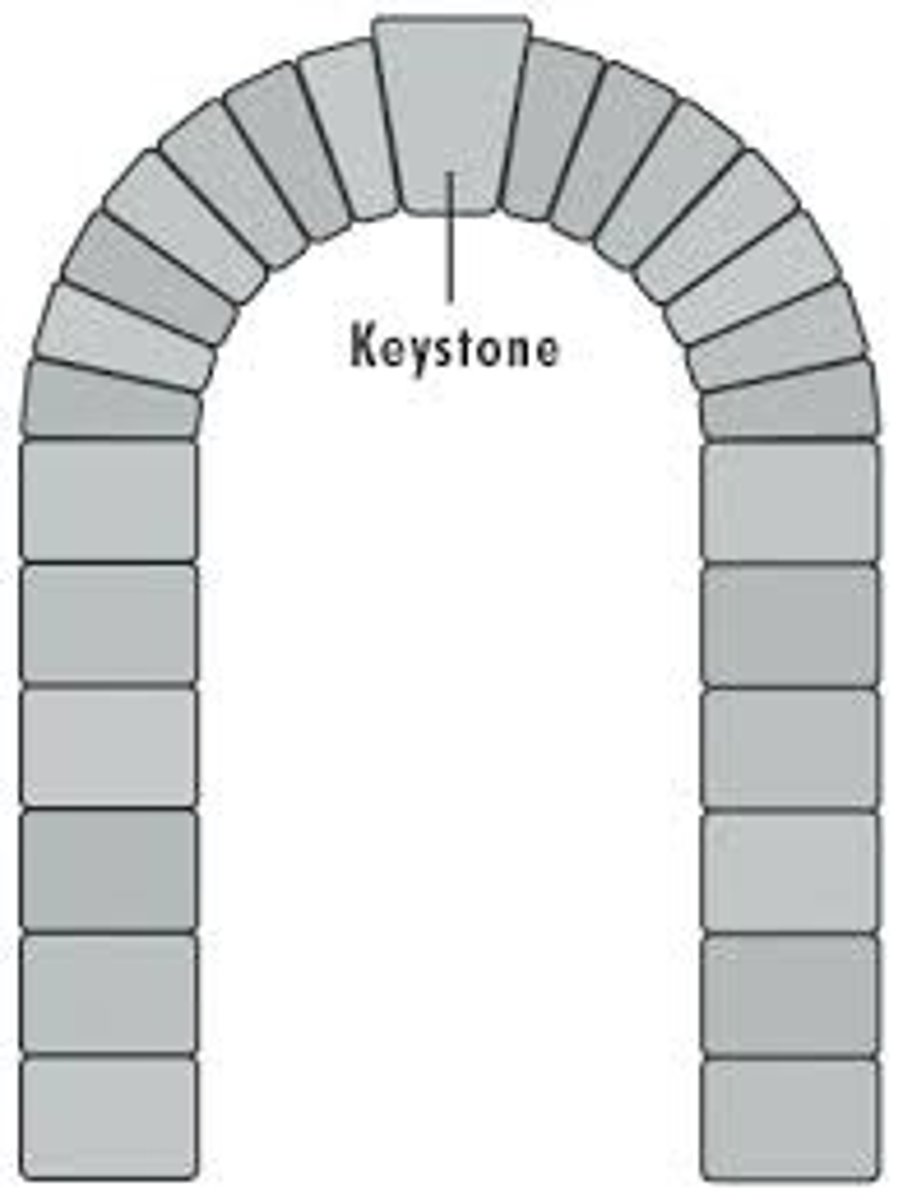
pozzolana
a type of natural cement, the Romans made this cement with ash that was blown out of the volcano Vesuvius. it is waterproof and hardens even when it is wet
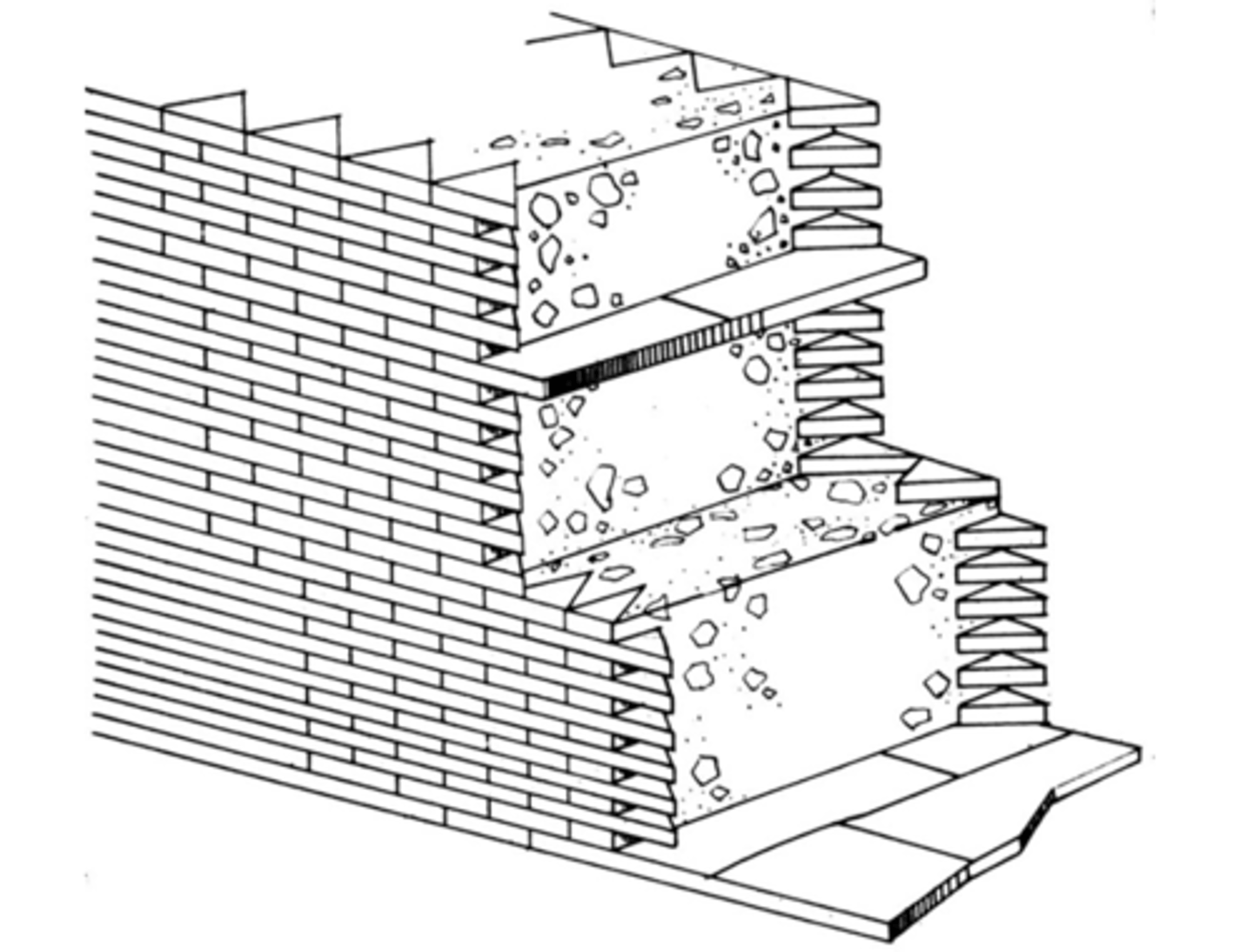
portico
a porch or entrance to a building consisting of a covered and often columned area
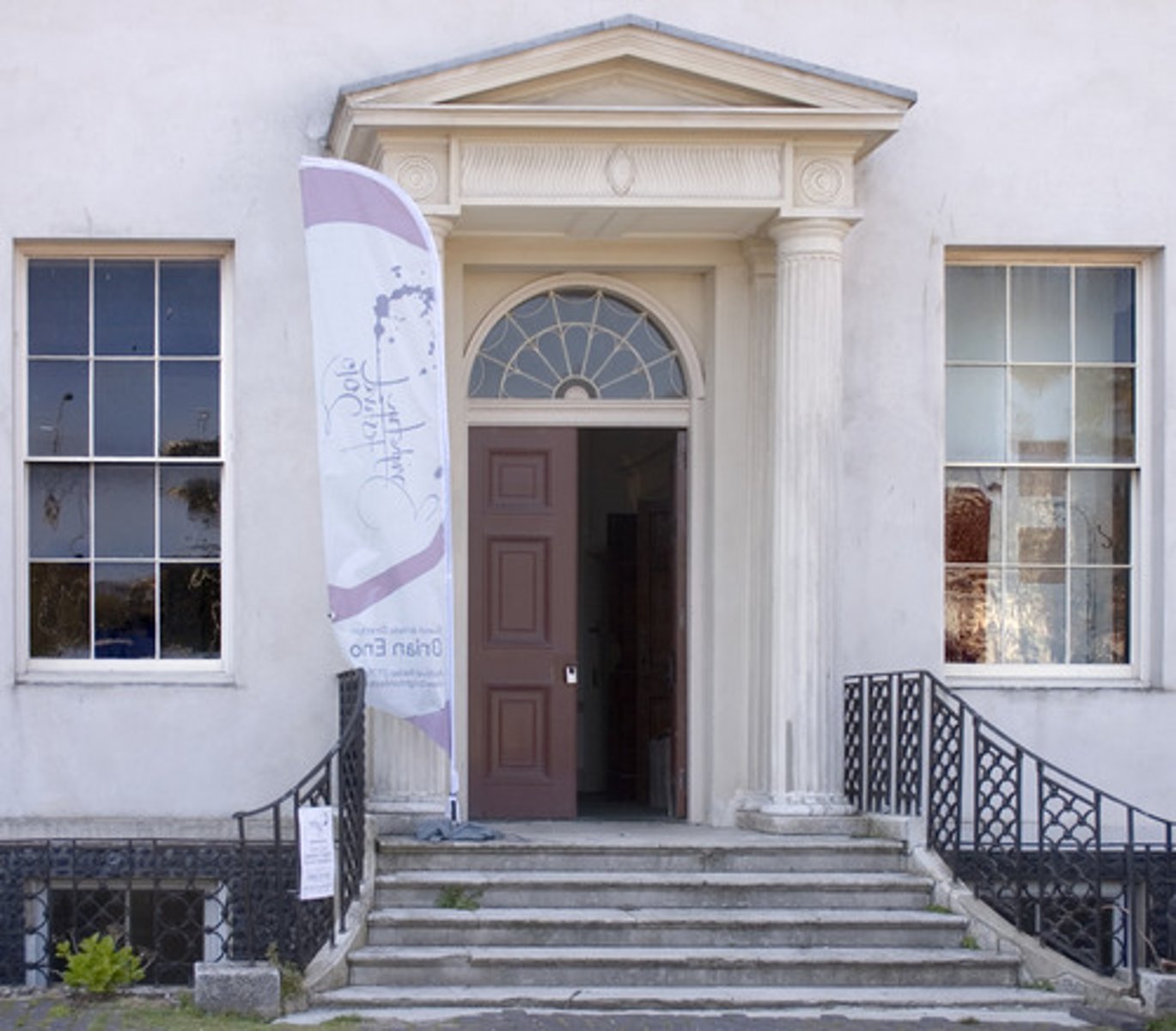
oculus
a circular opening. Oculi are usually found either as windows or at the apex of a dome. When at the top of a dome, an oculus is either open to the sky or covered by a decorative exterior lantern
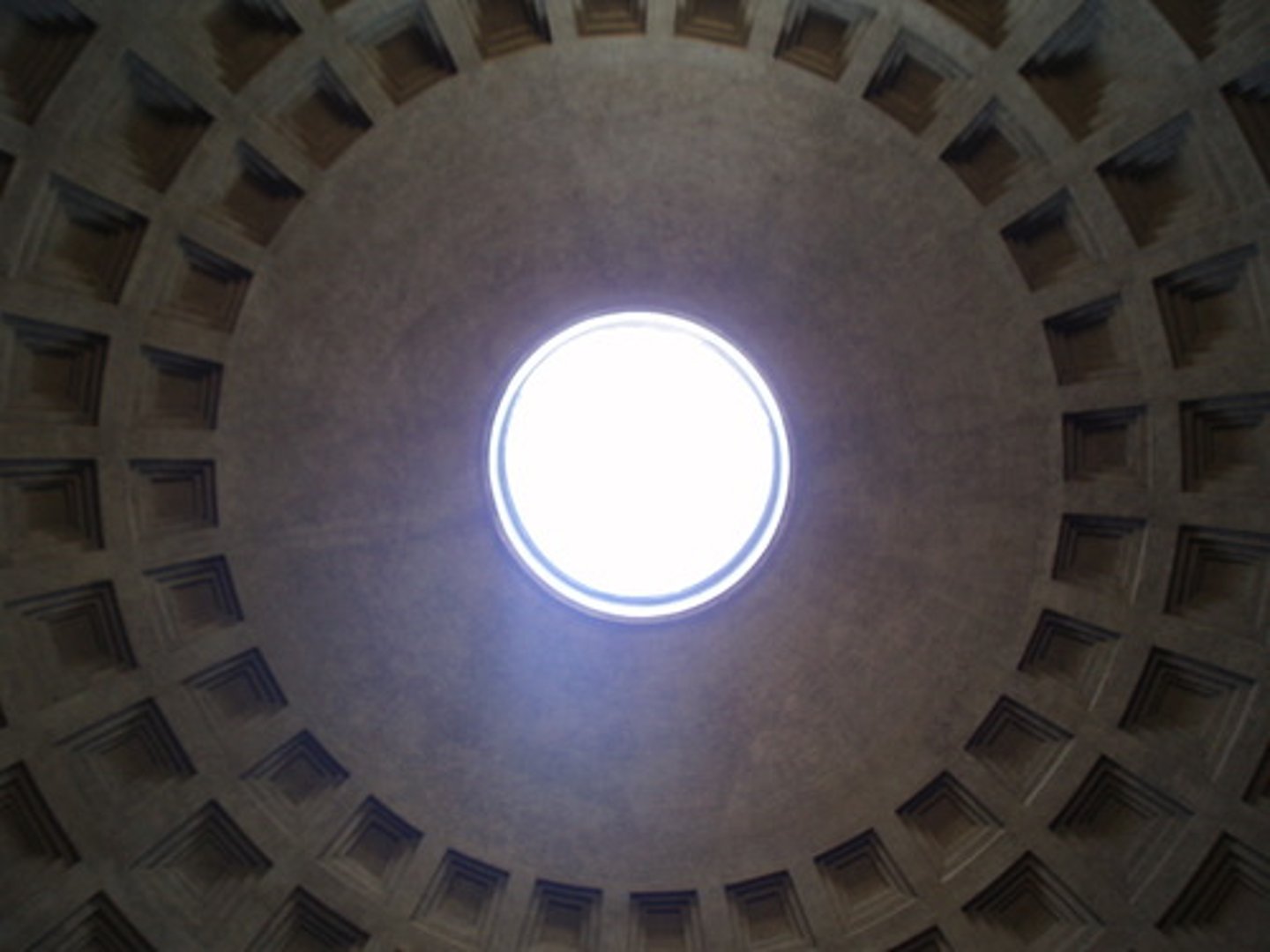
coffers
A recessed decorative panel that is used to reduce the weight of and to decorate ceilings or vaults
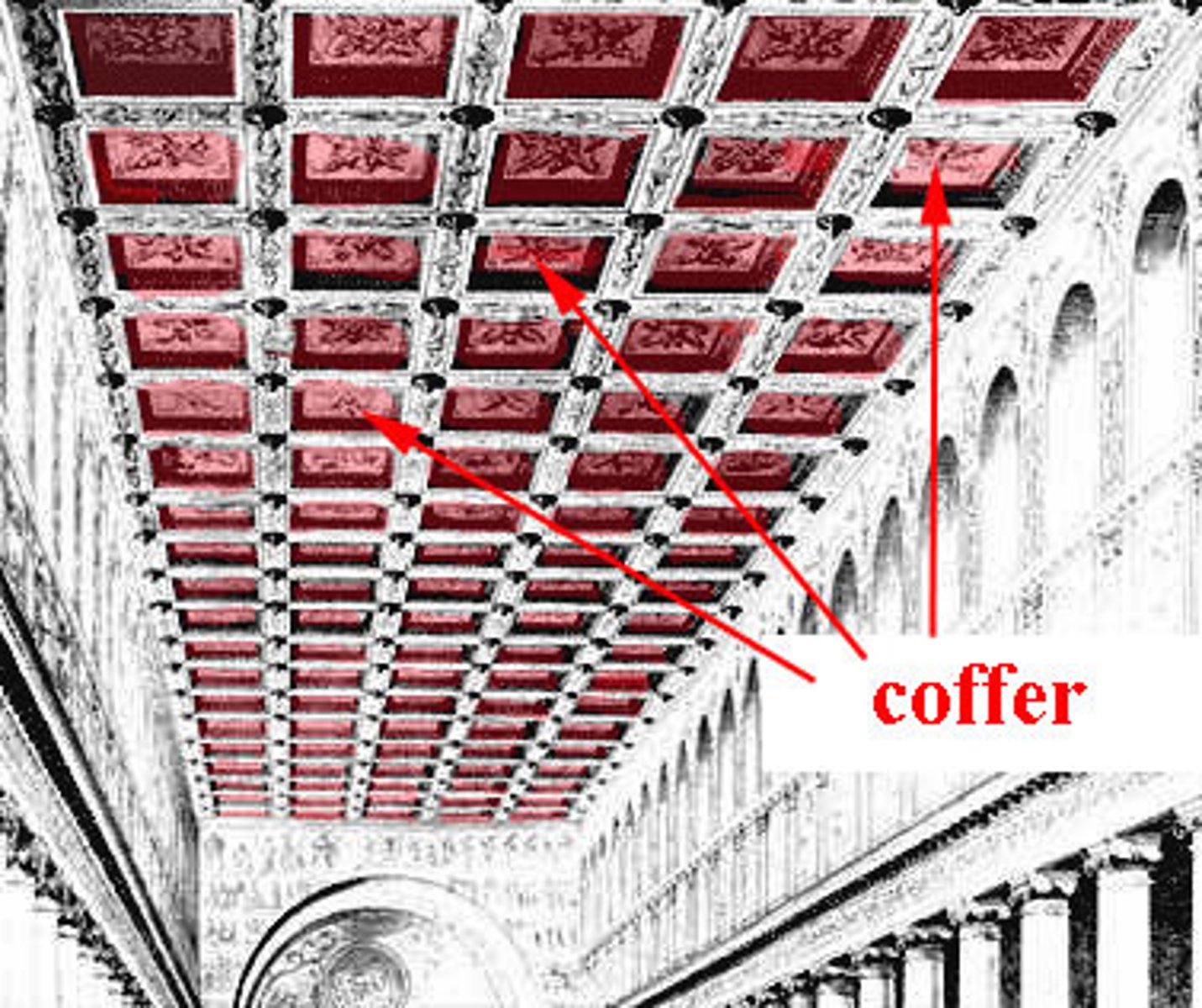
Domus Aurea, Rome, Italy, 65 CE
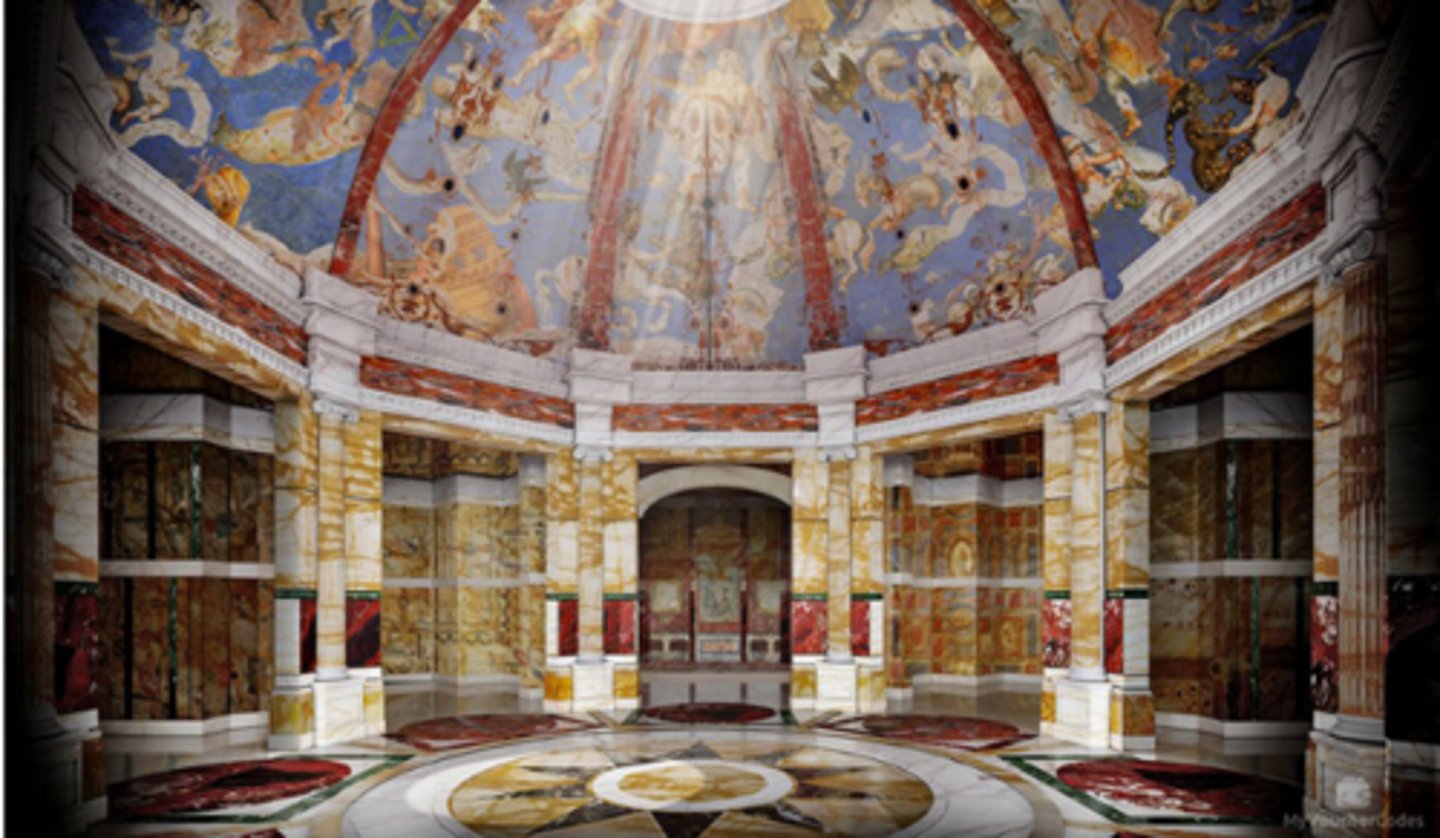
Patheon, Rome, Italy 125-128 CE
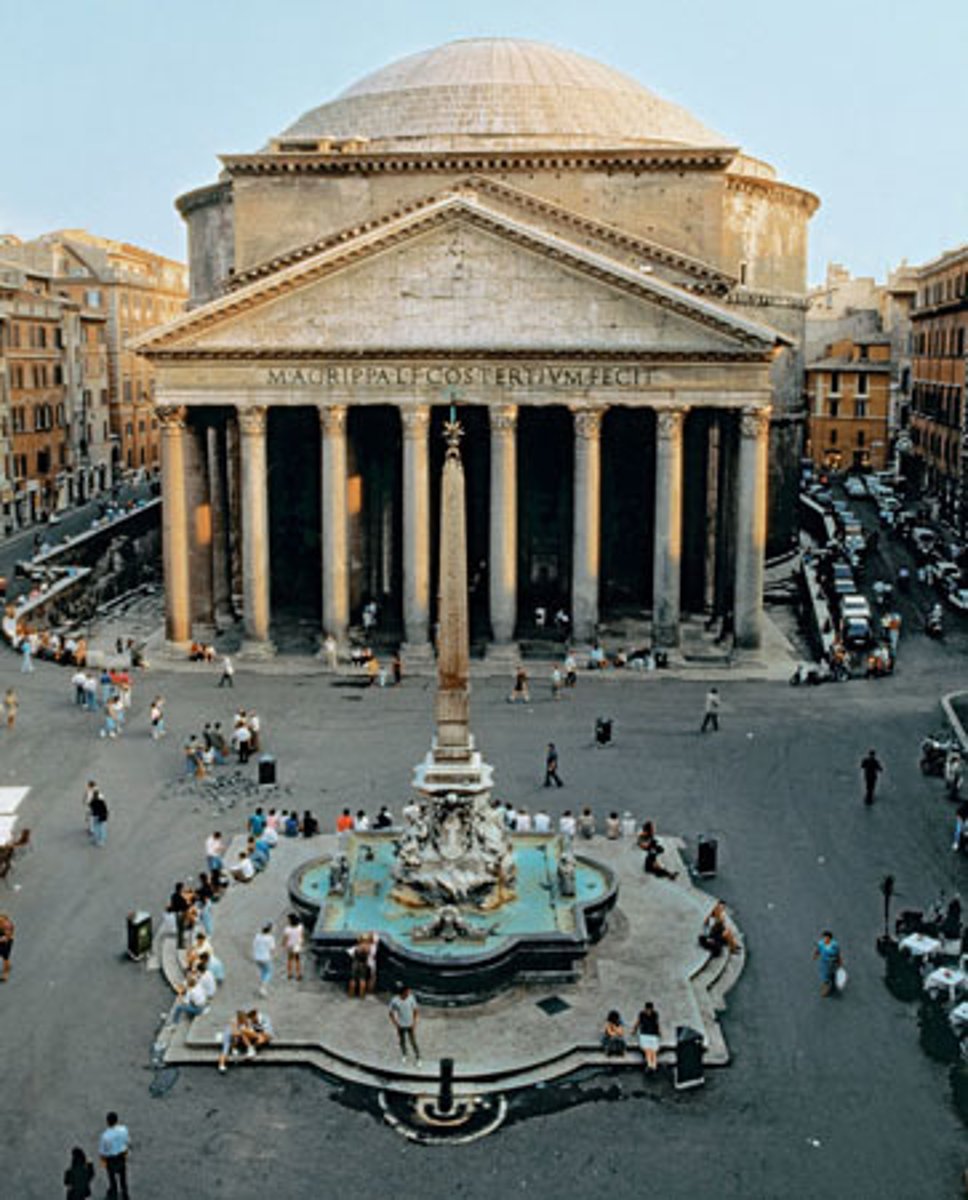
atrium
a large open air or skylight covered space surrounded by a building
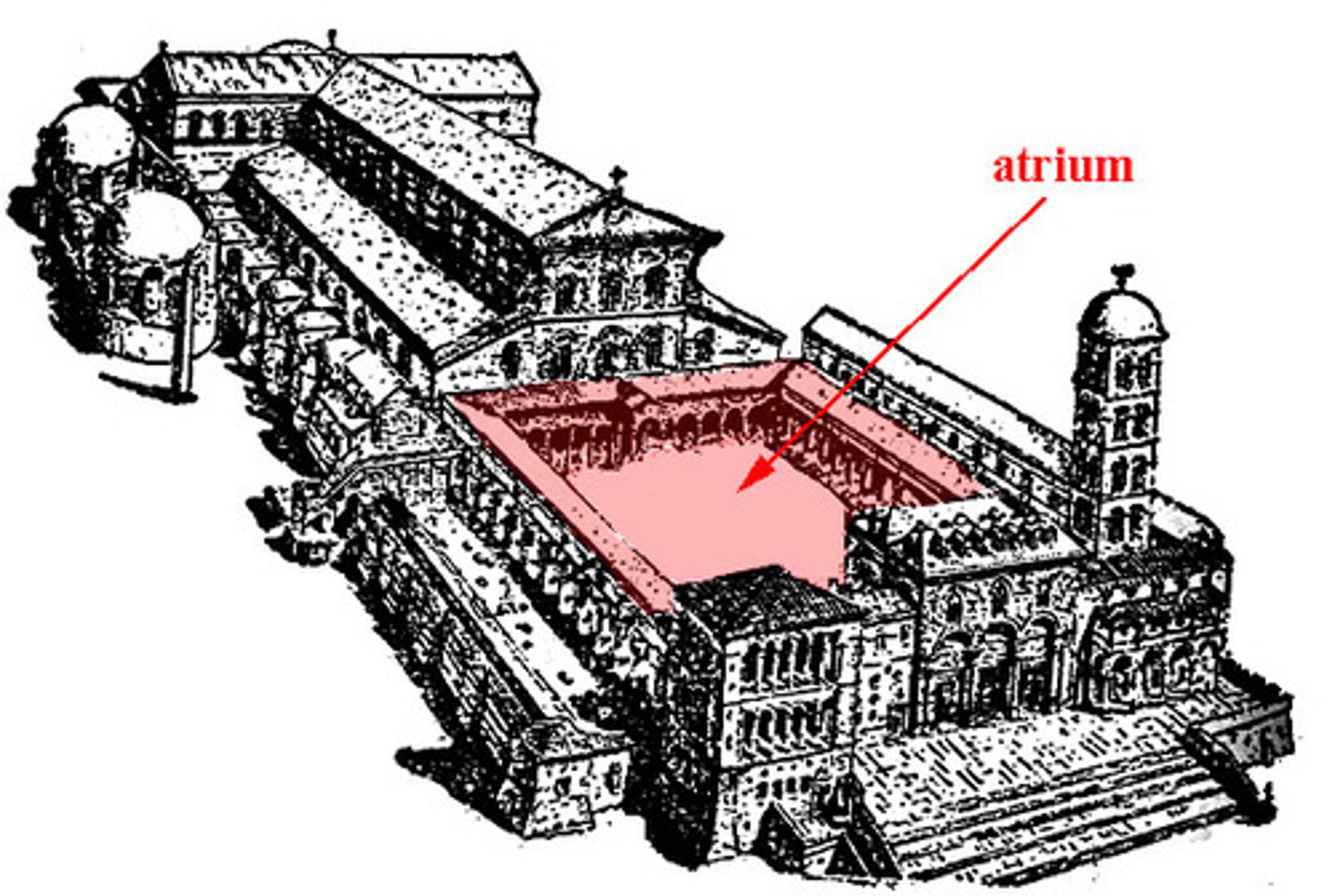
tablinum
a open living room that is curtained off from public view
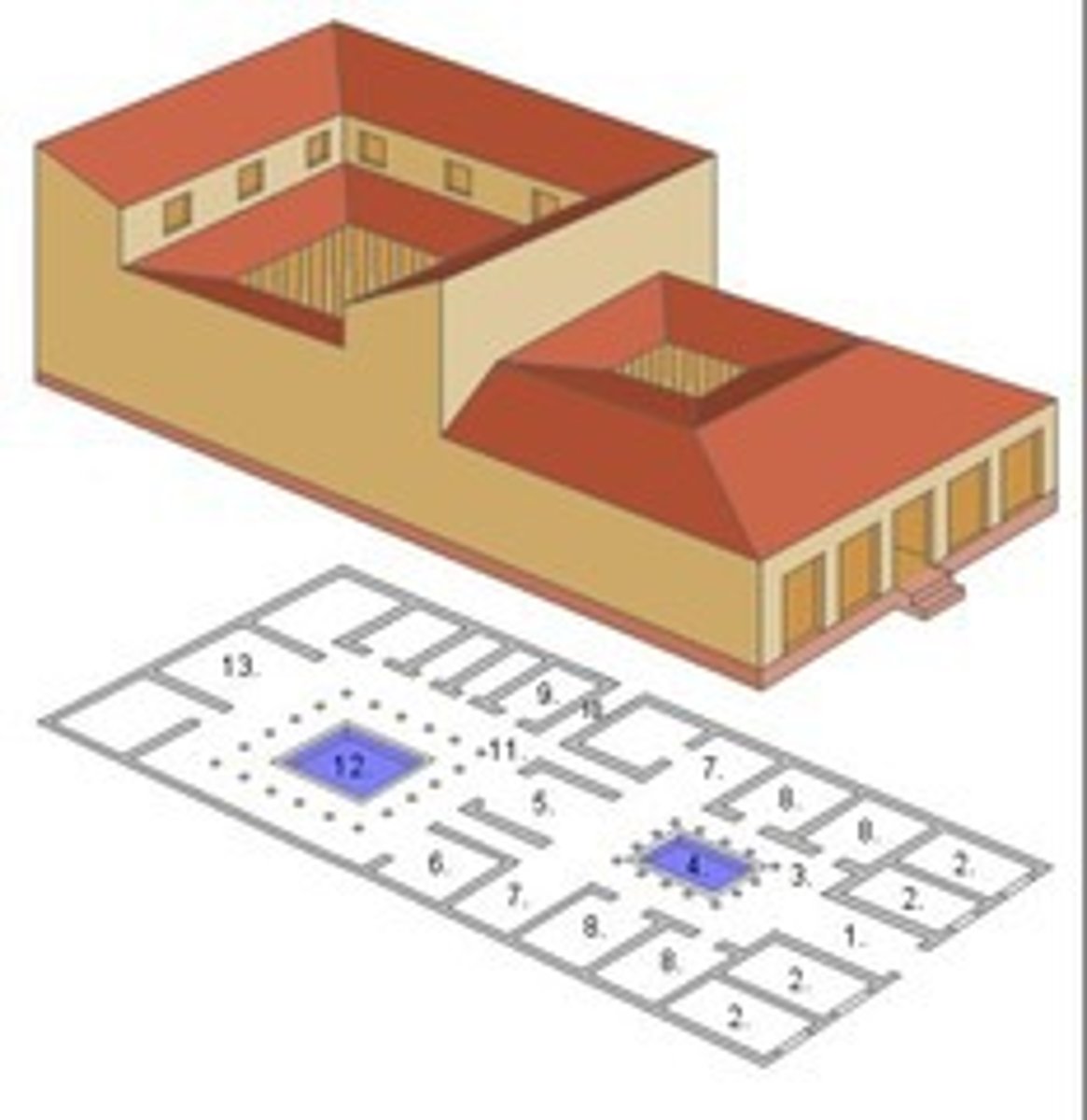
triclinium
a formal dinning room in a Roman house
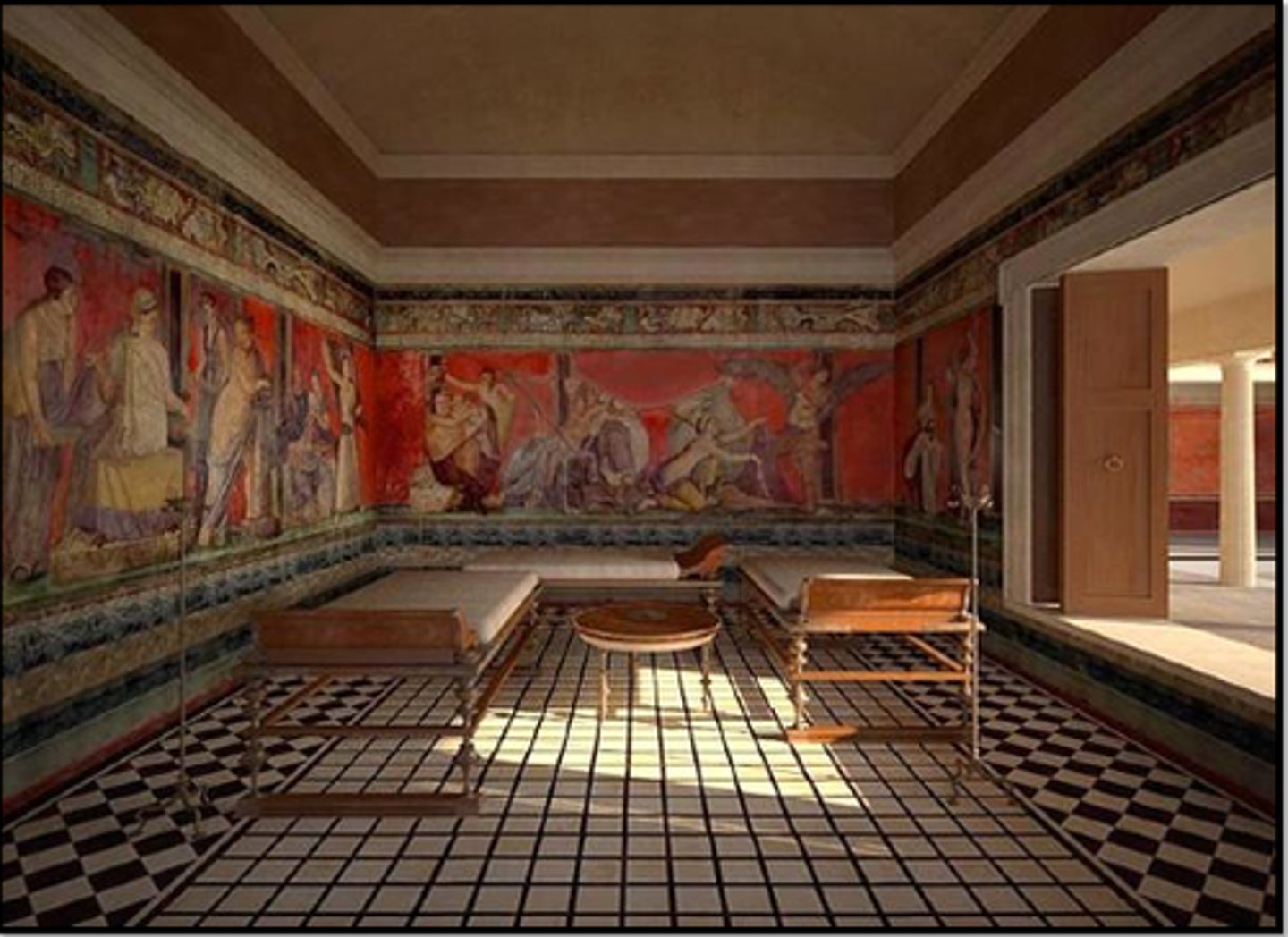
impluvium
a rectangular basin in a Roman house that is placed in the open-air atrium in order to collect rainwater
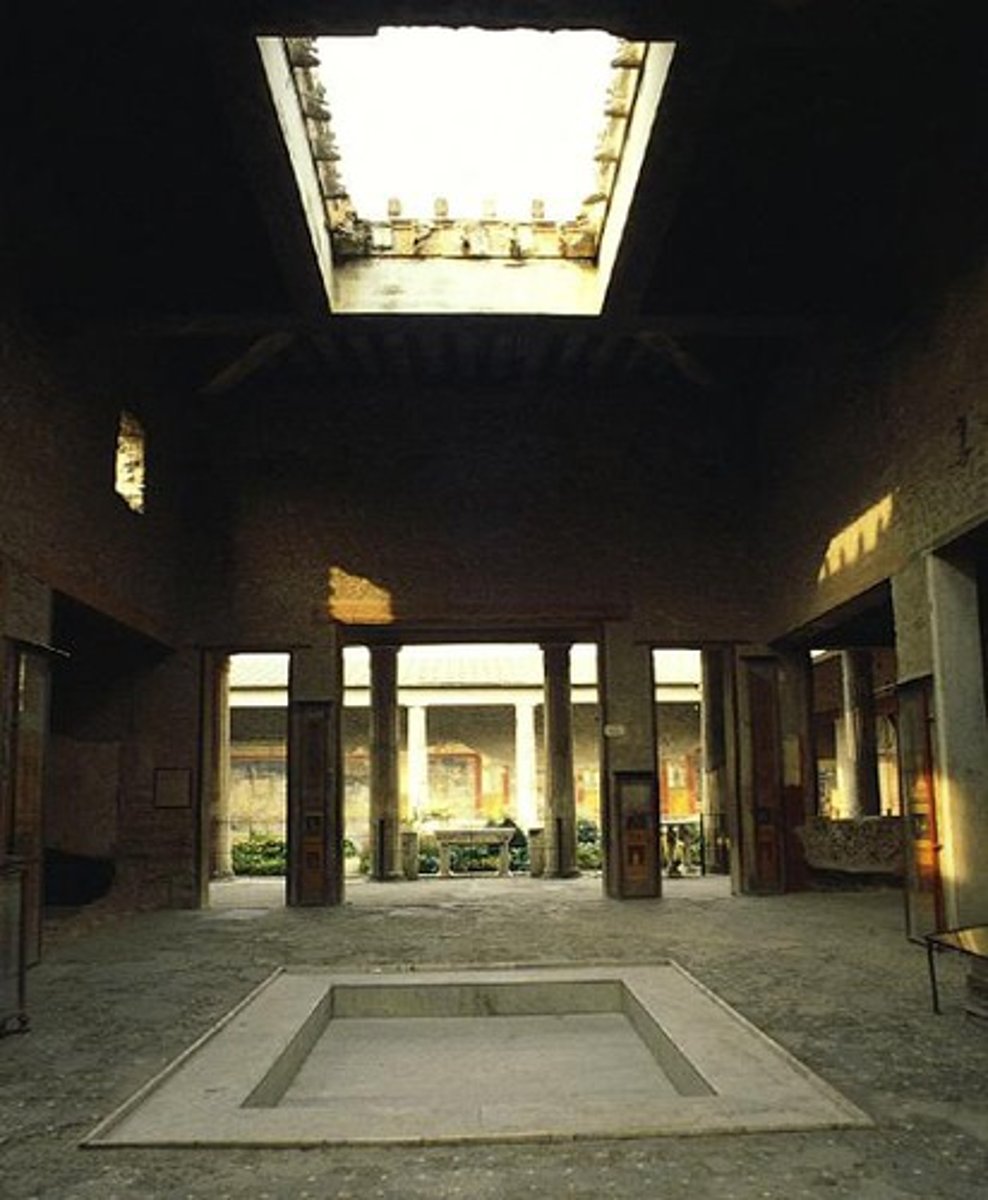
forum
A Roman public meeting place
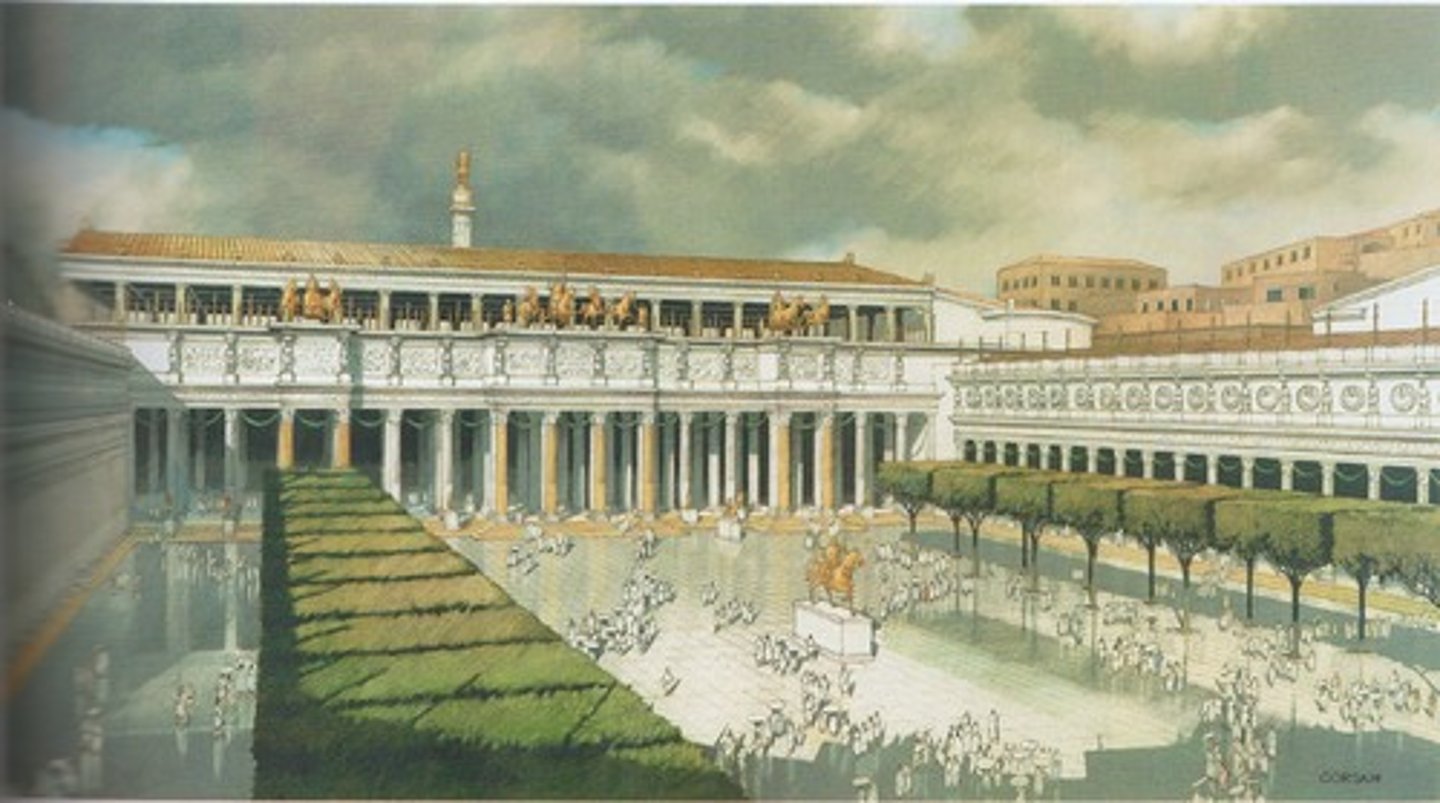
colonnade
a row of columns supporting a roof, an entablature, or arcade
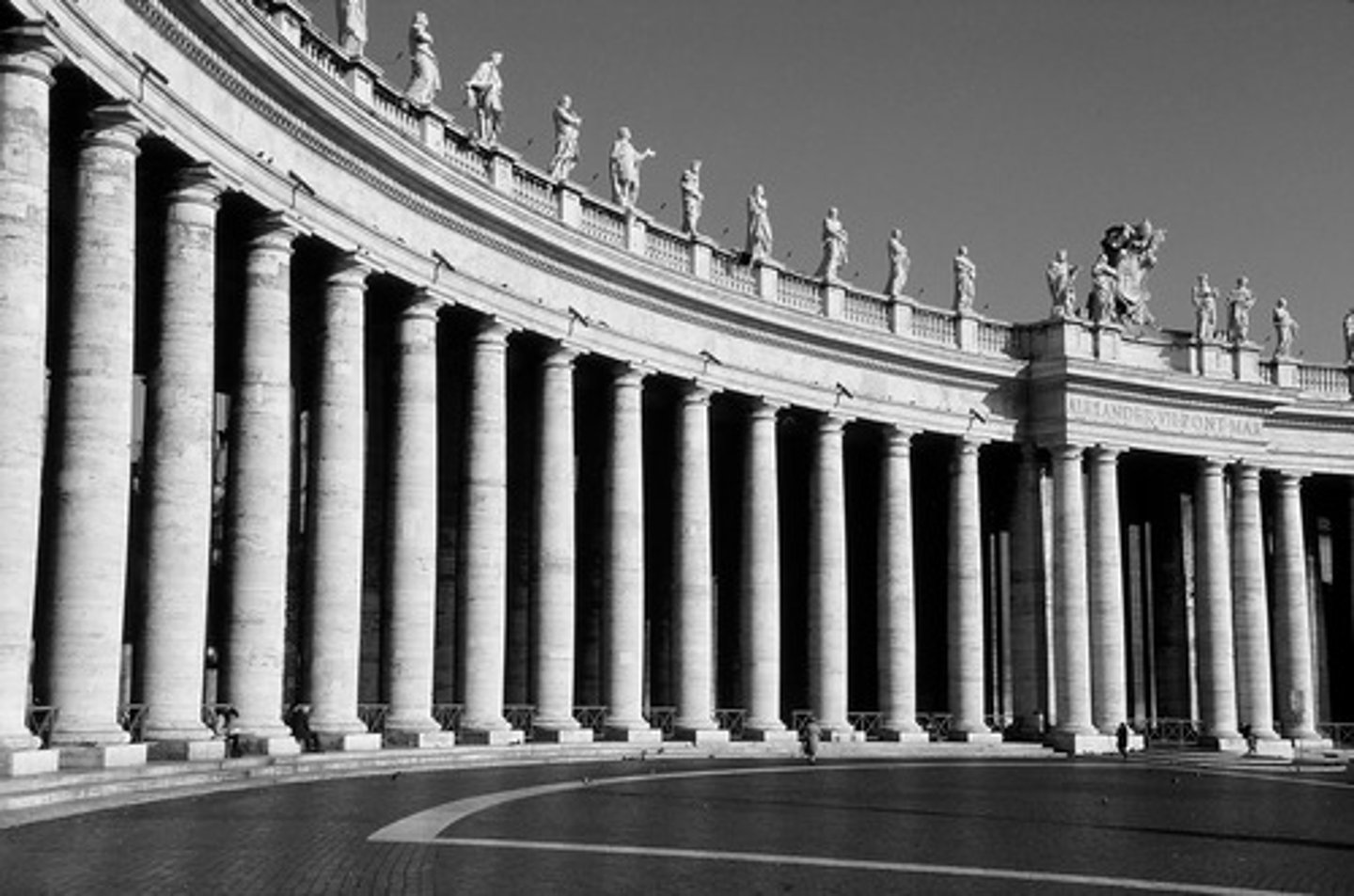
basilica
a large public building, with multiple functions, build typically alongside town forum
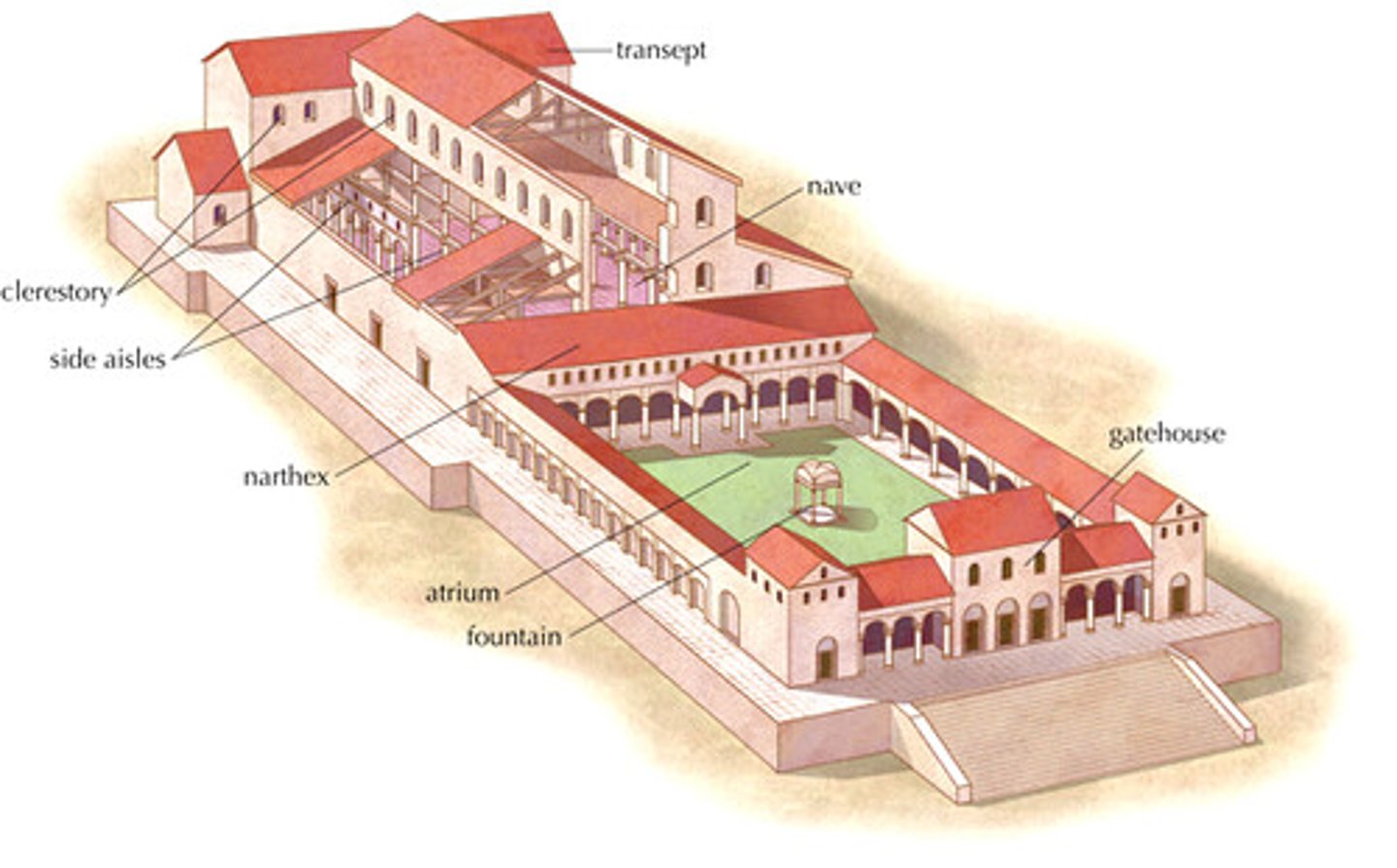
nave
The long central part of a church, extending from the entrance to the altar, with aisles along the sides
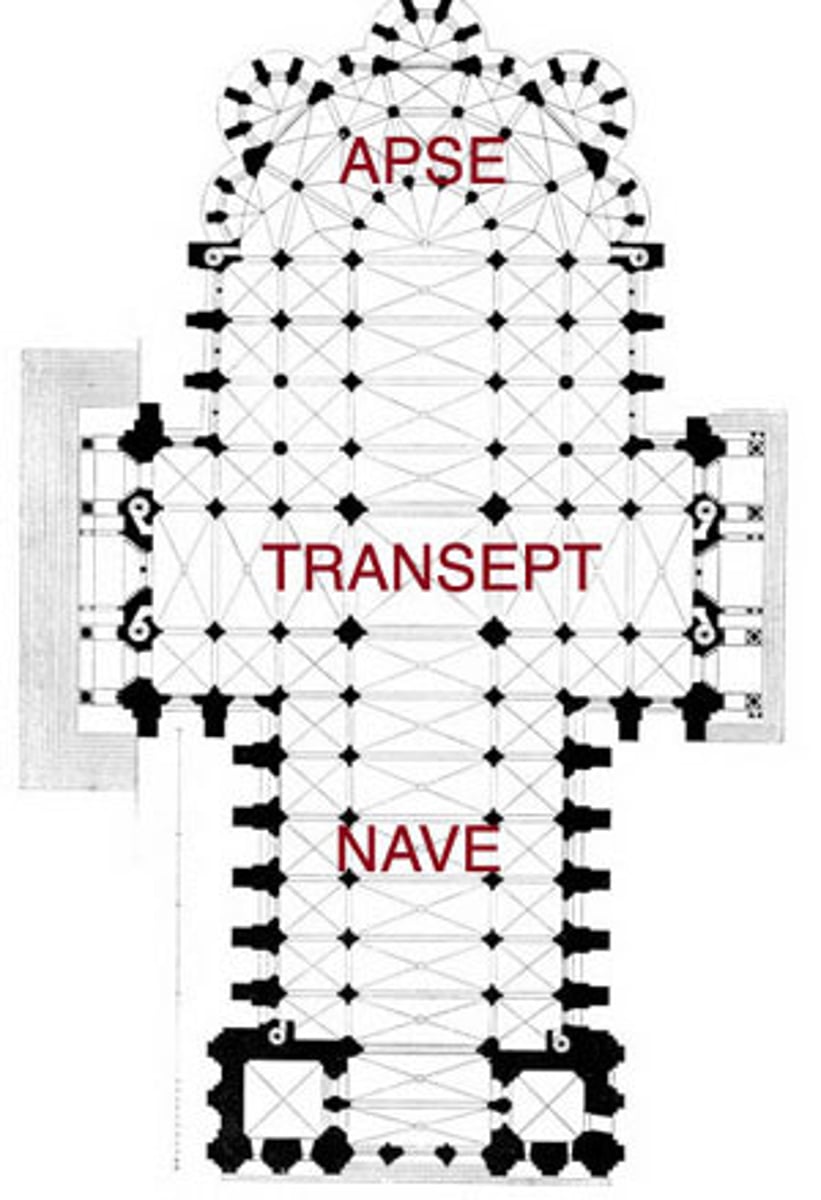
gable
The triangular part of a wall that is enclosed between the sloping portions of a roof
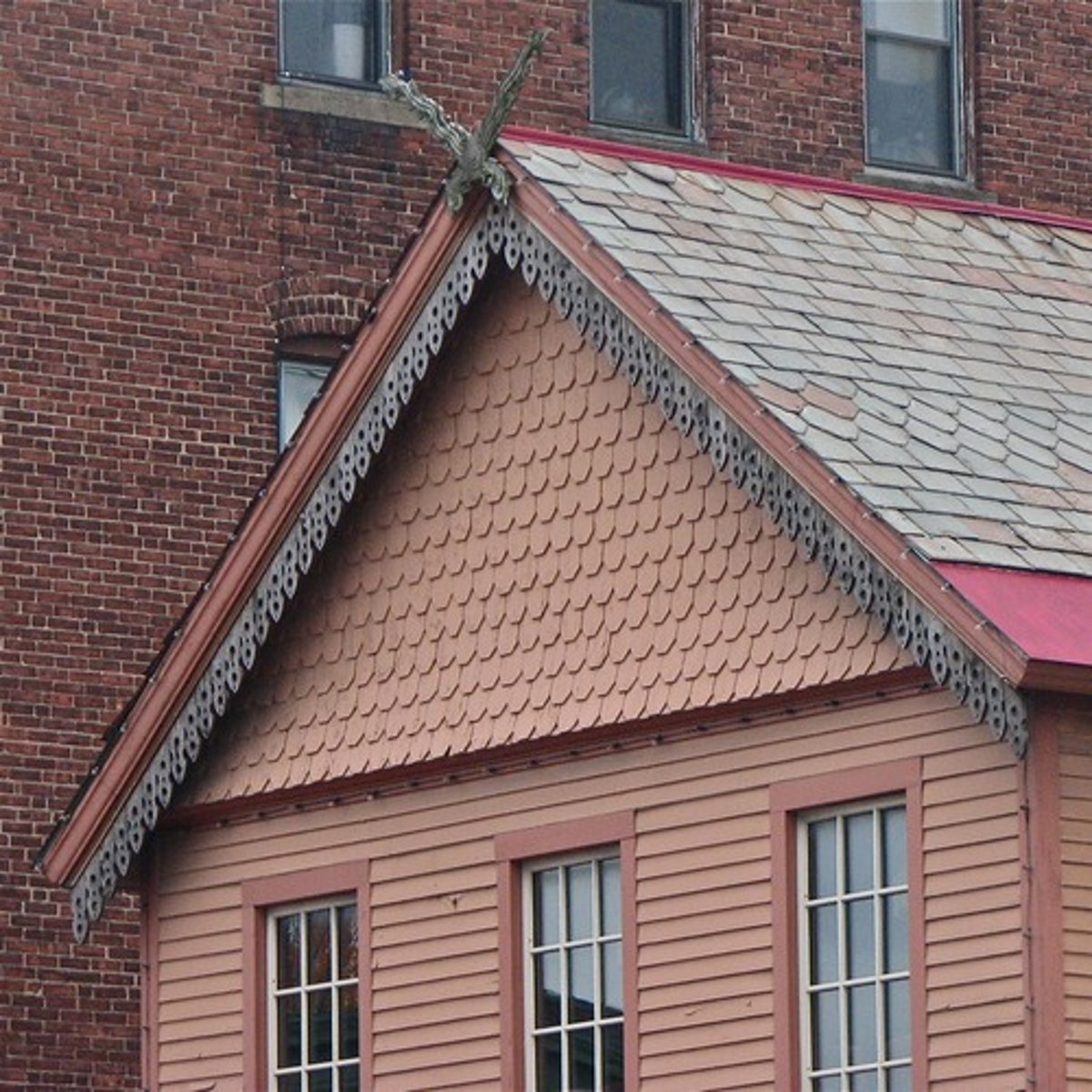
caldarium
The hot-bath section of a Roman bathing establishment
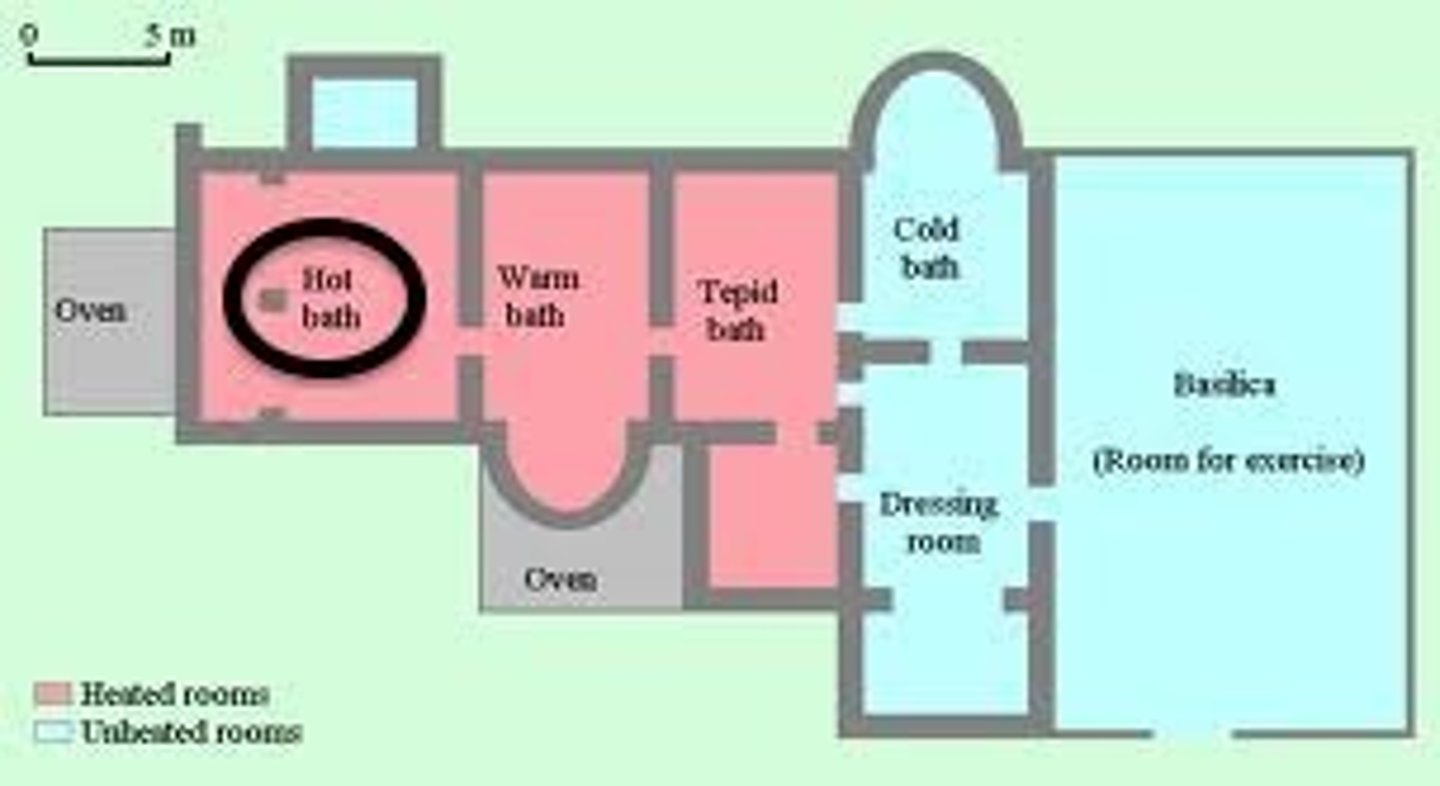
tepidarium
The warm-bath section of a Roman bathing establishment
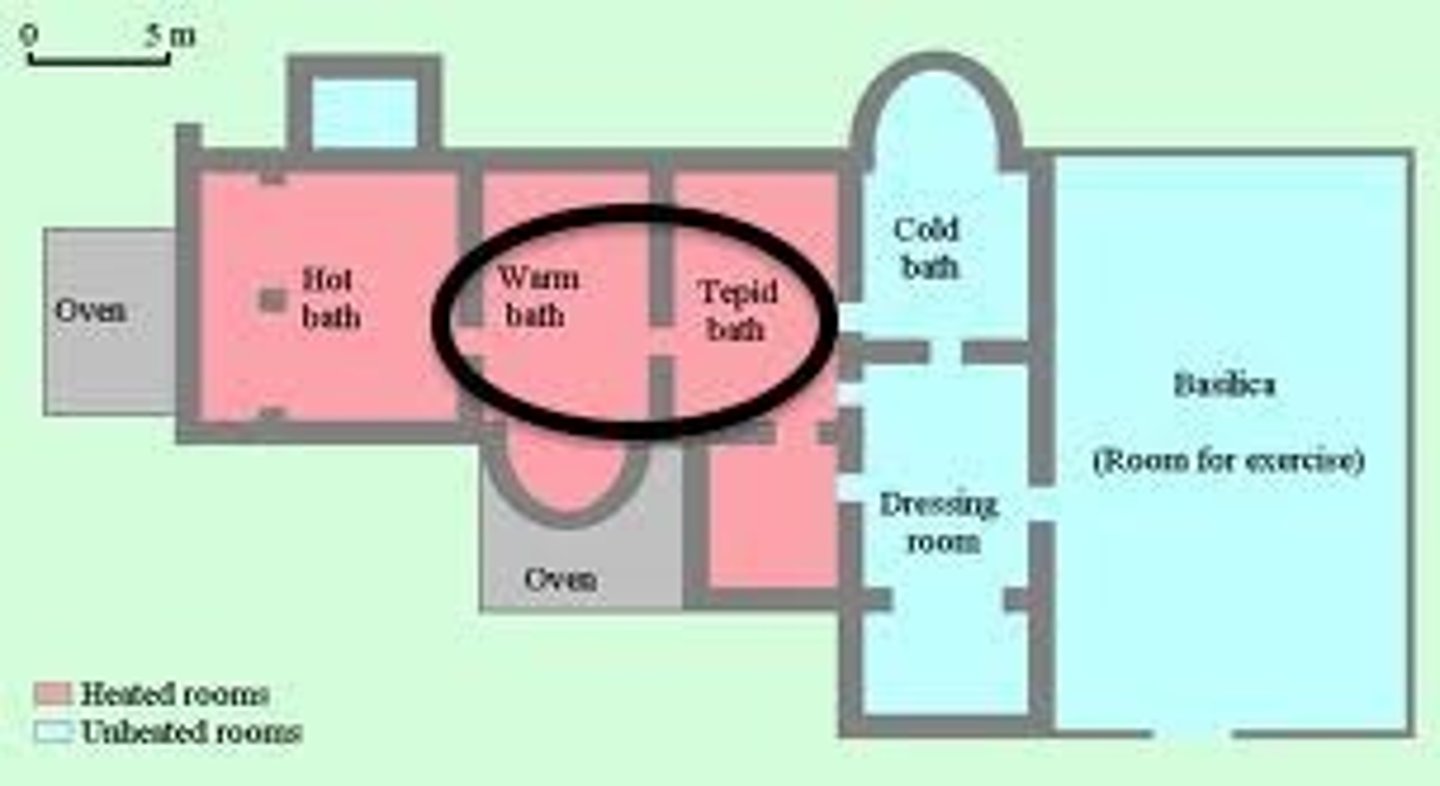
frigidarium
The cold-bath section of a Roman bathing establishment
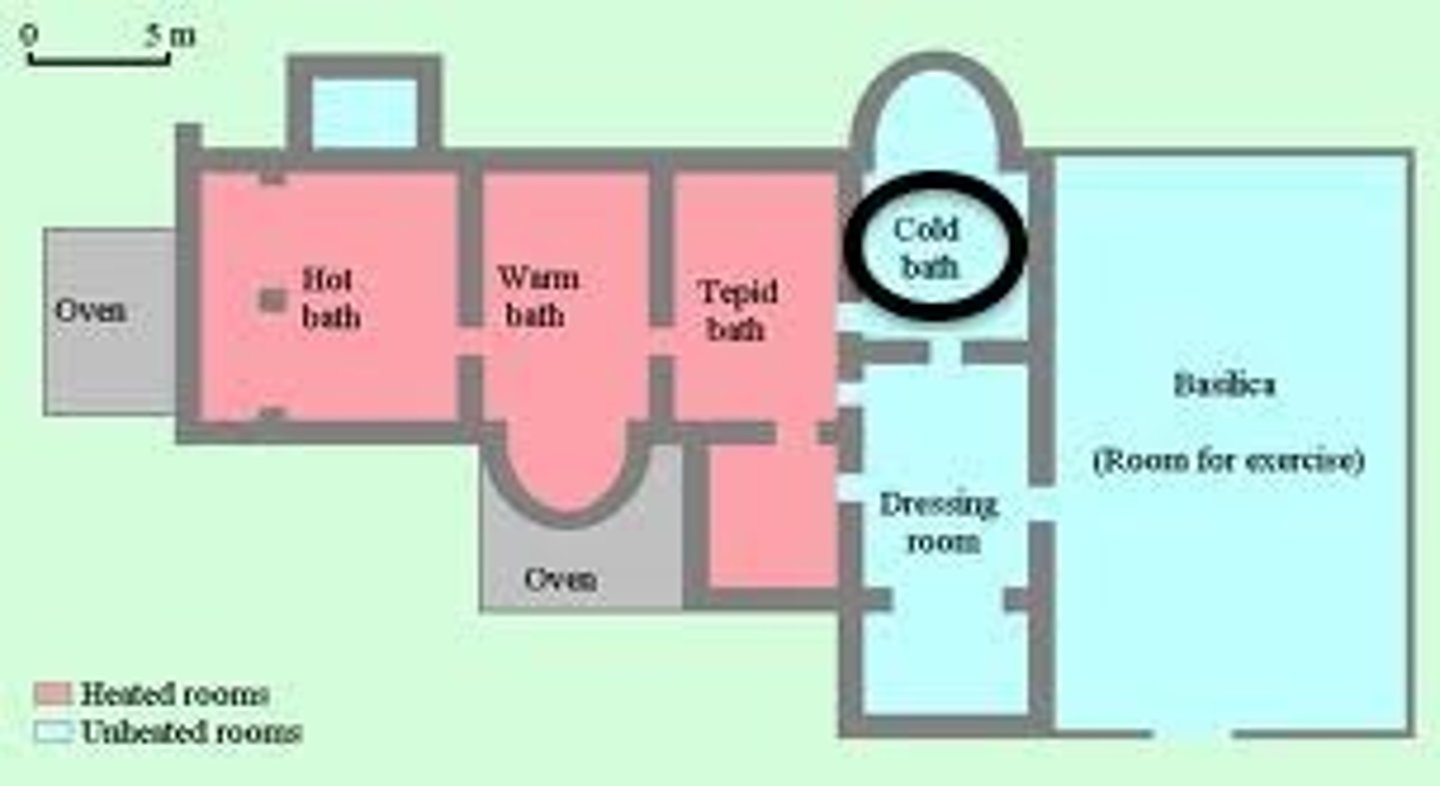
castrum
Roman military encampment
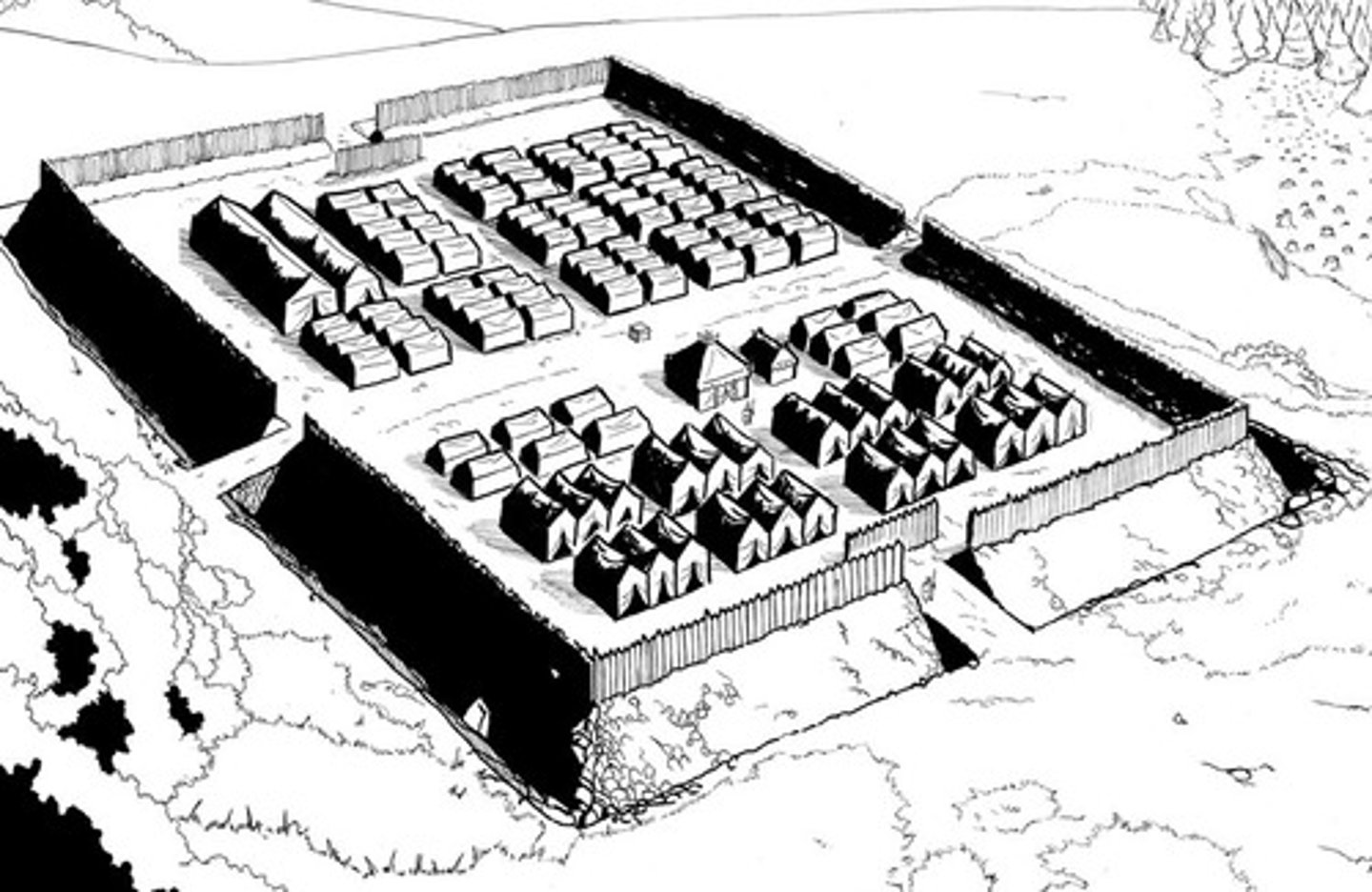
cardo
The north-south street in a Roman town, intersecting the decumanus at right angles
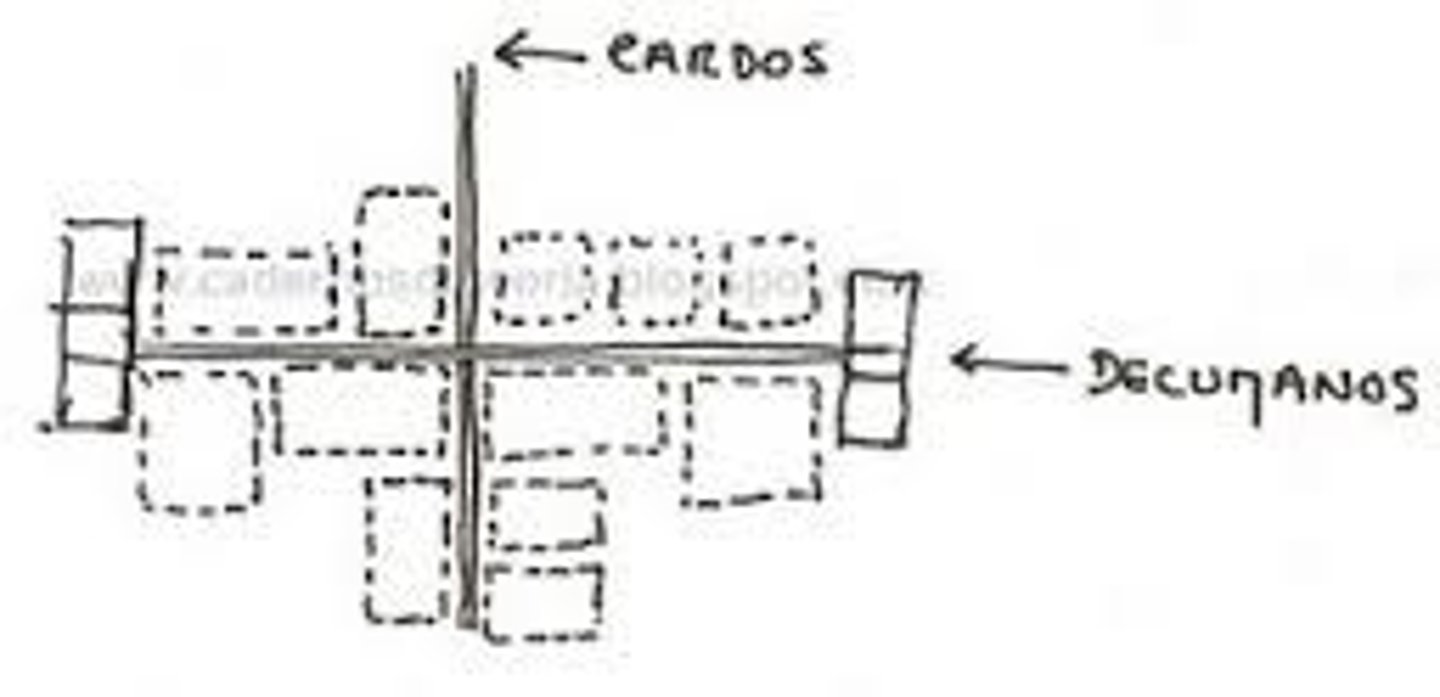
decumanus
The east-west street in a Roman town, intersecting the cardo at right angles
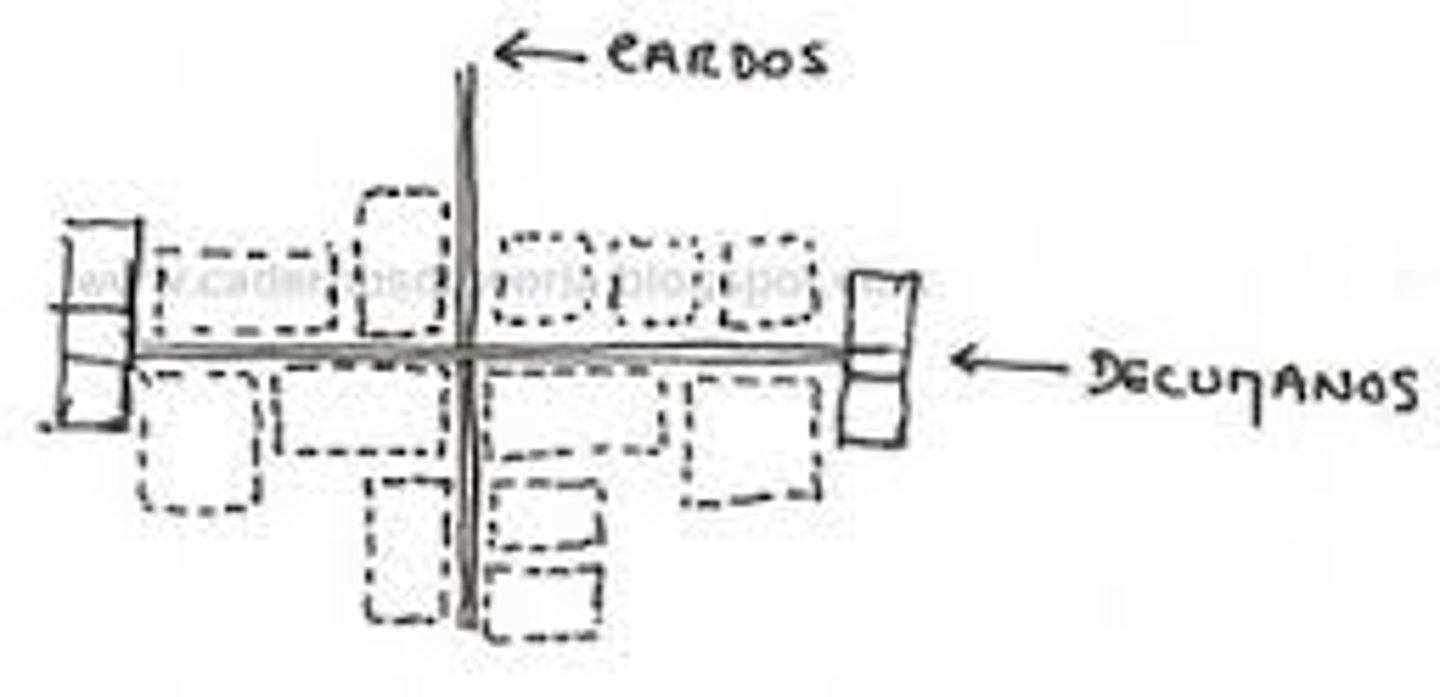
amphitheater
an oval large stadium with tiers of seats
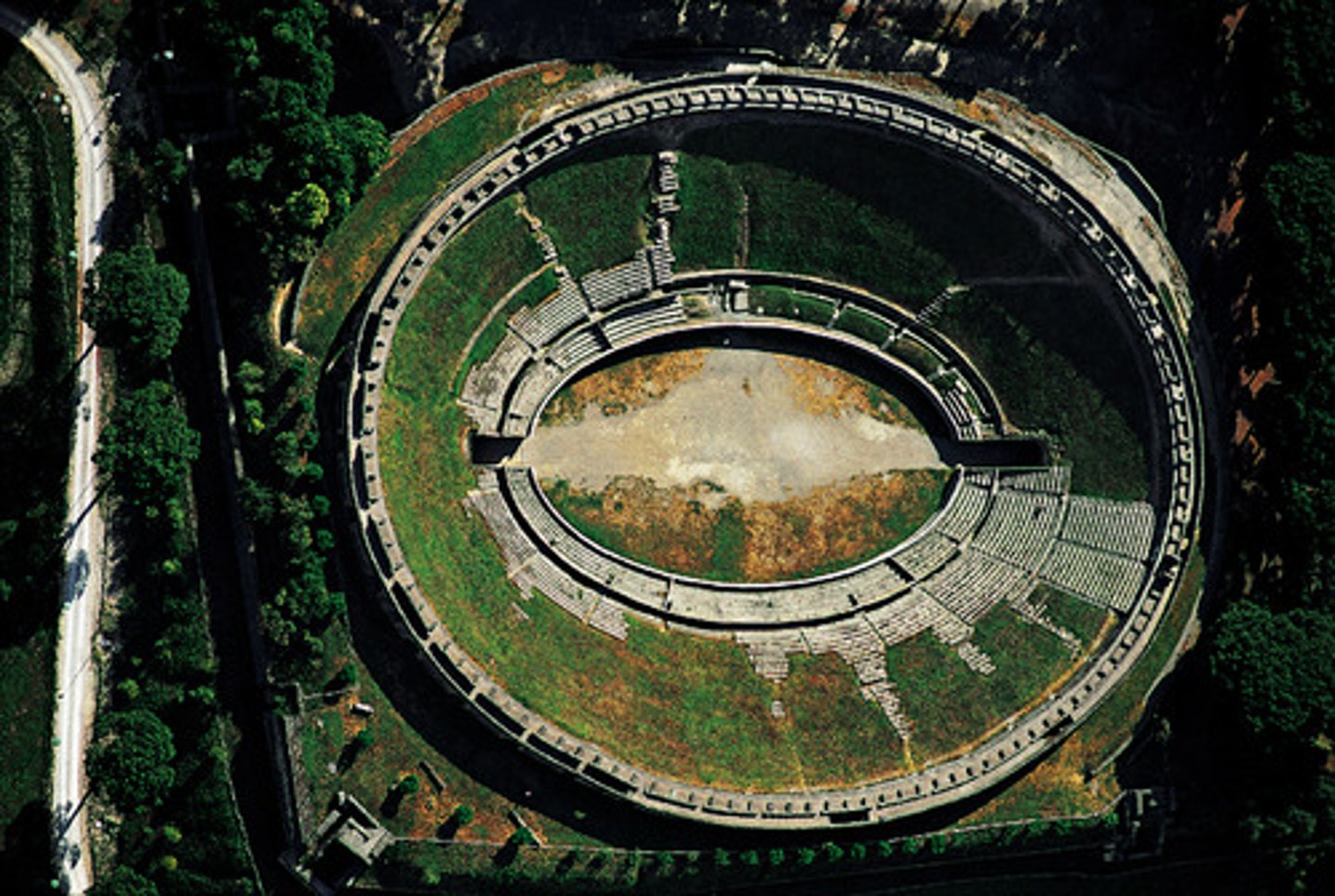
triumphal arch
In Roman architecture, a freestanding arch commemorating an important event, such as a military victory or the as a gate opening to another roman town
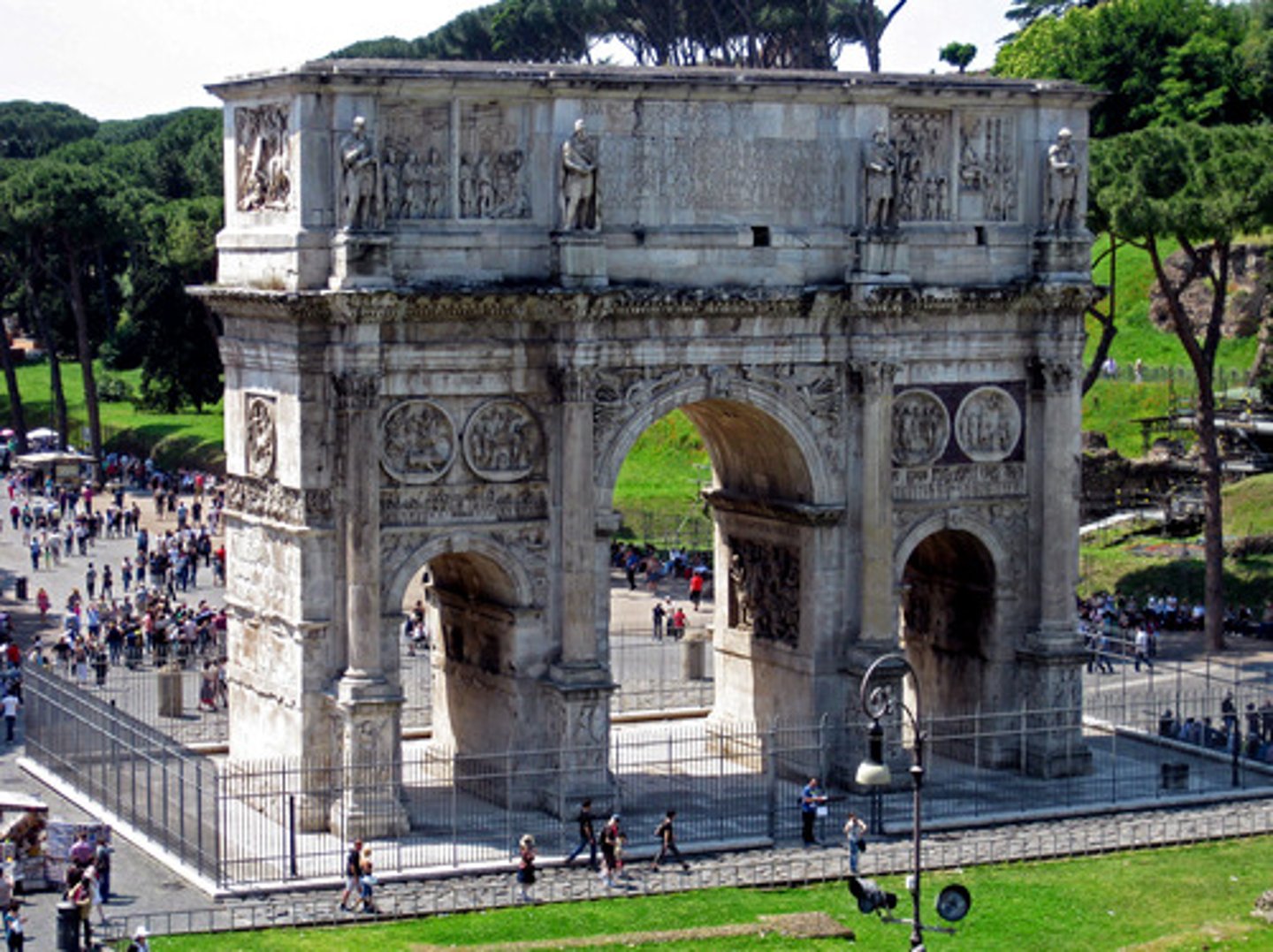
House of the Surgeon, Pompeii, Italy, 80 CE
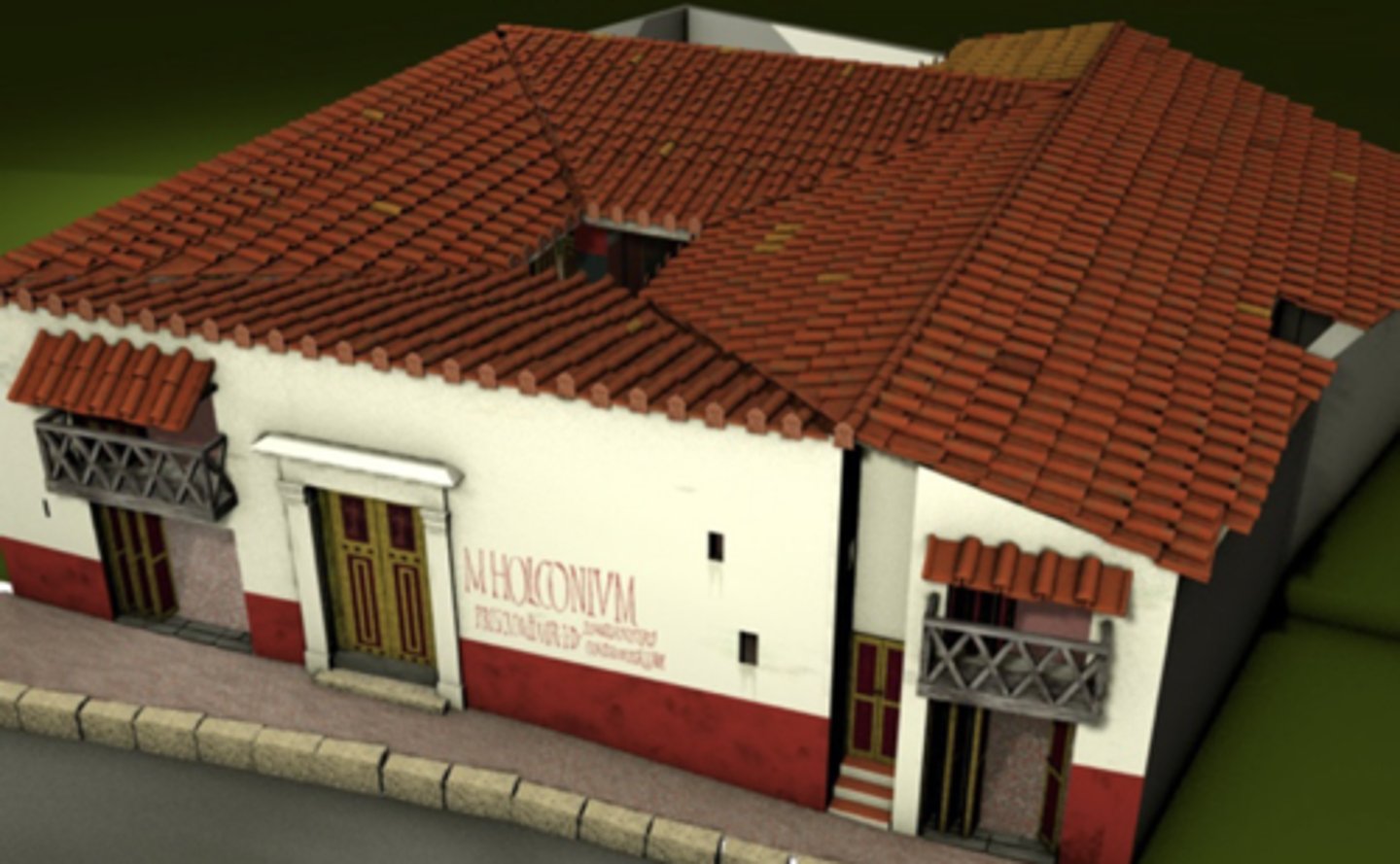
Forum Baths, Pompeii, Italy, 80 CE
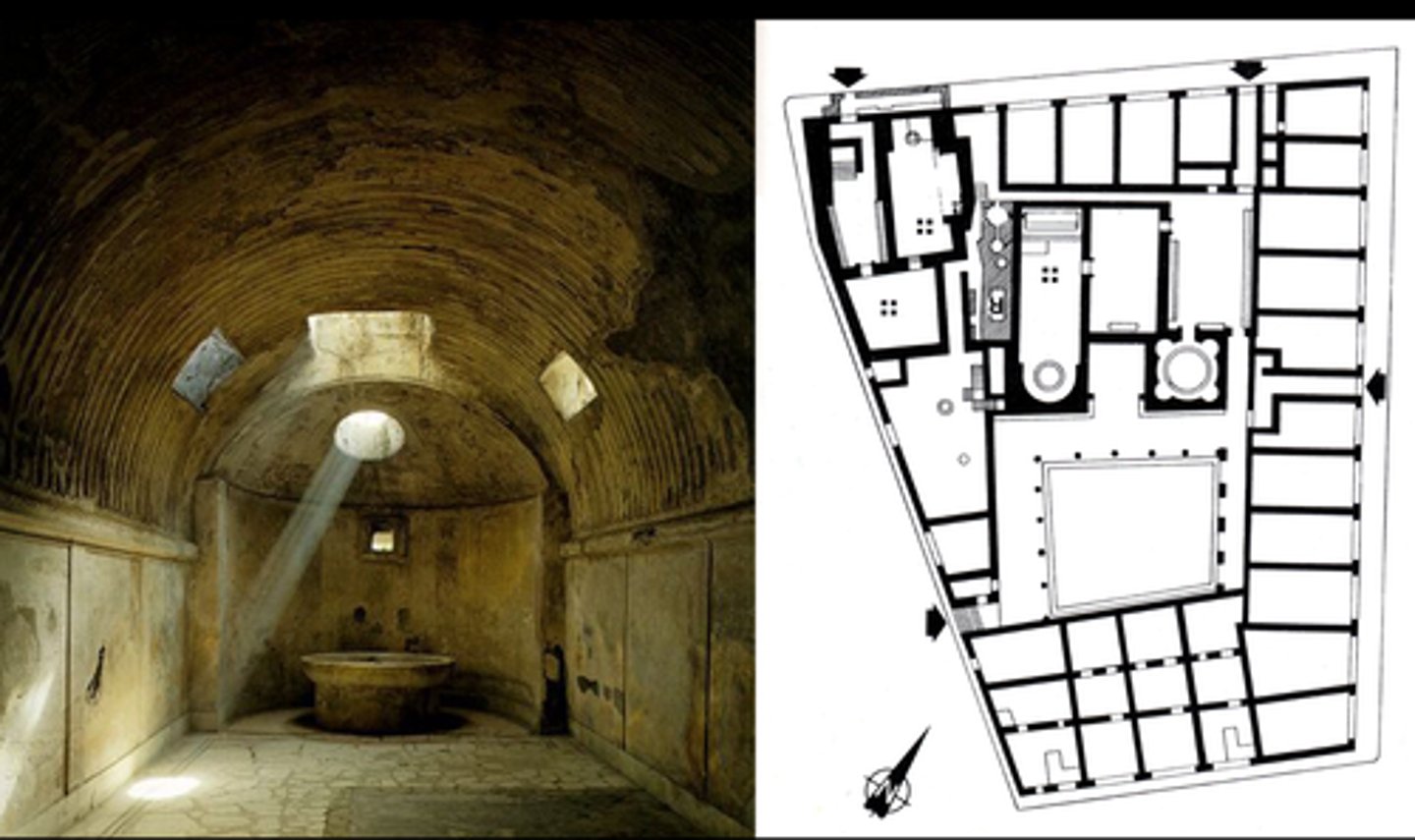
Flavian Amphitheater (Colosseum), Rome, Italy, 80 CE
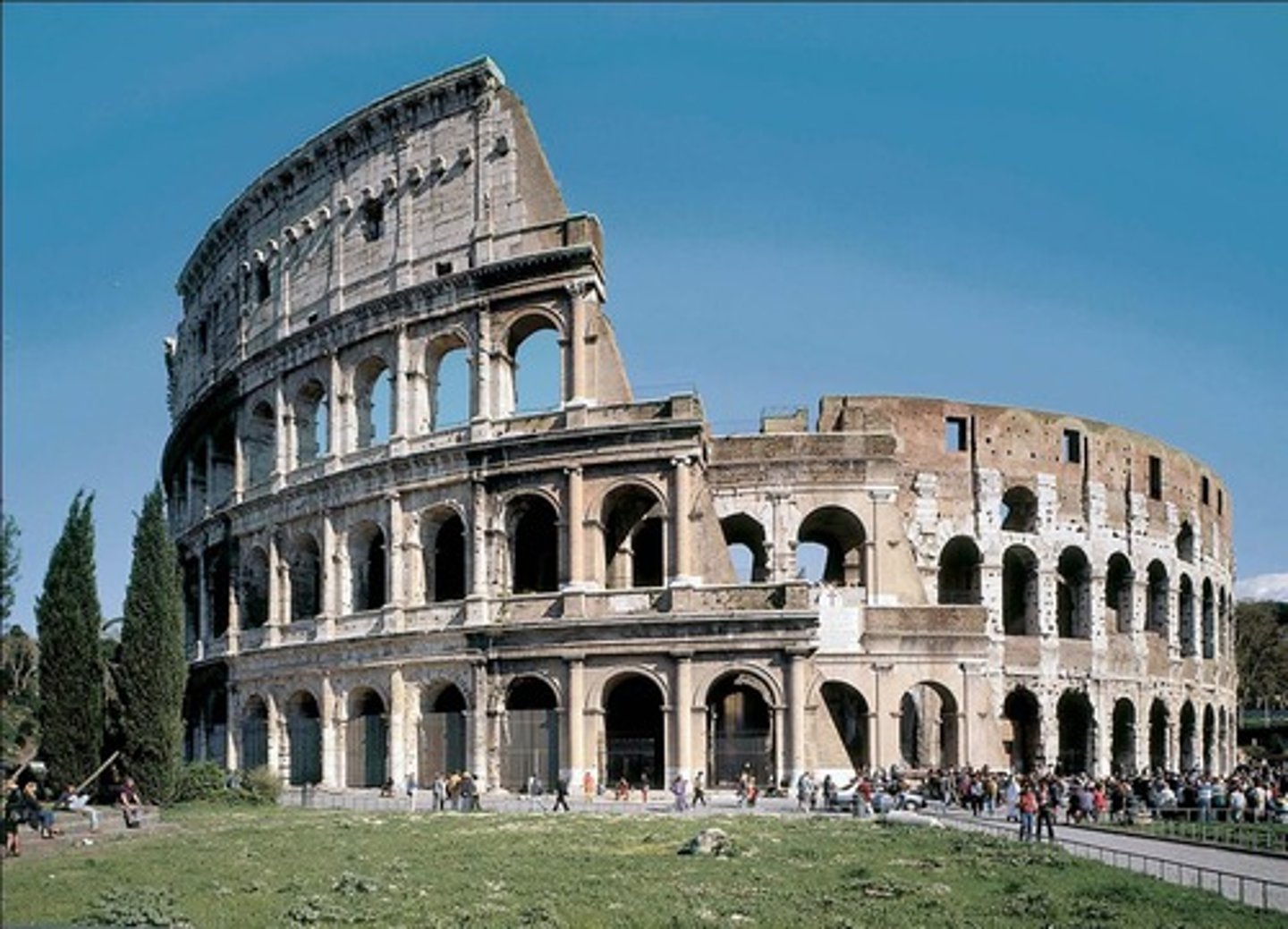
Timgad, Algeria, 100 CE
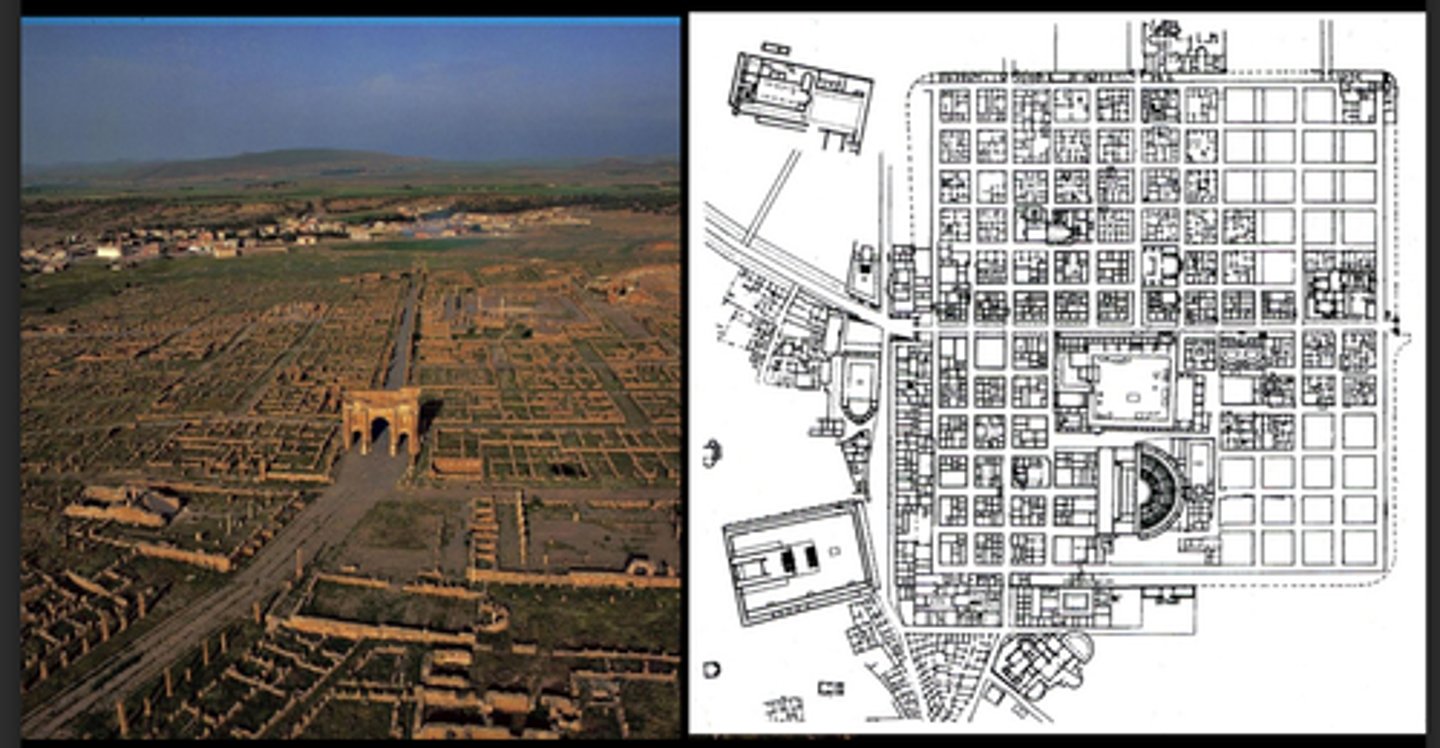
Arch of Titus, Rome, Italy, 80 CE
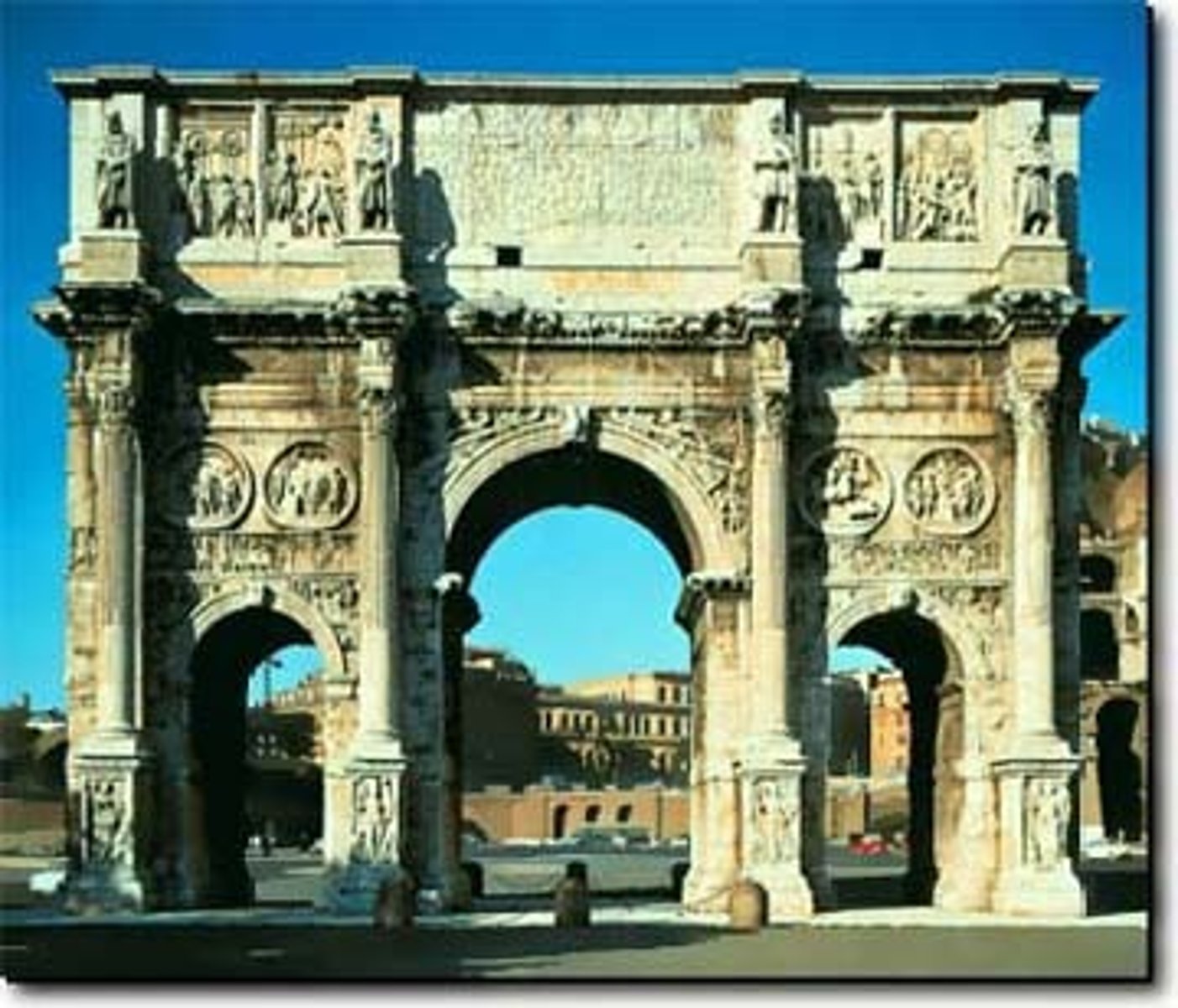
Triumphal Arch, Orange, France, 10 CE
